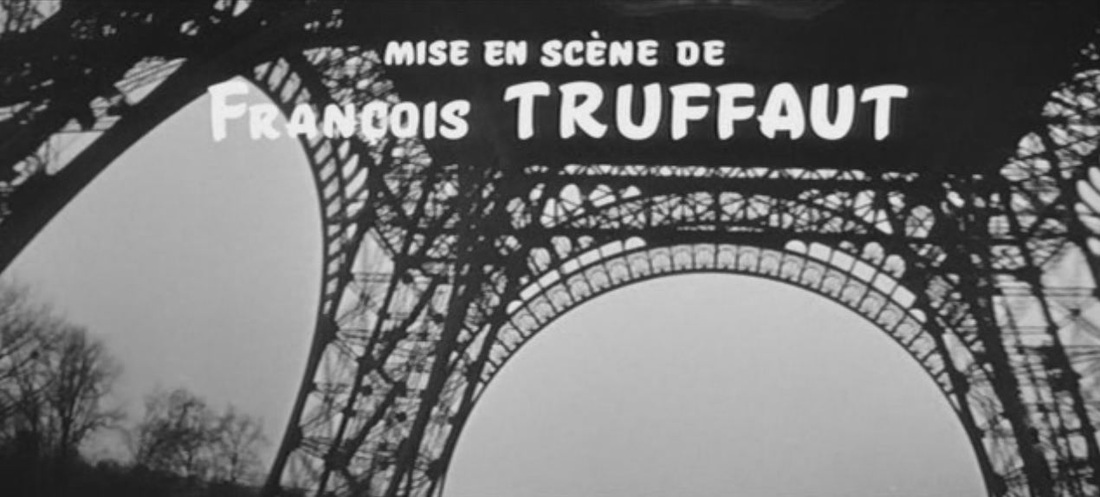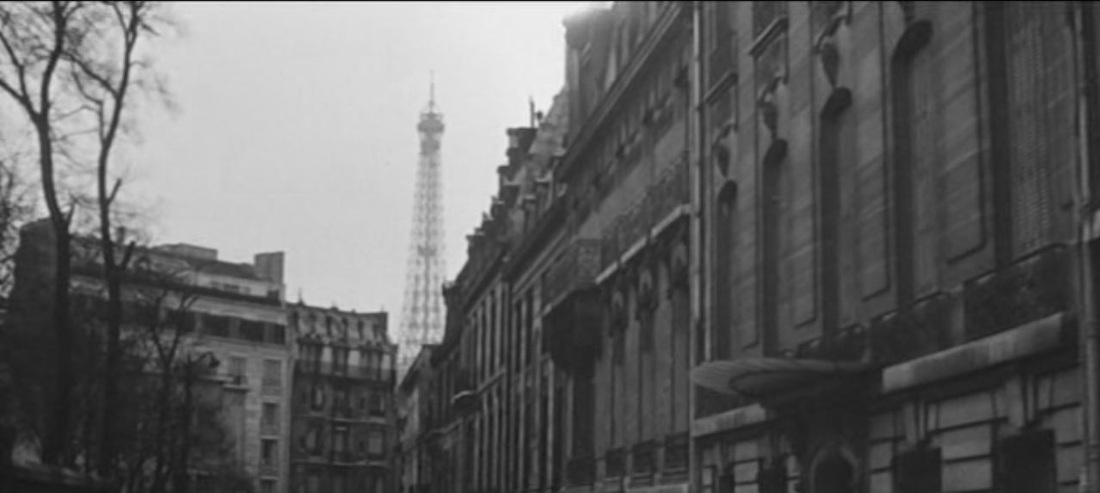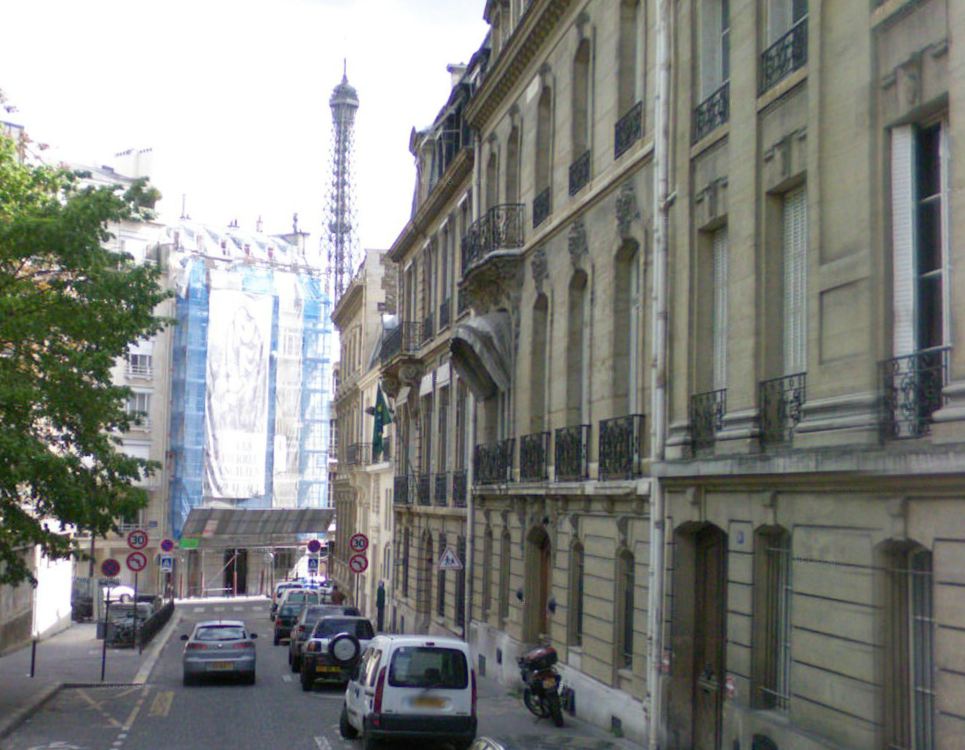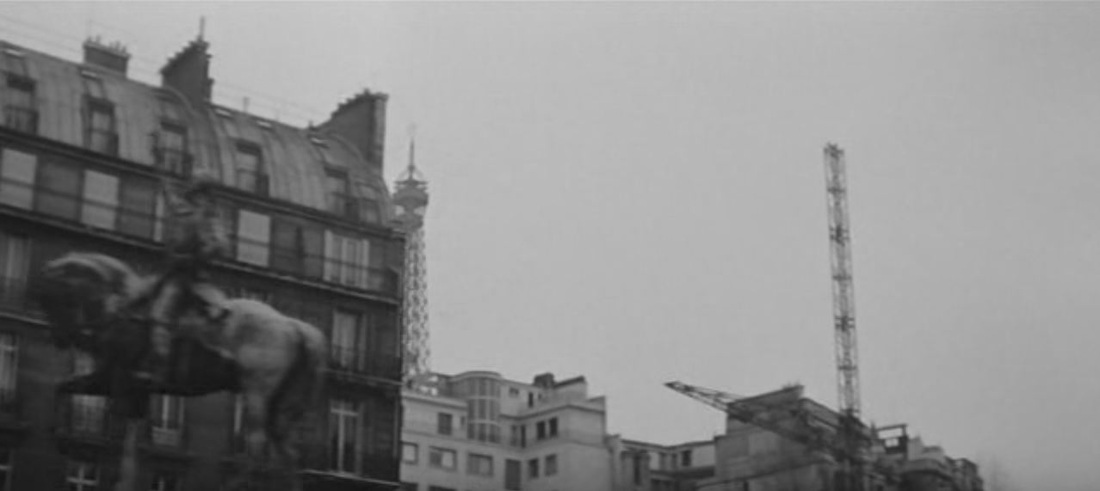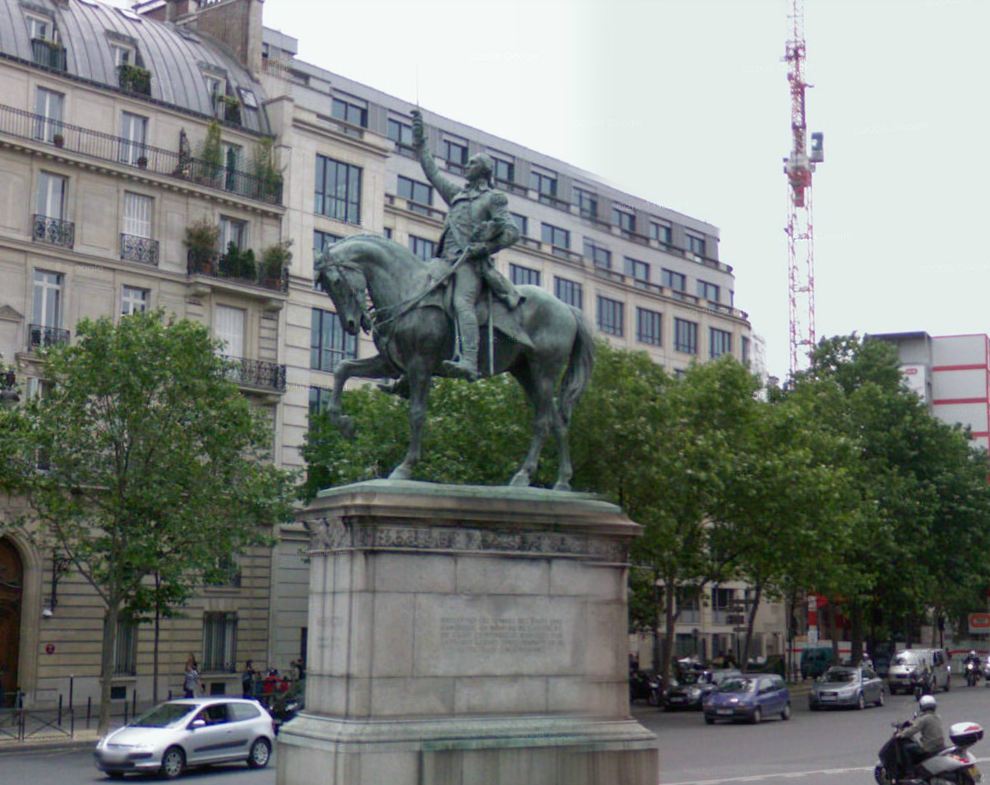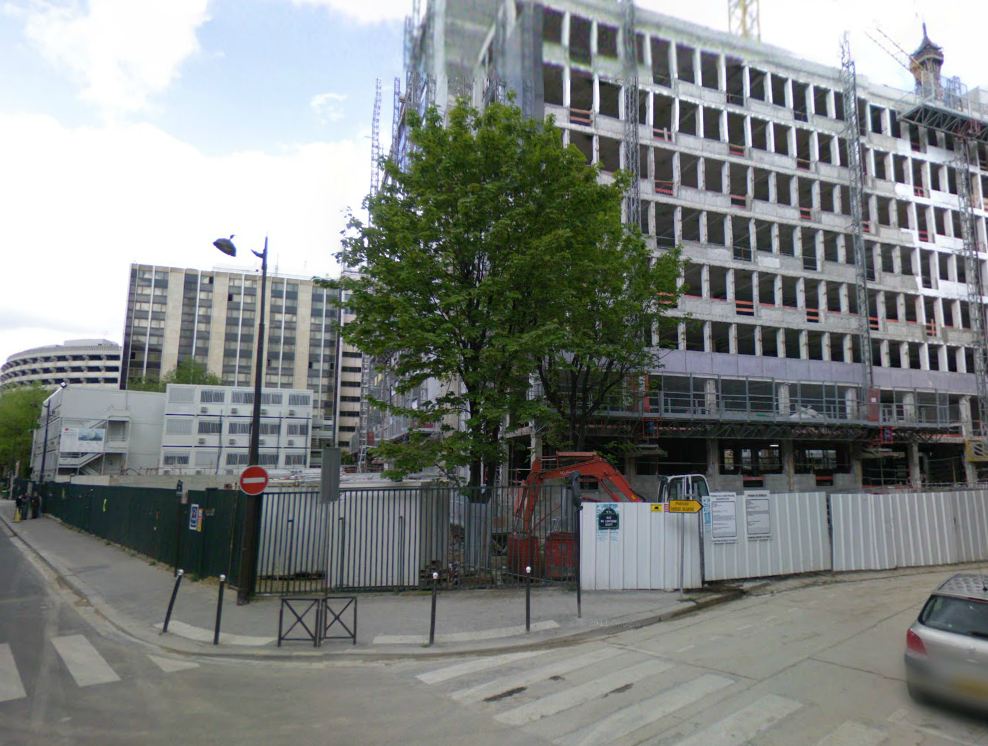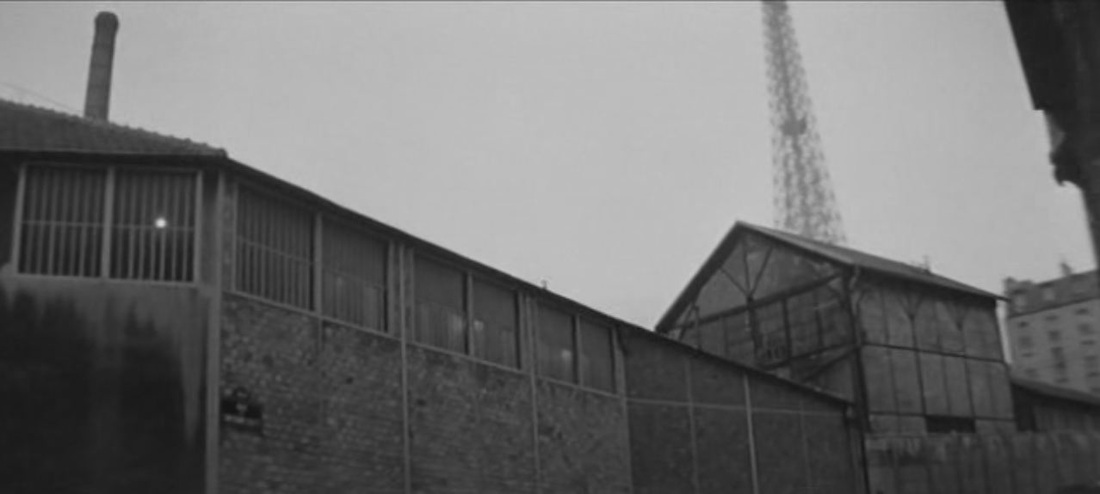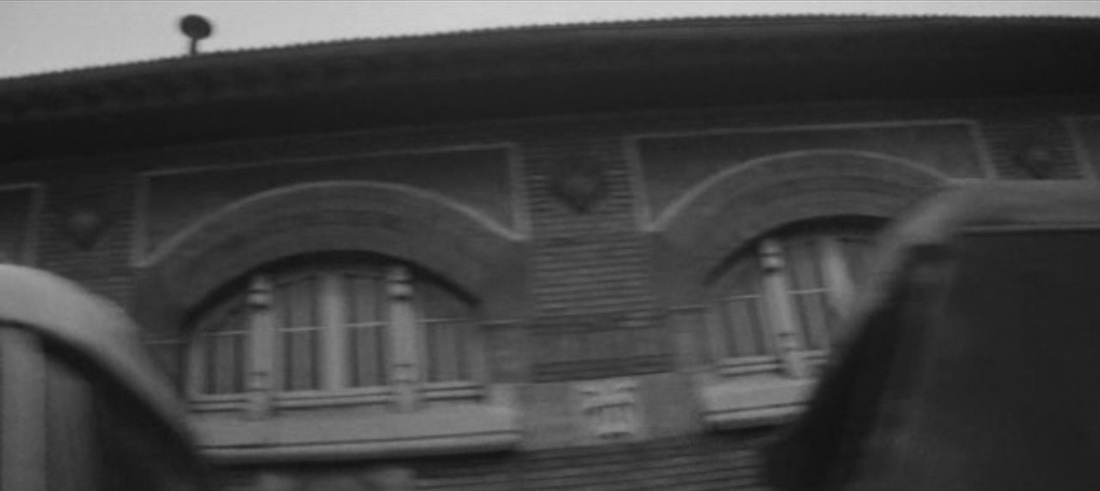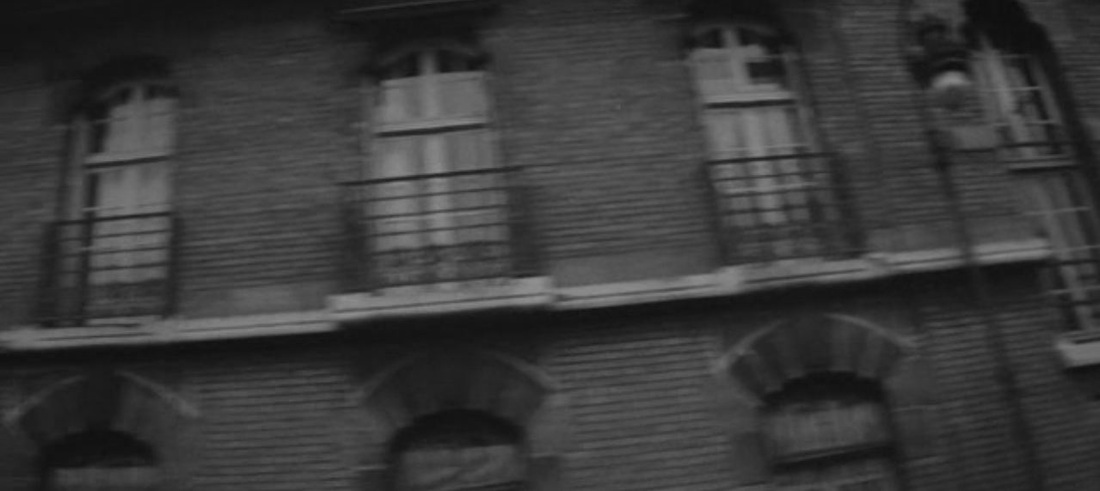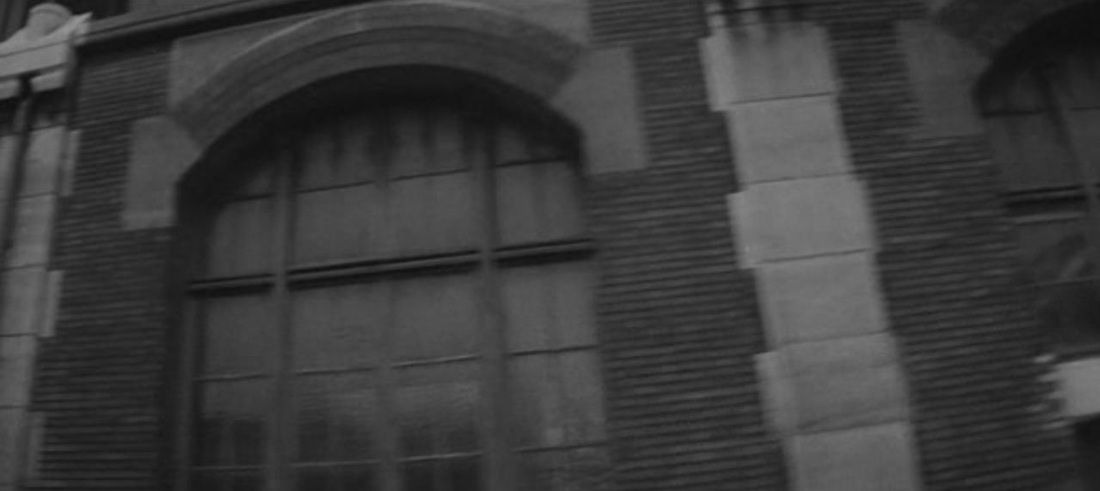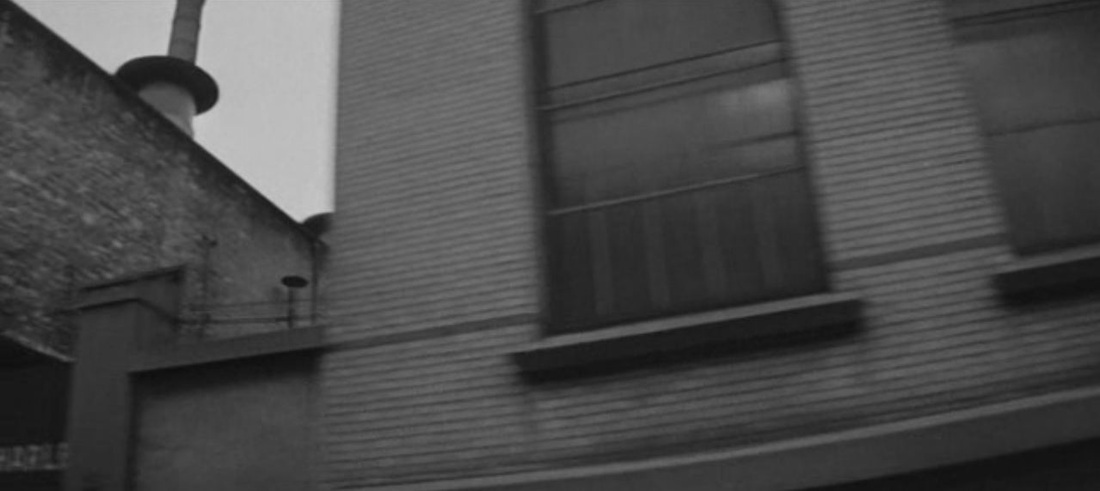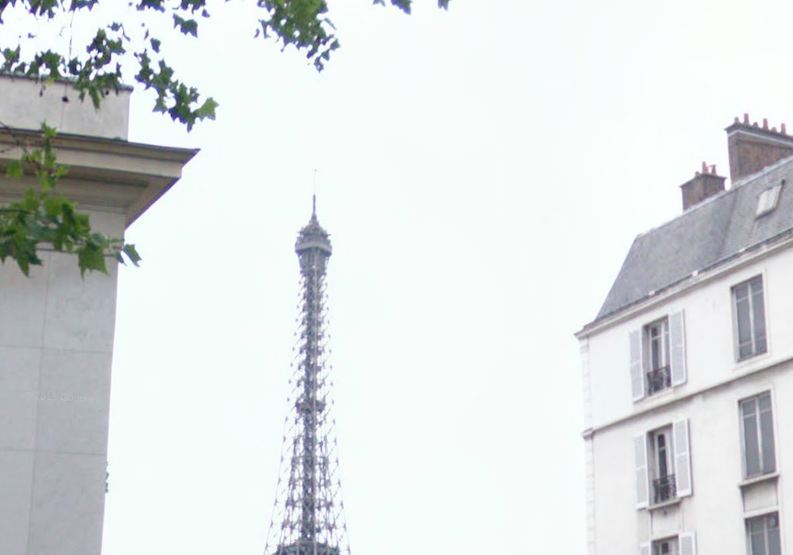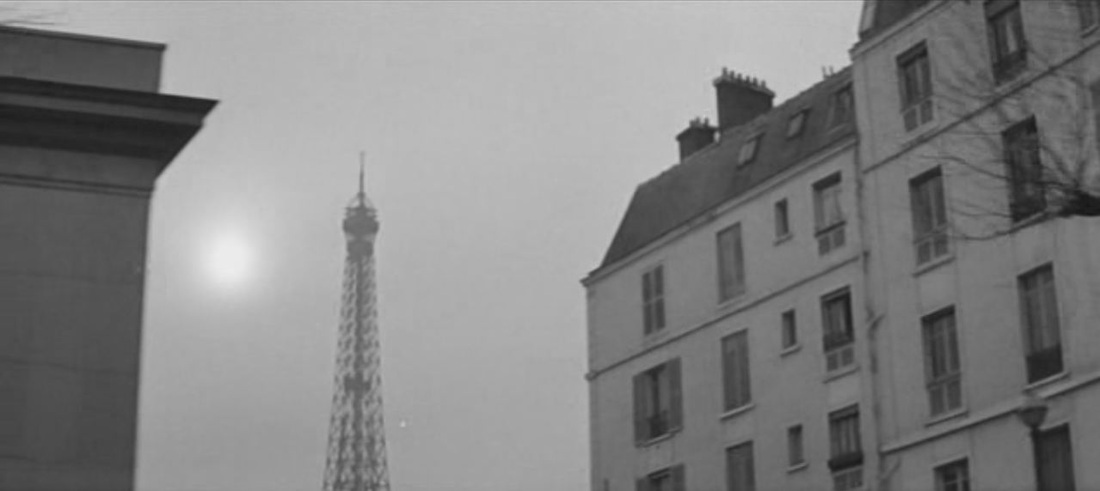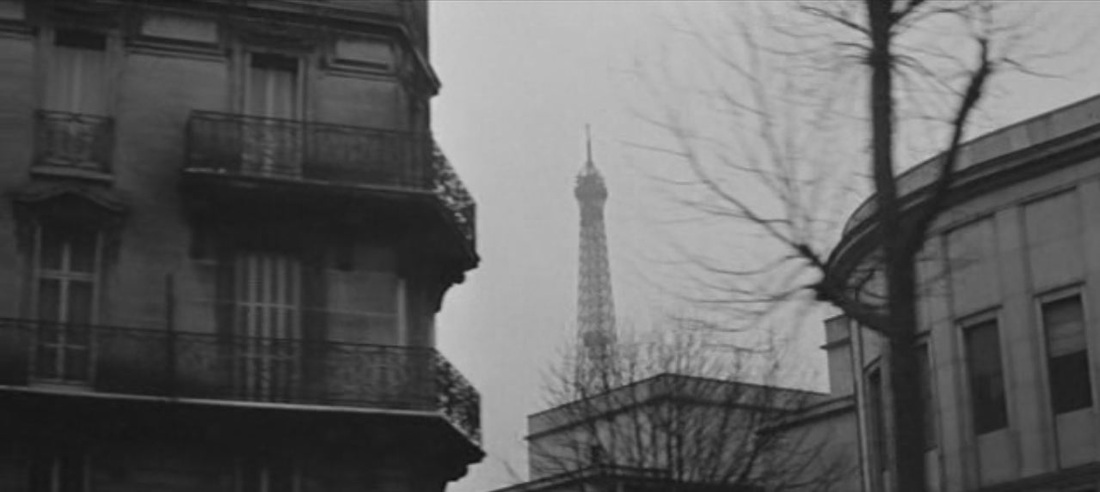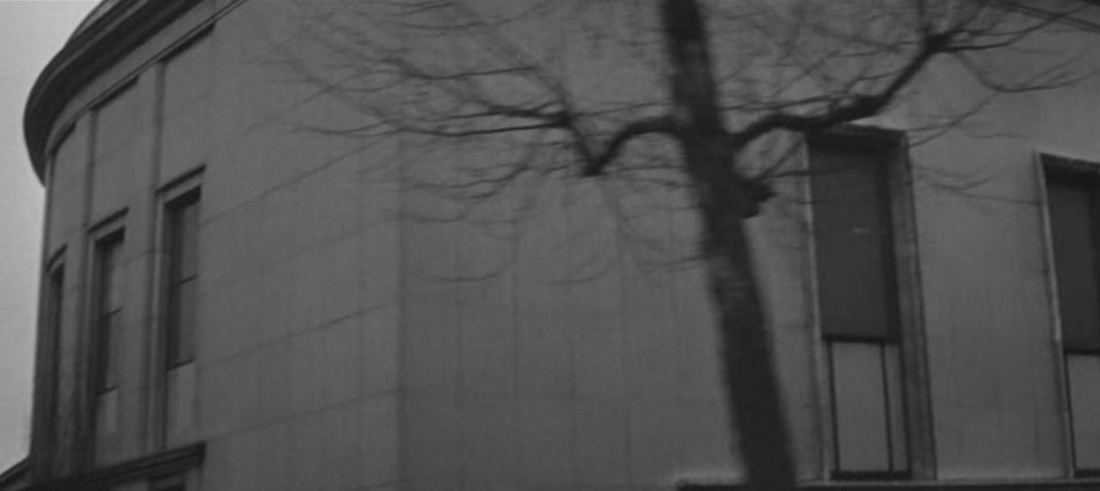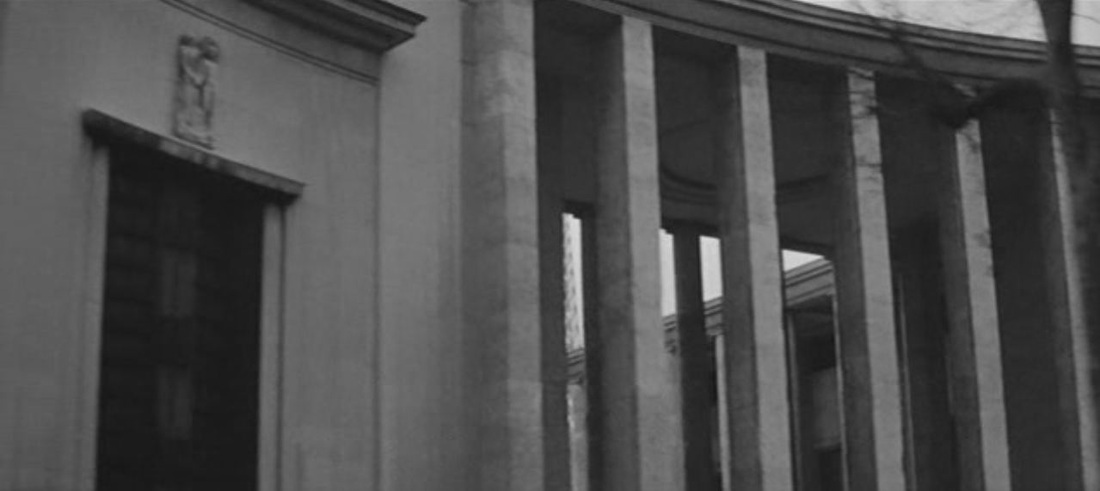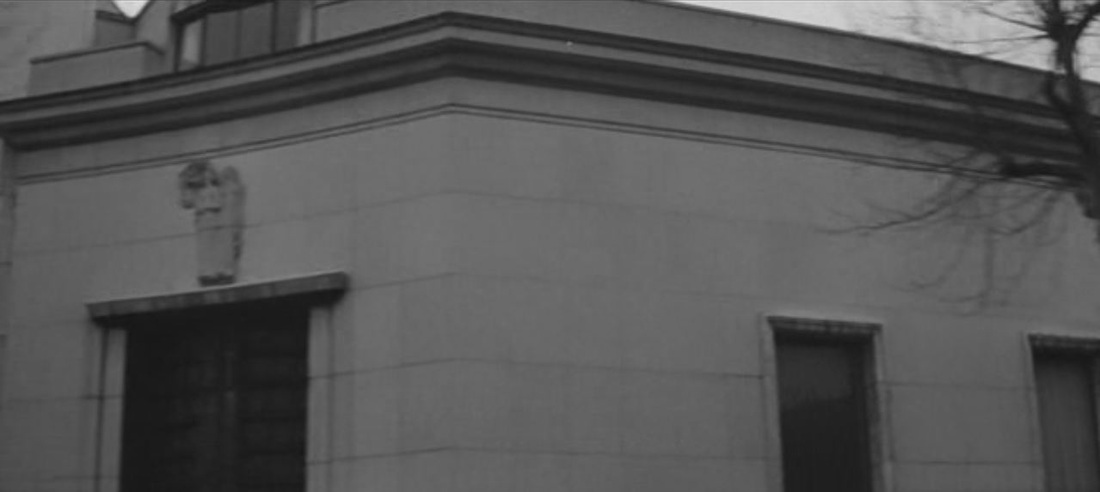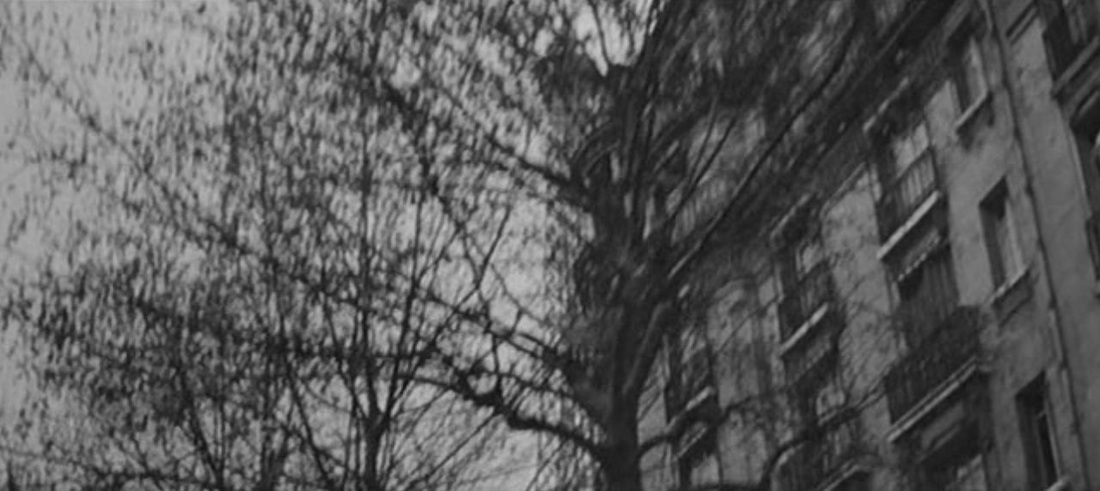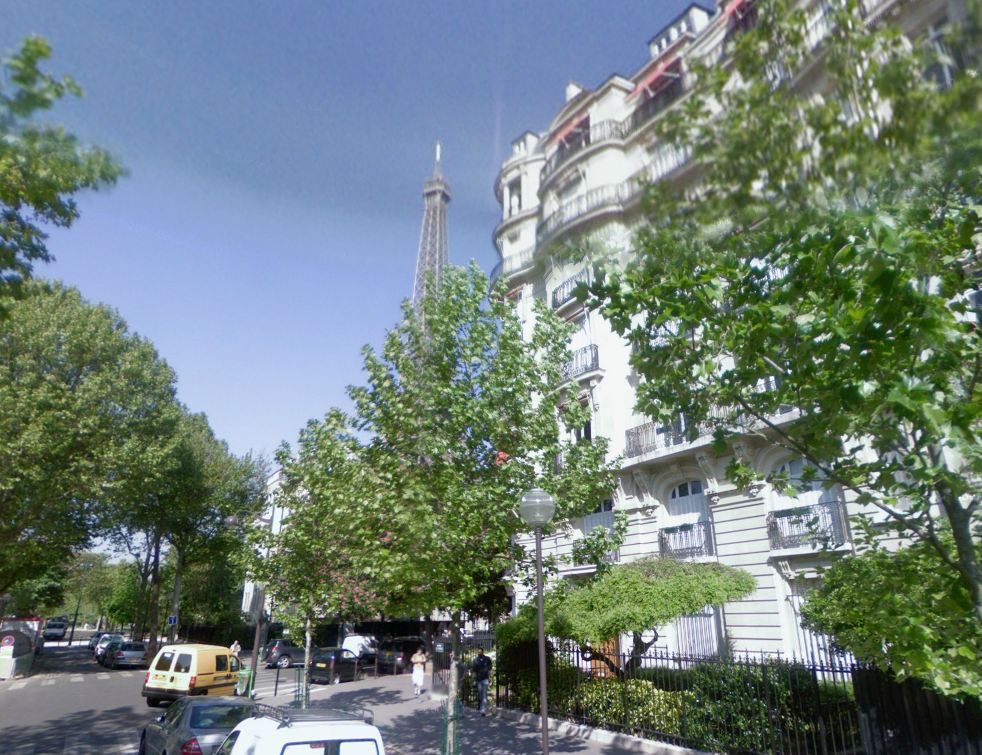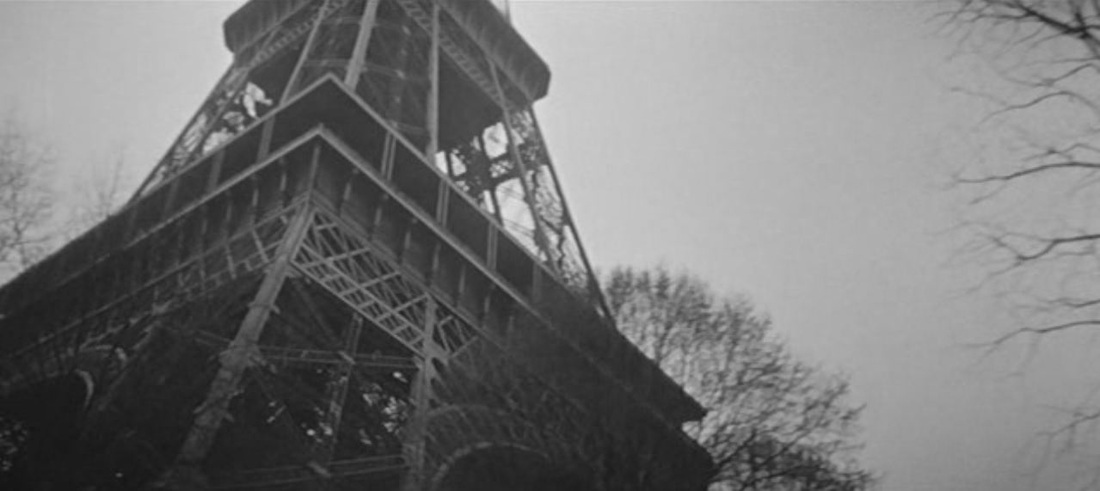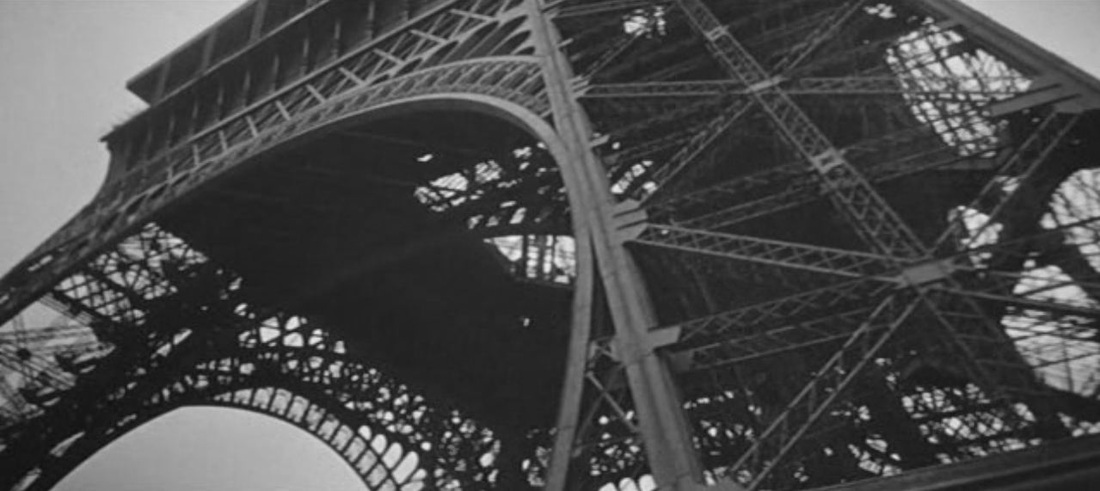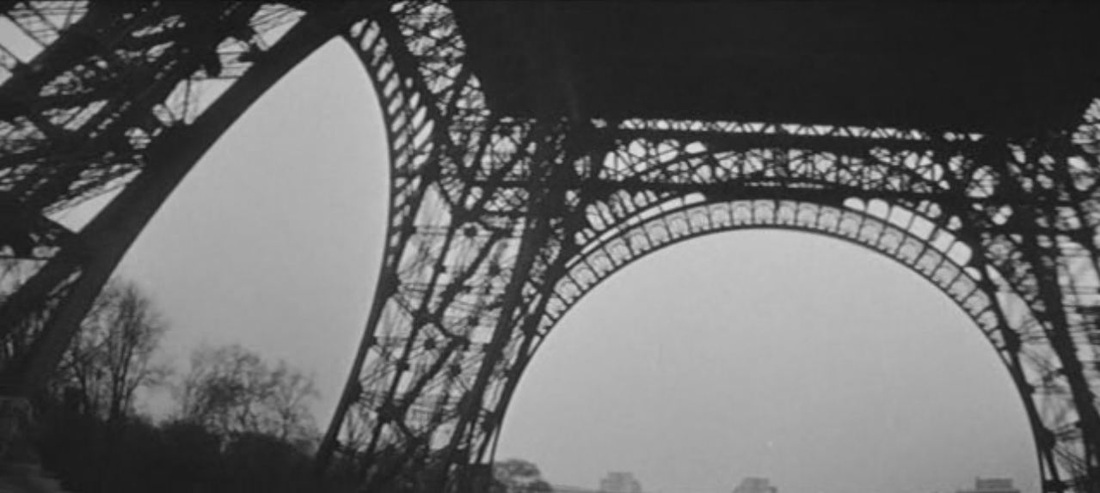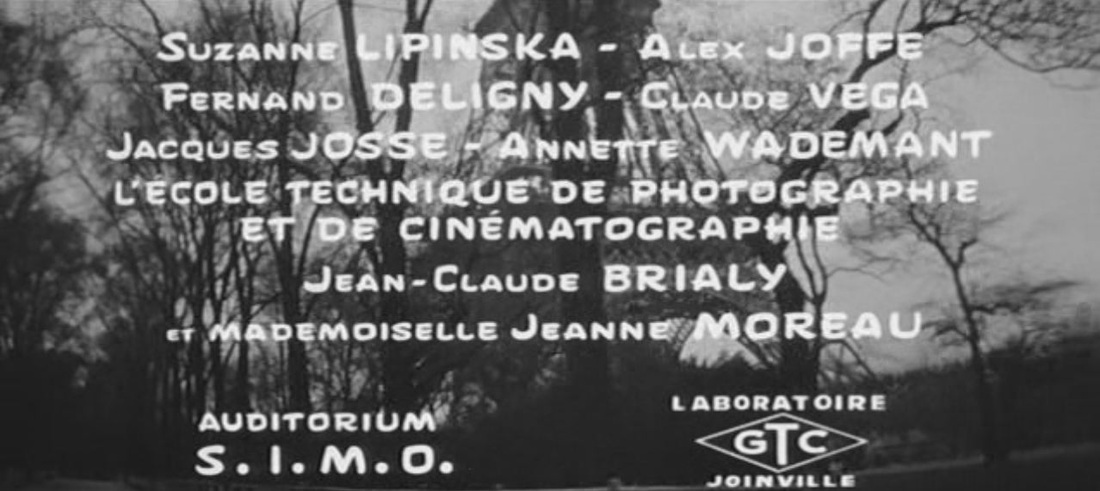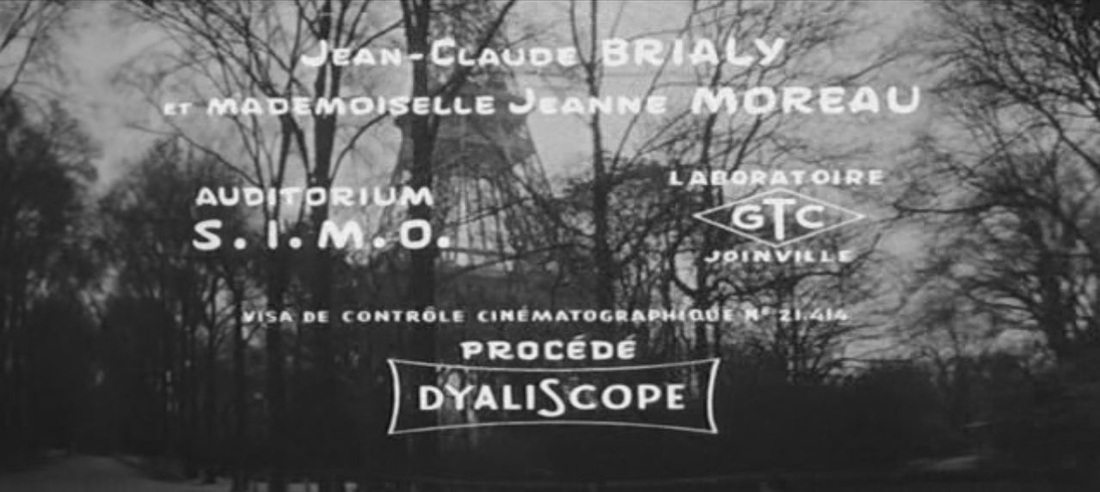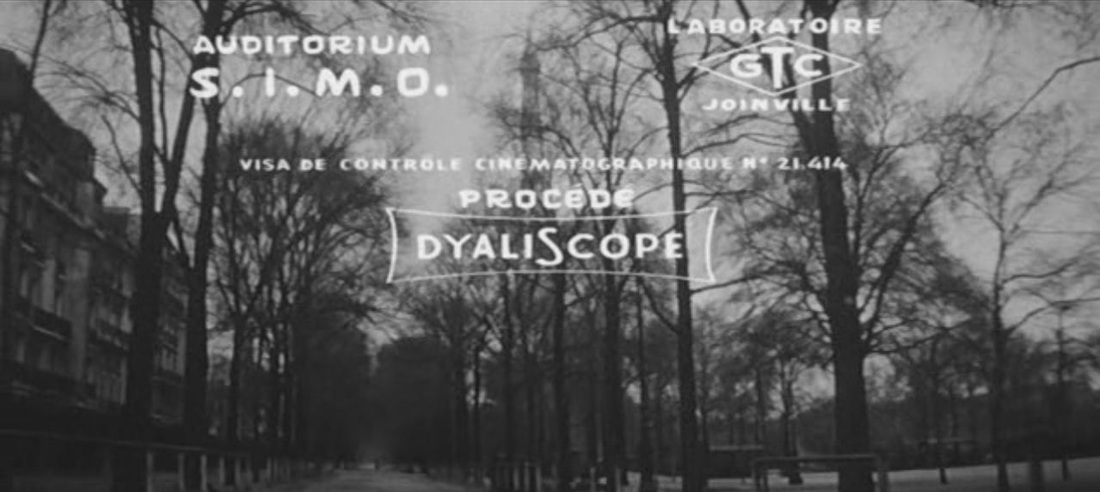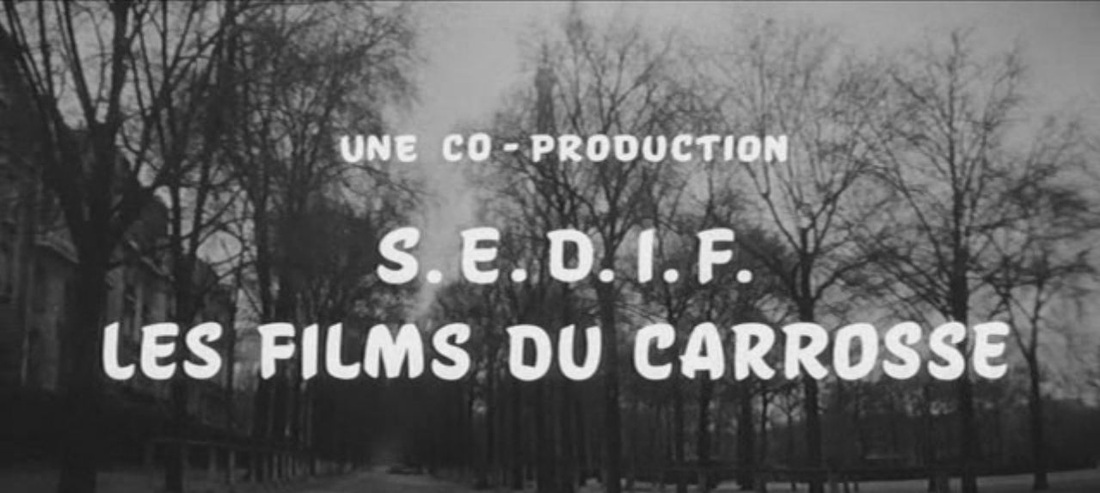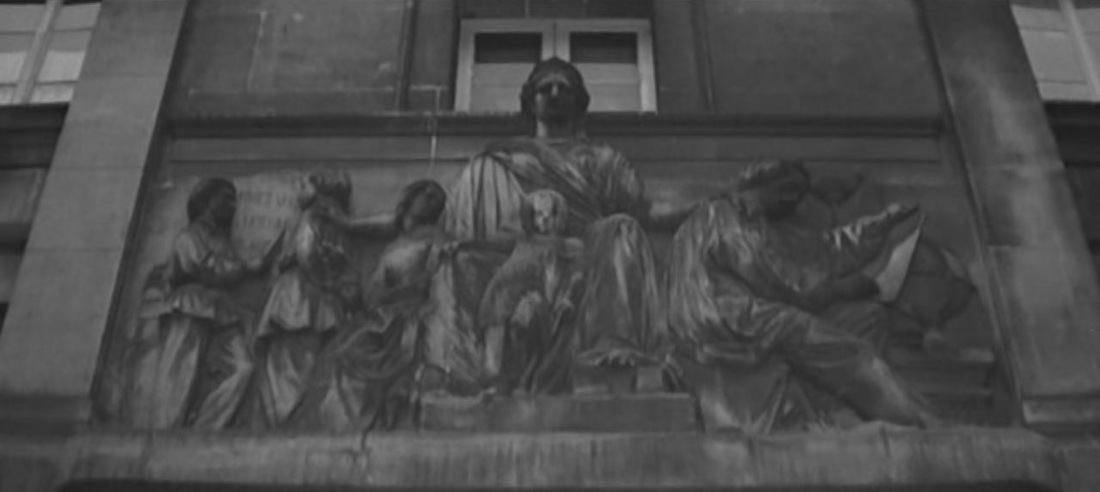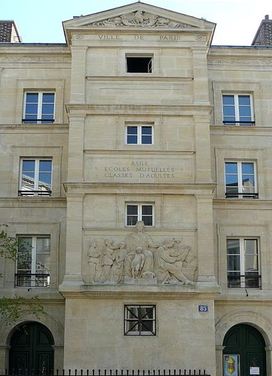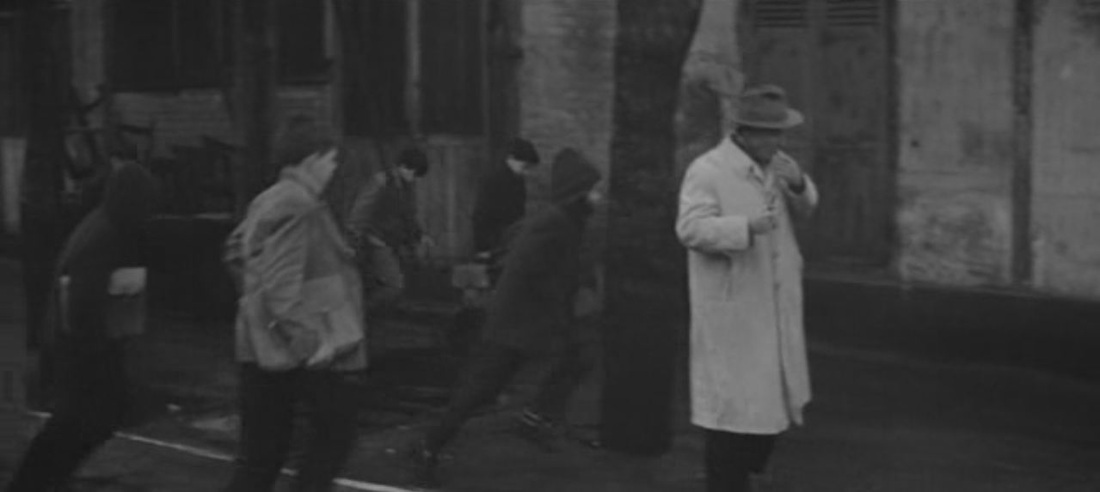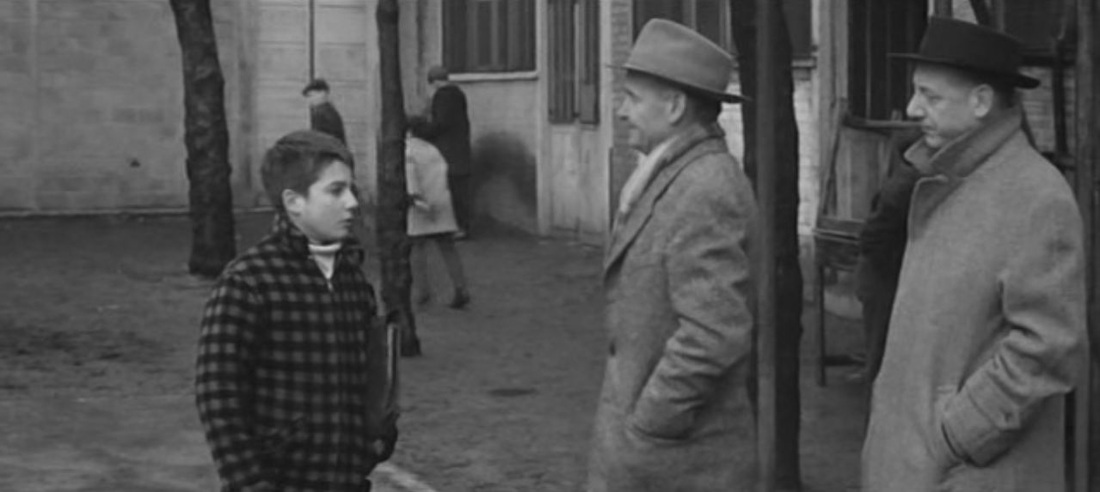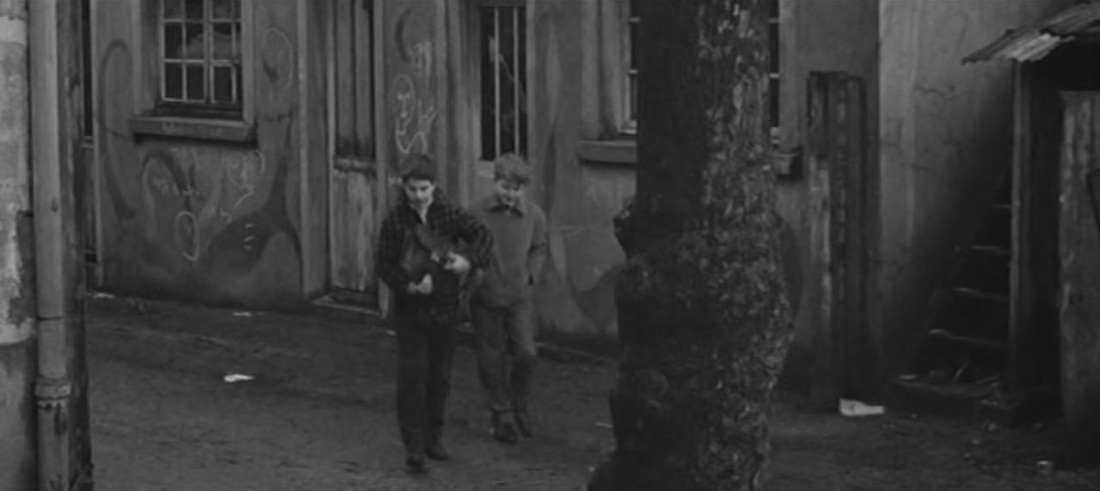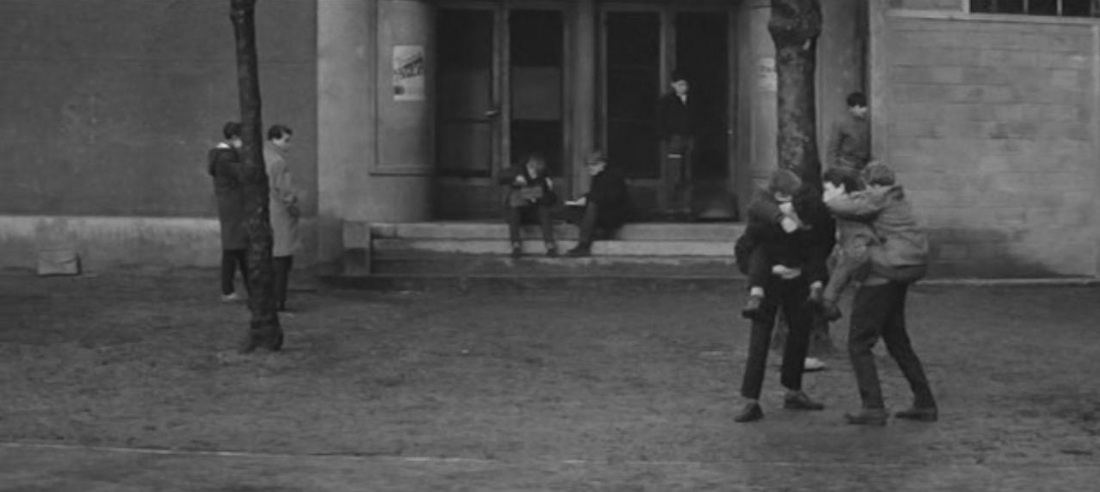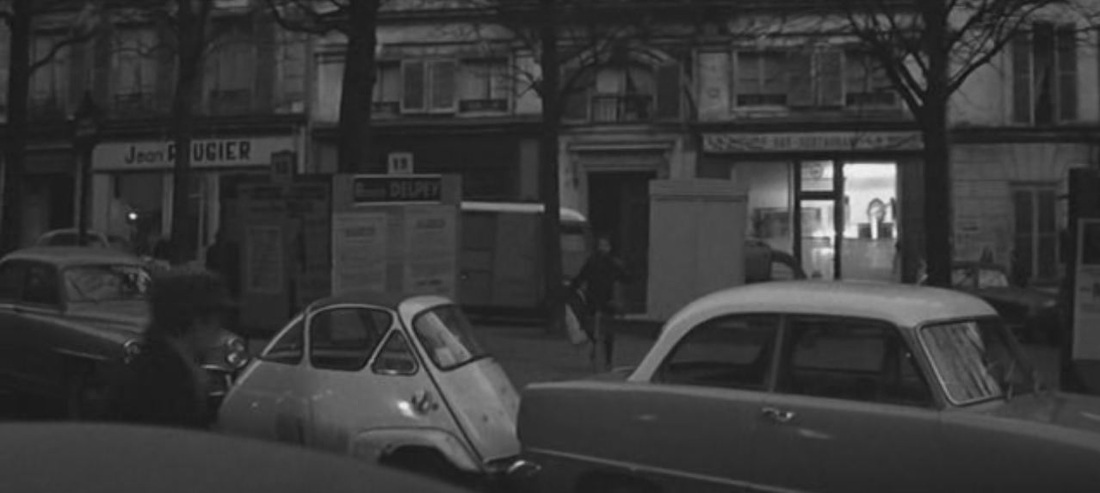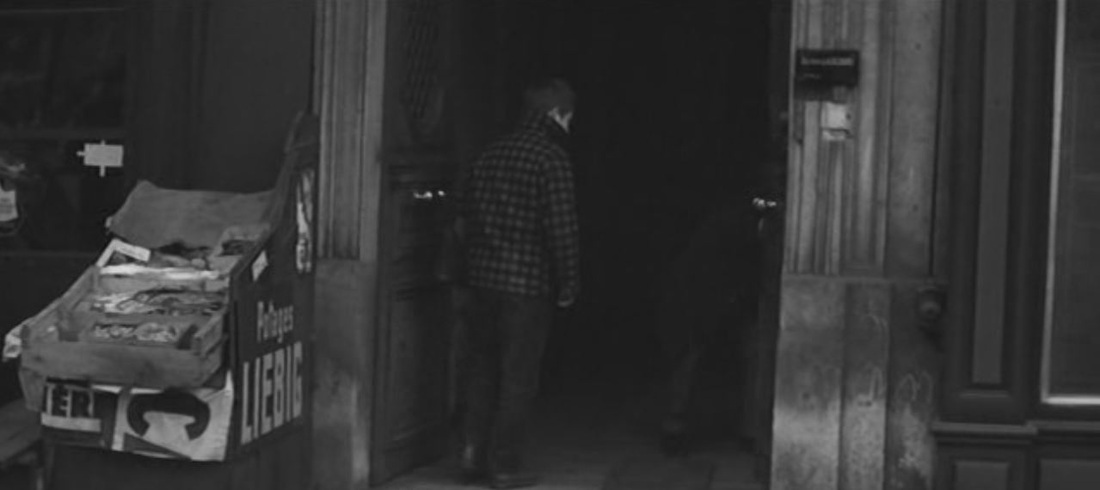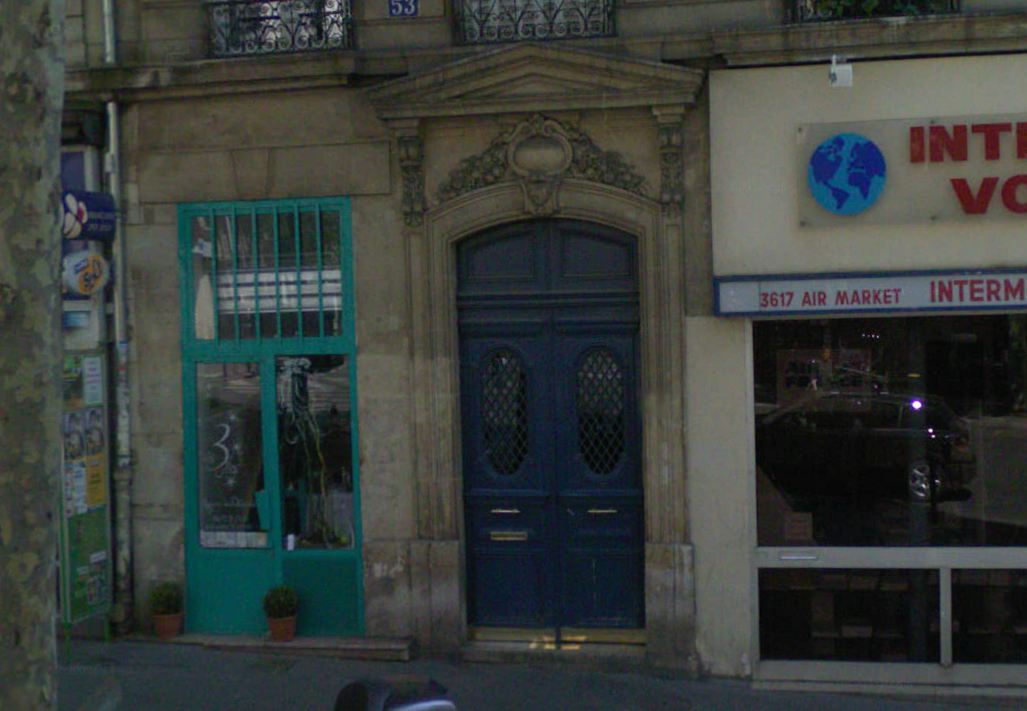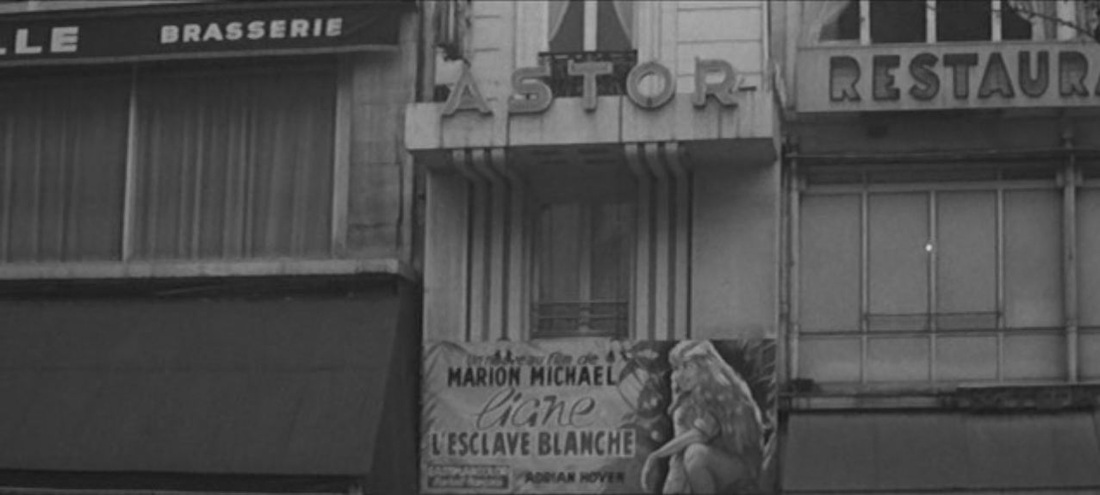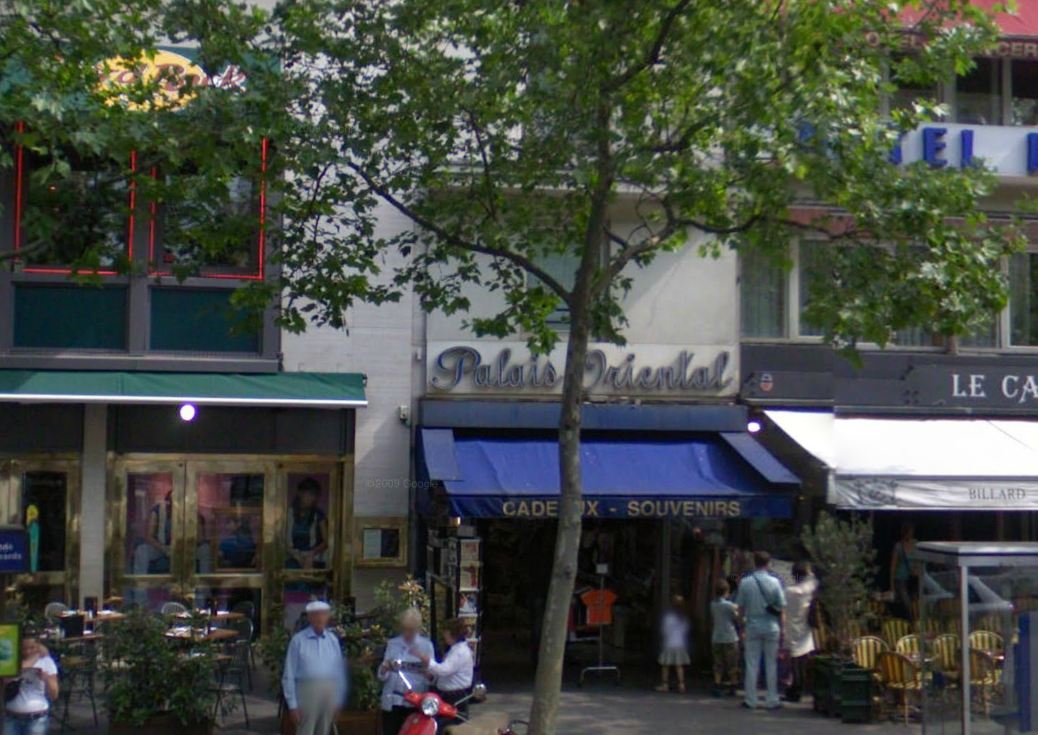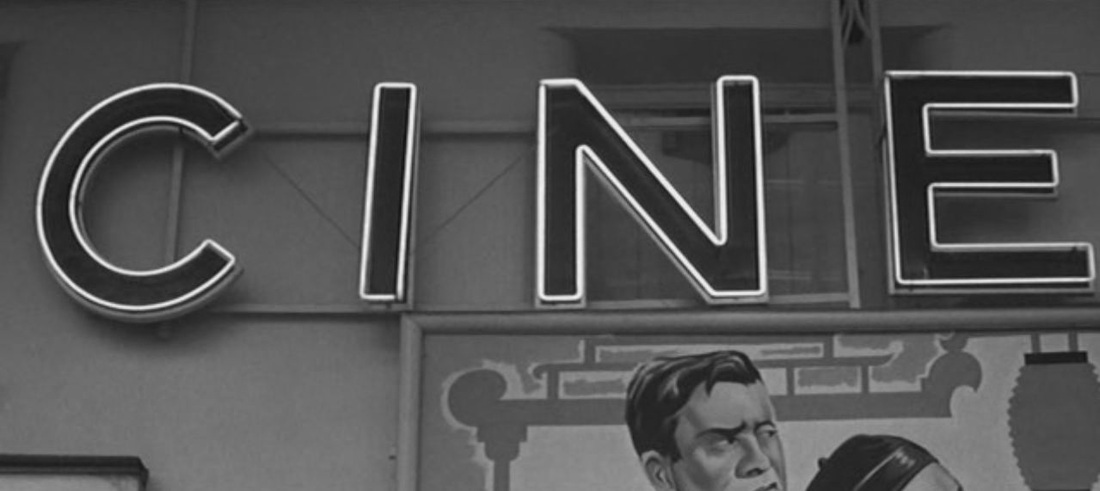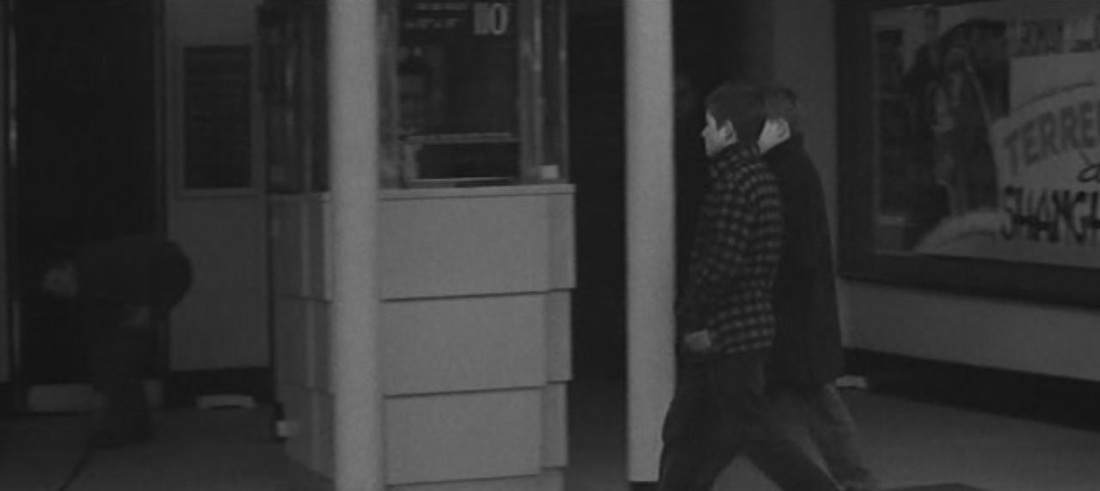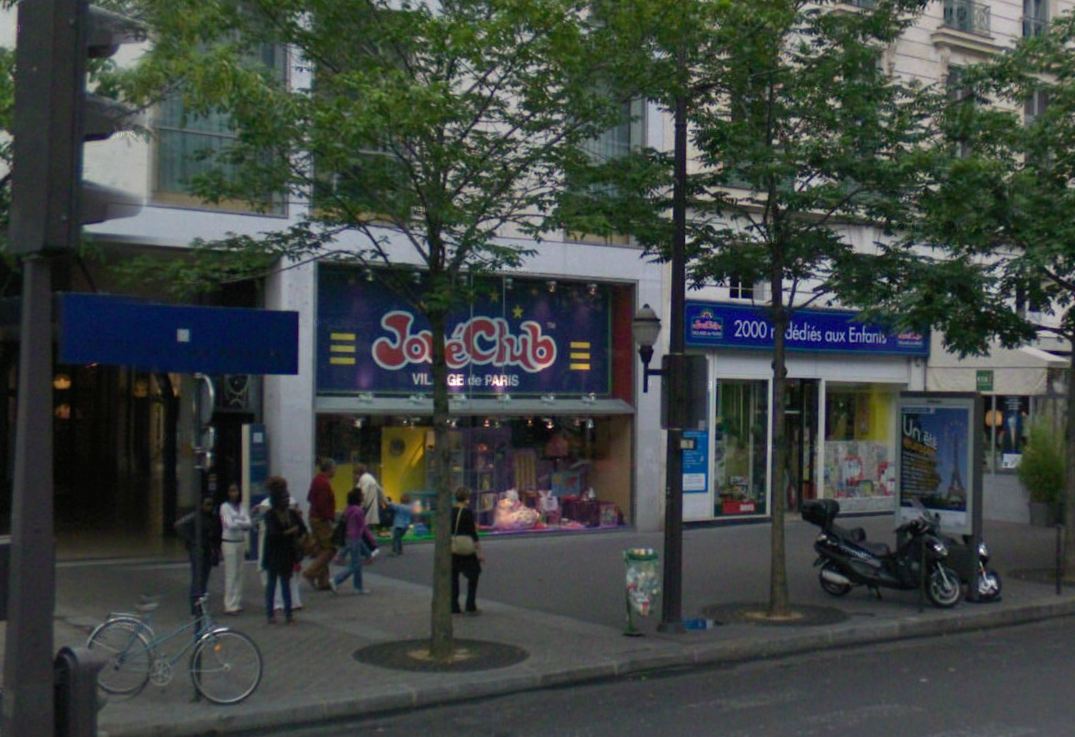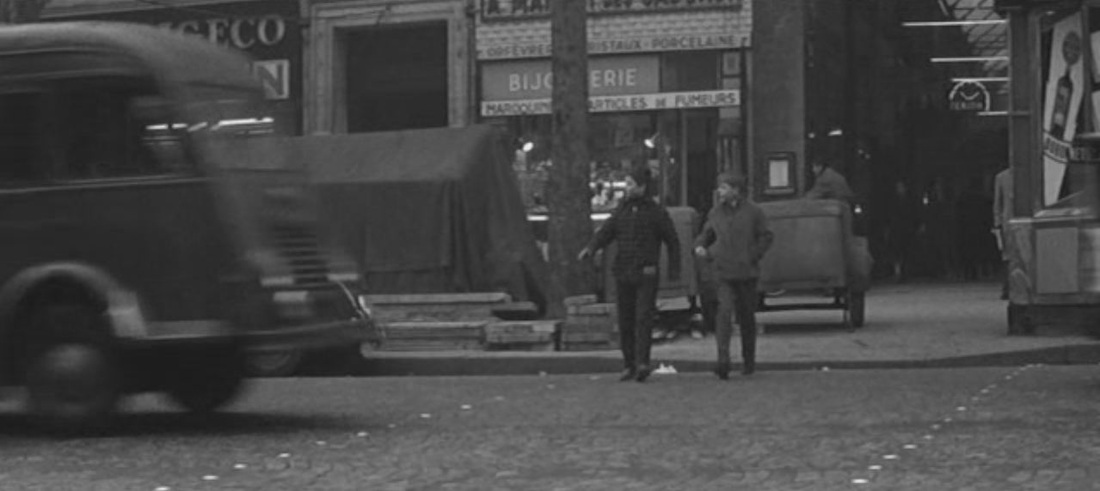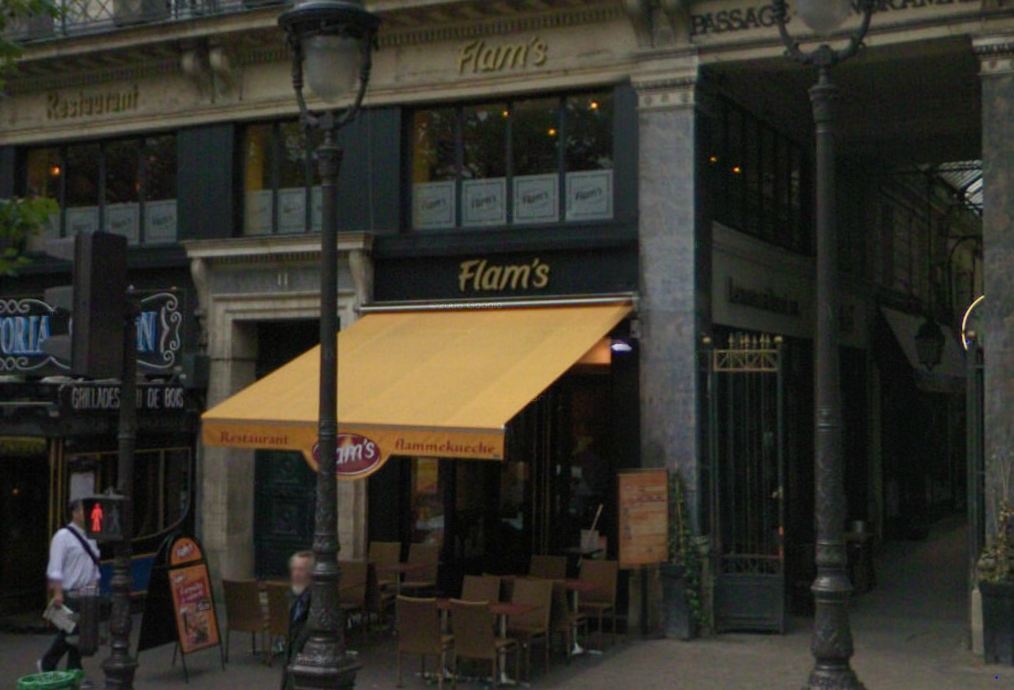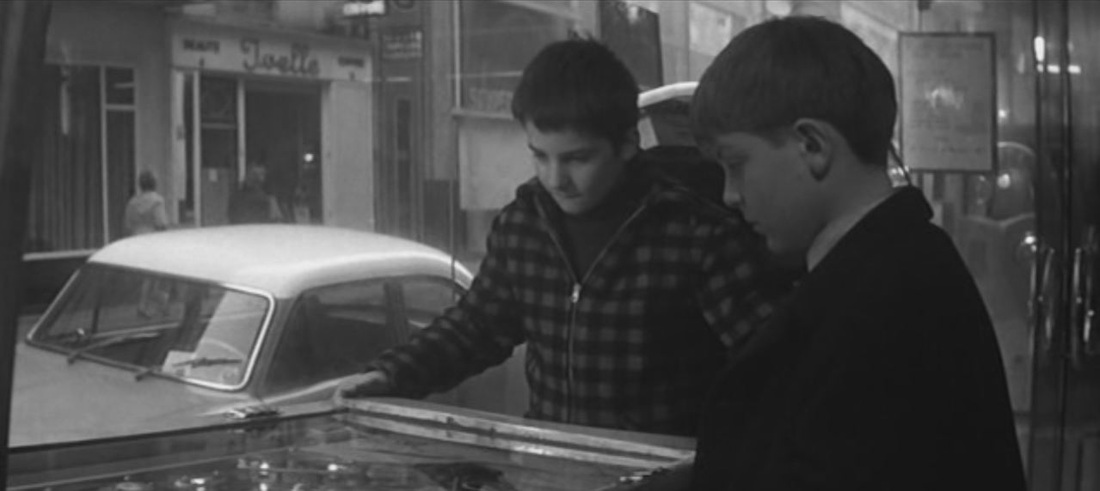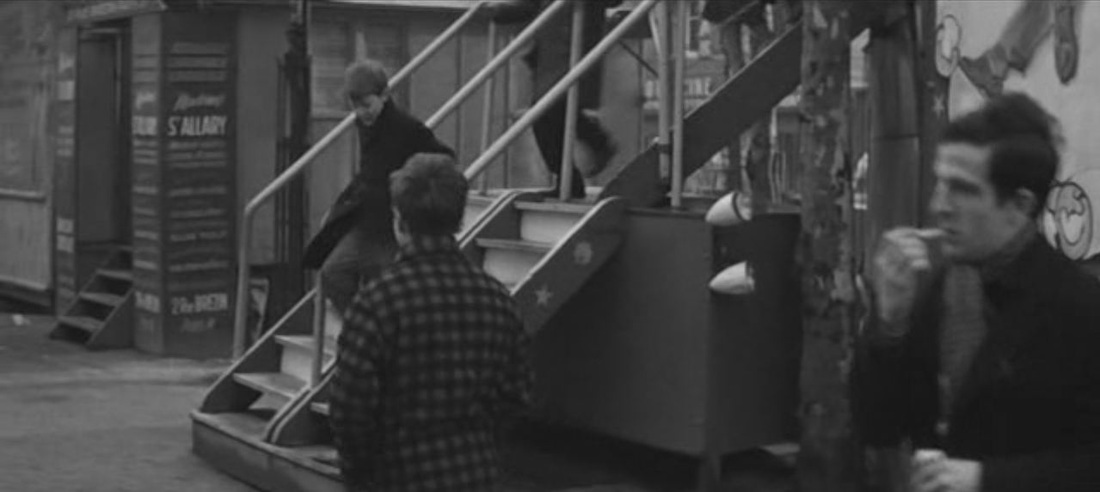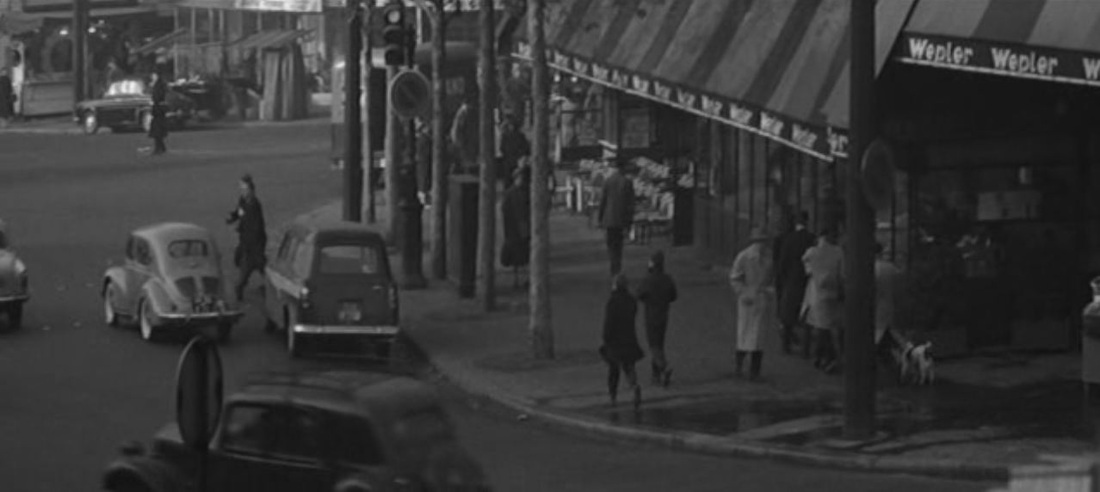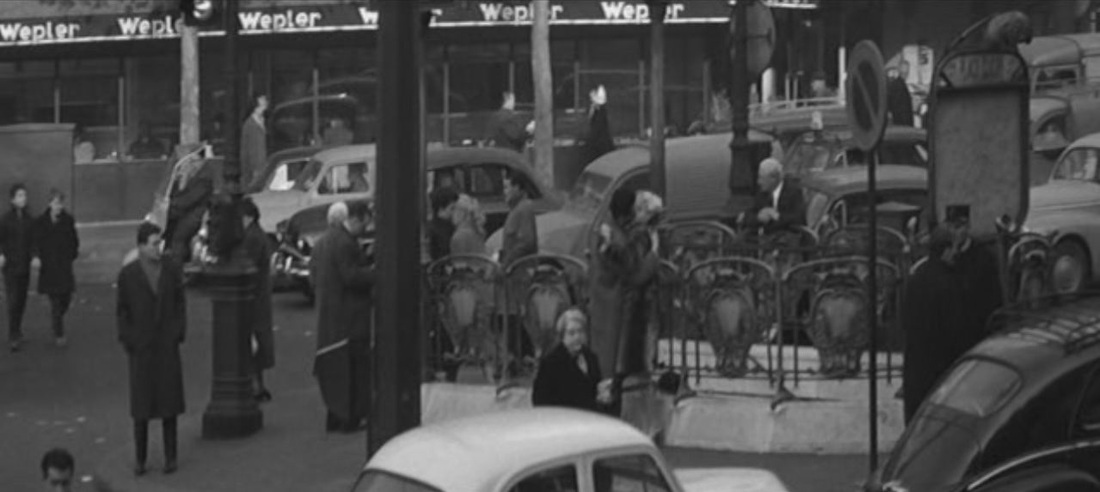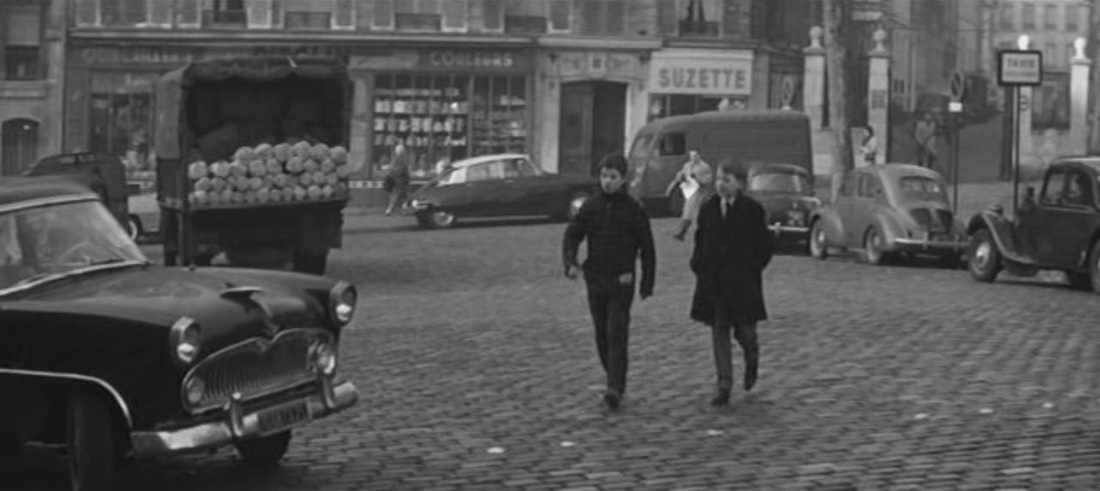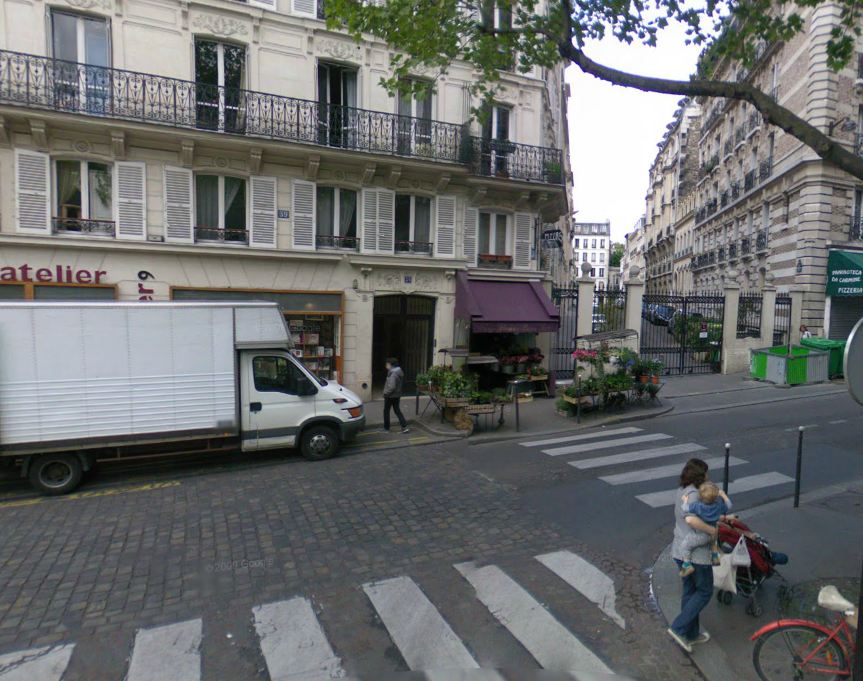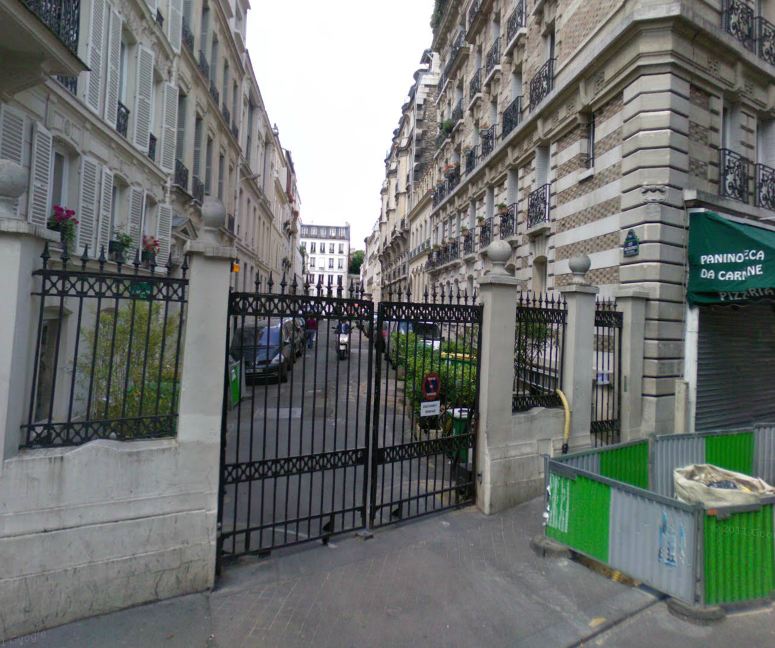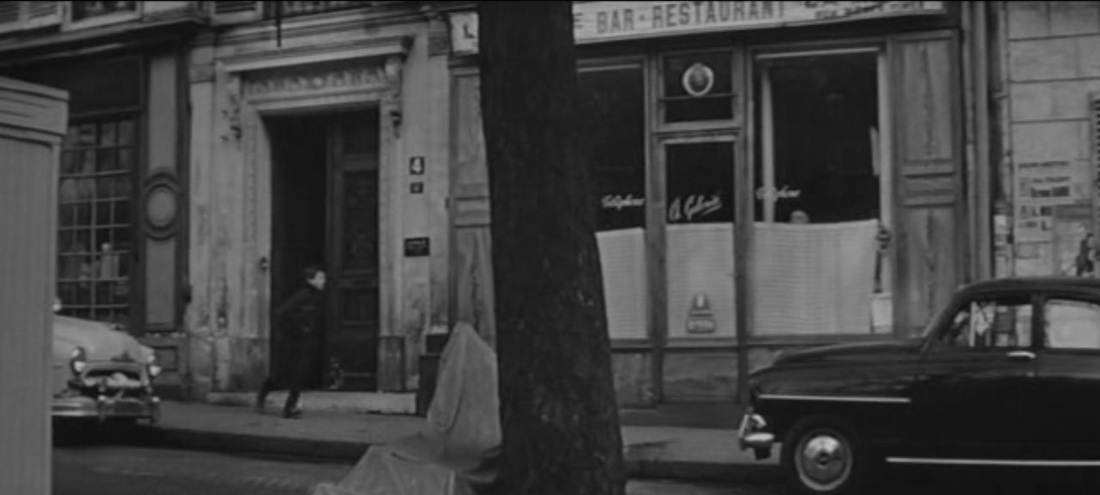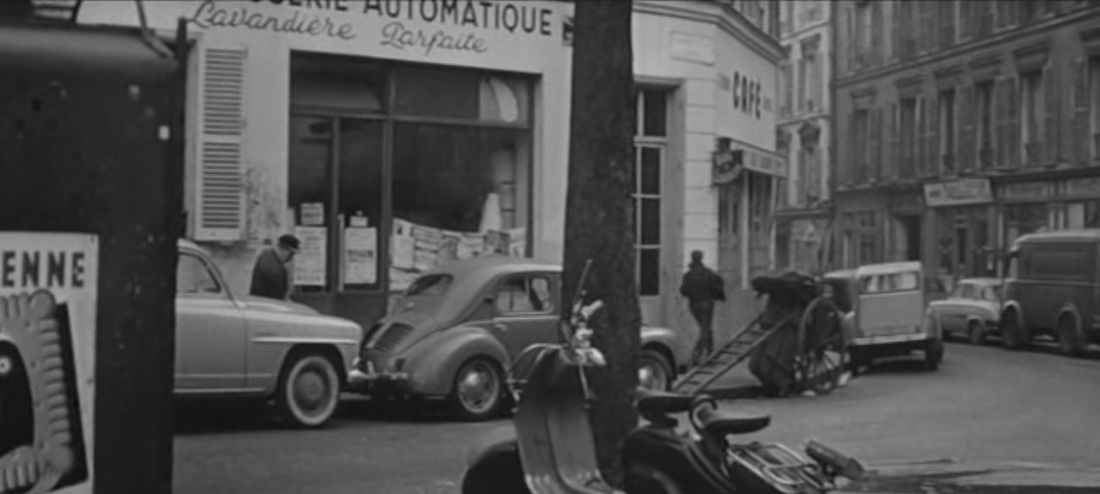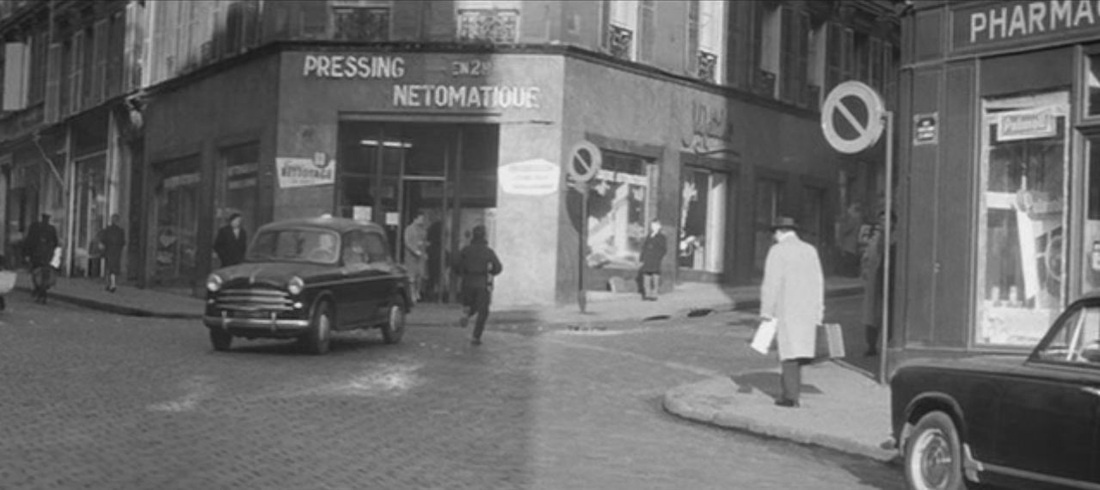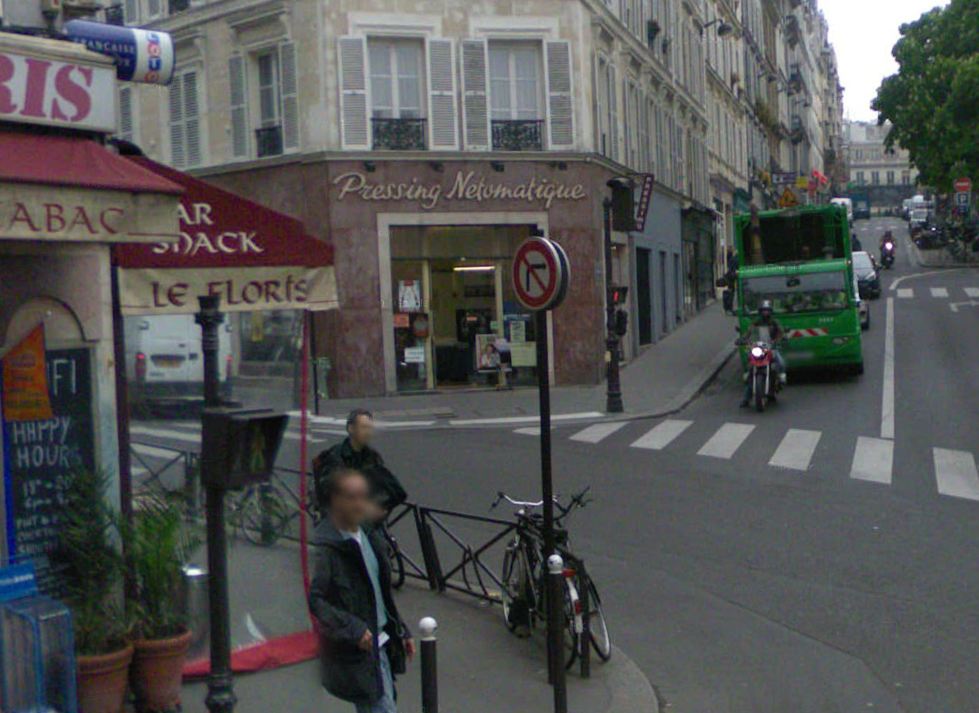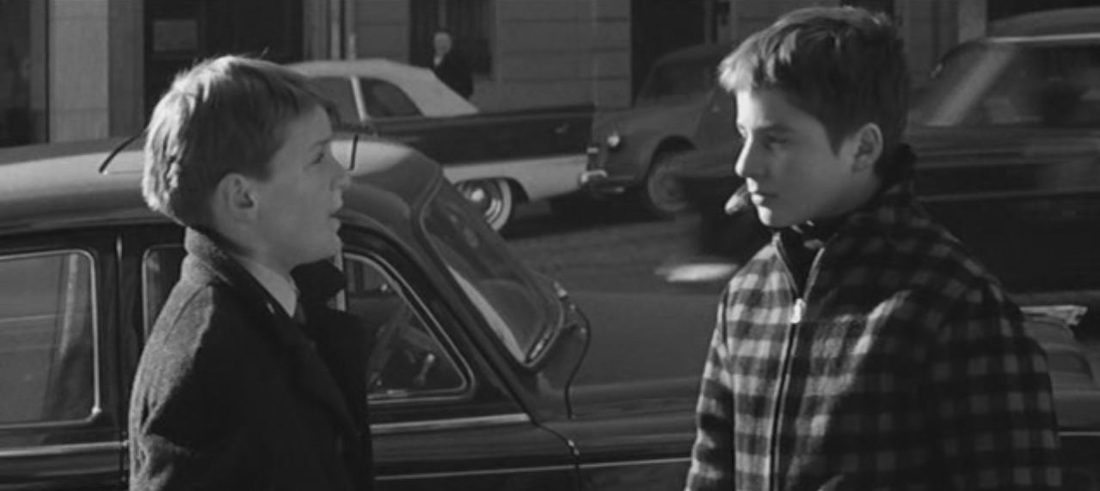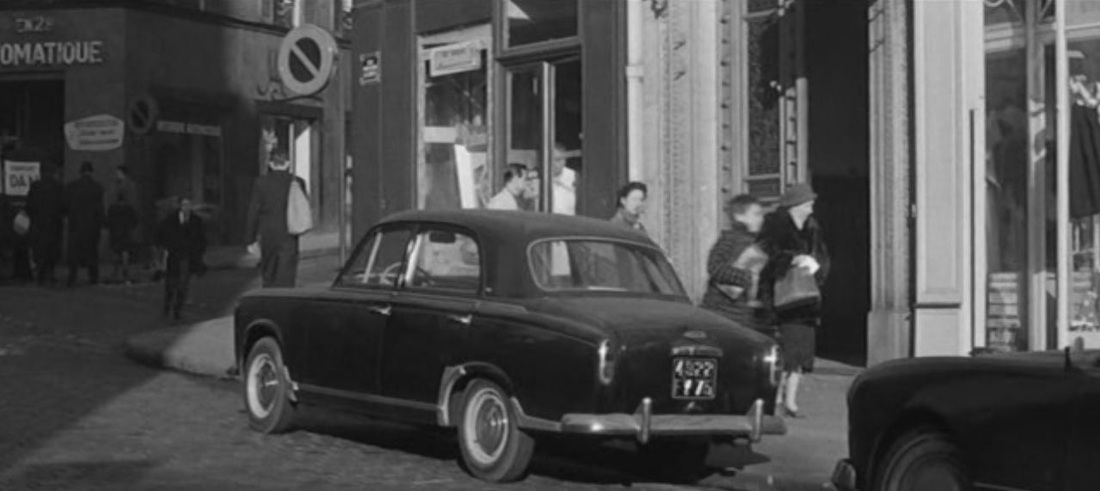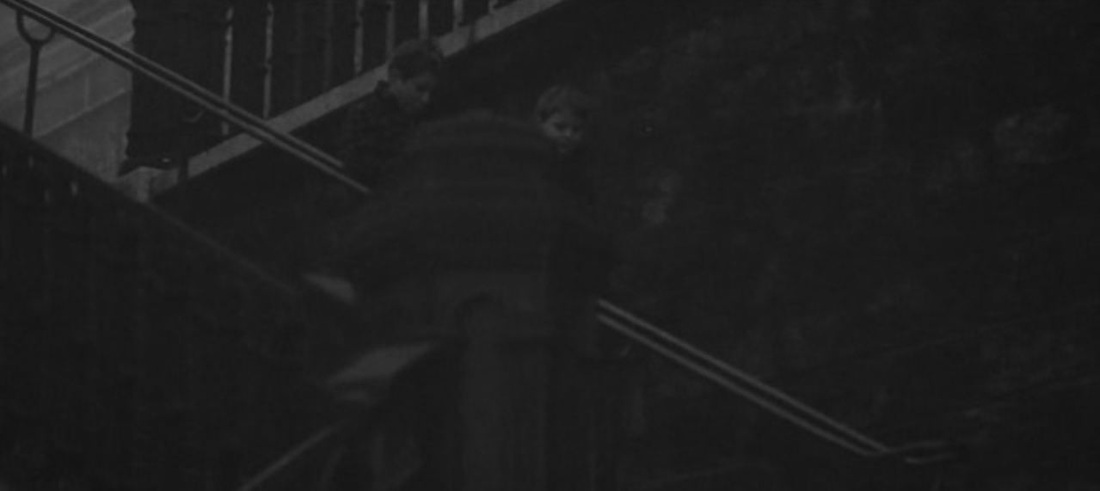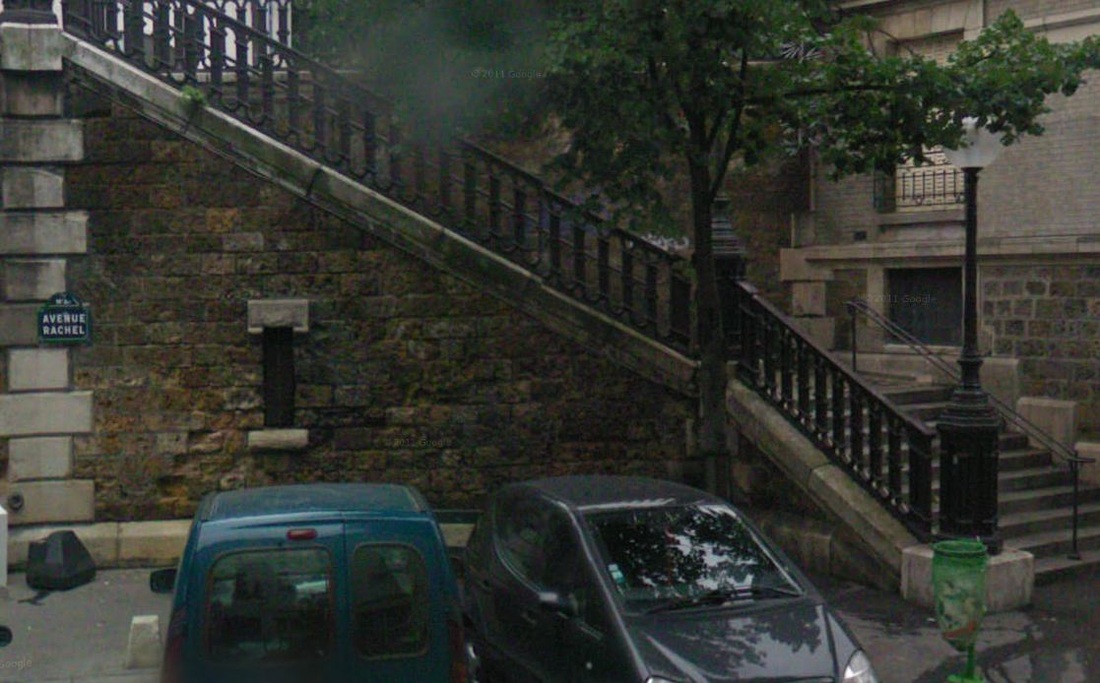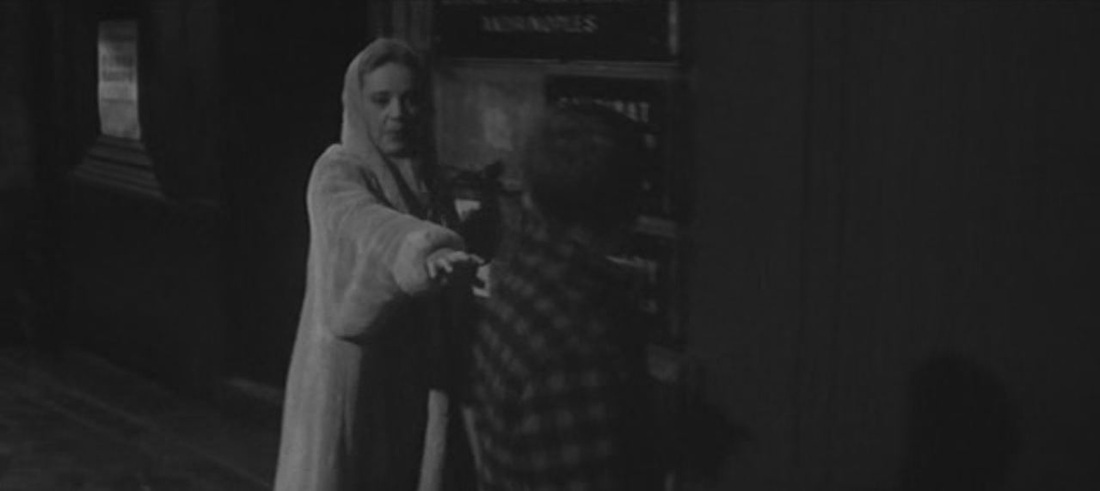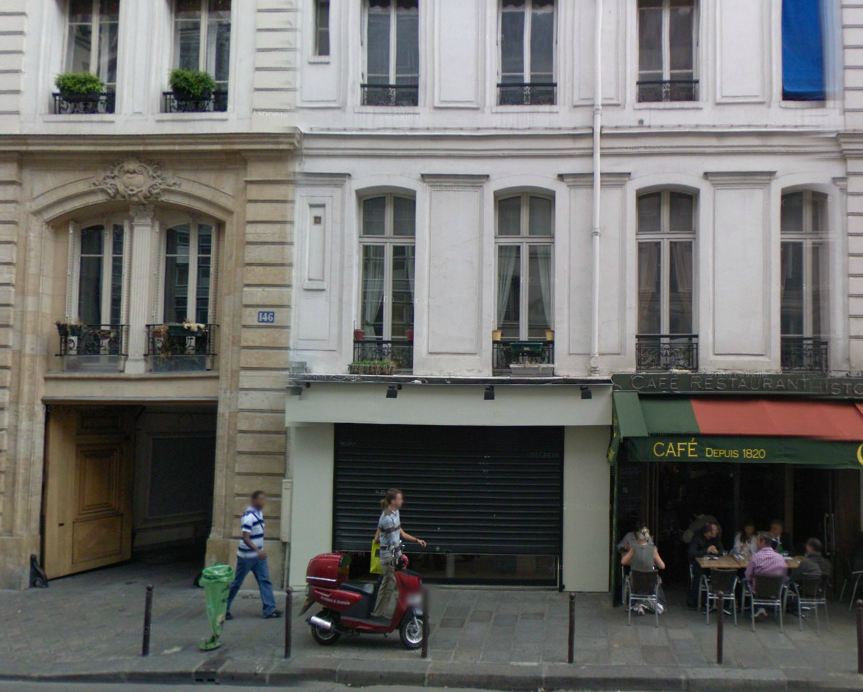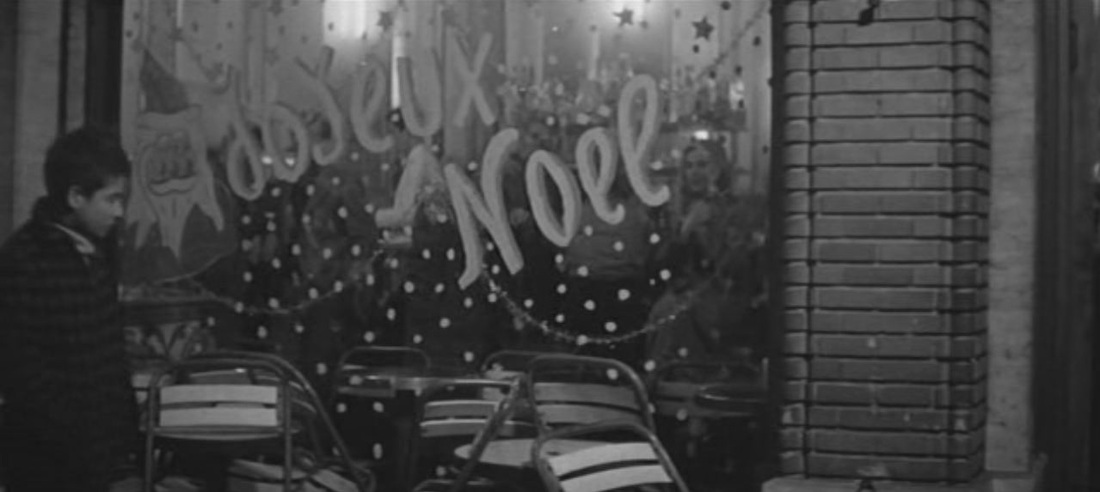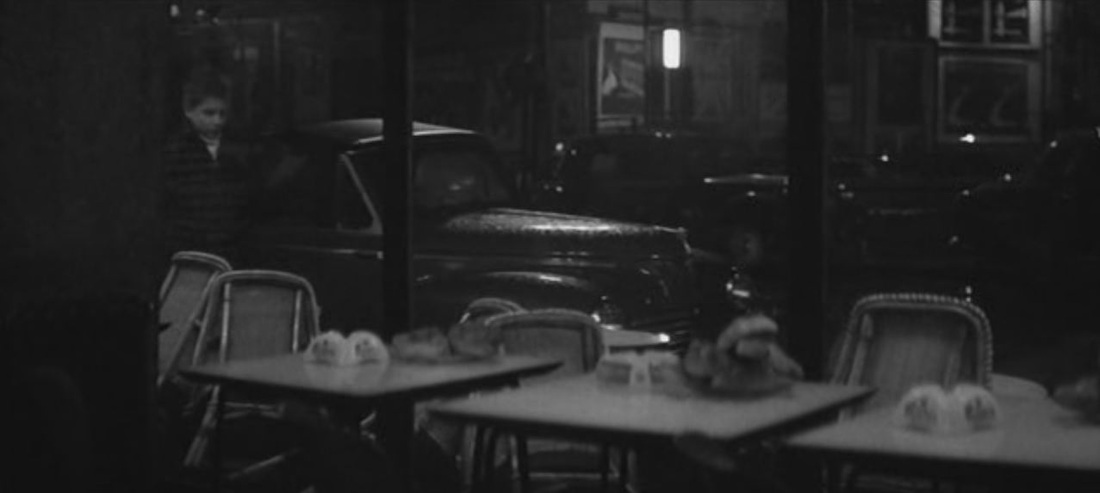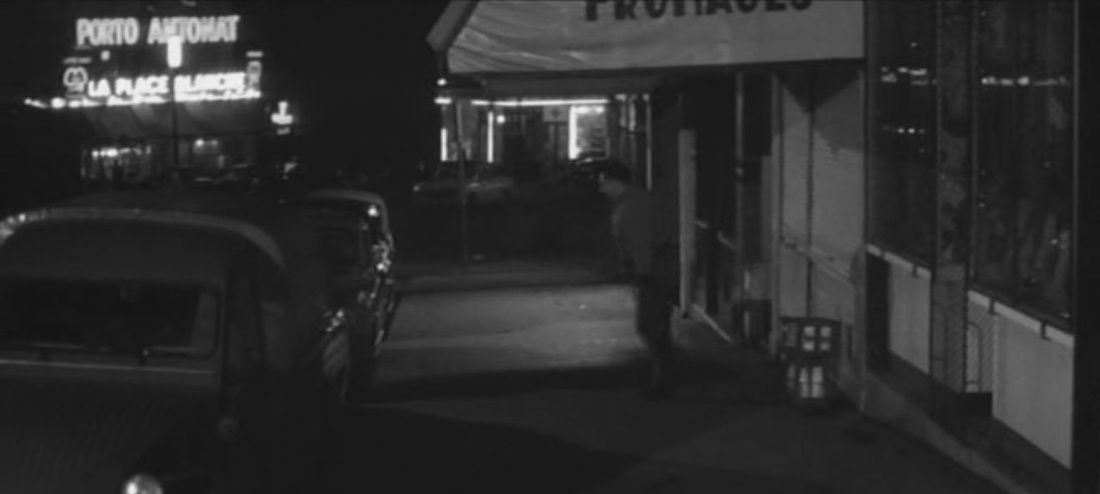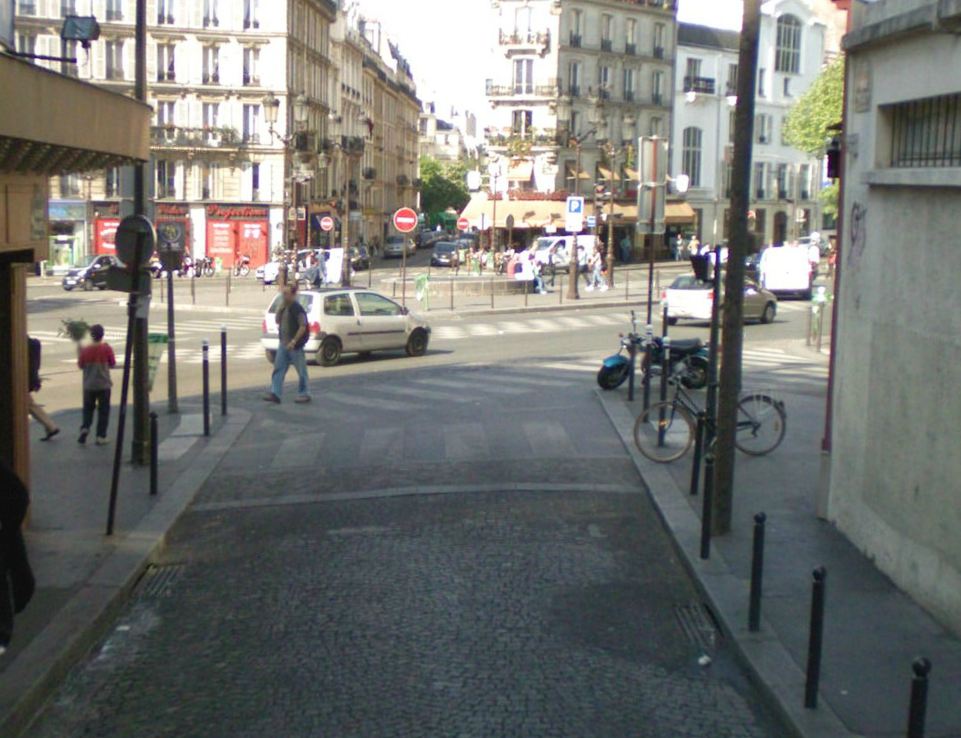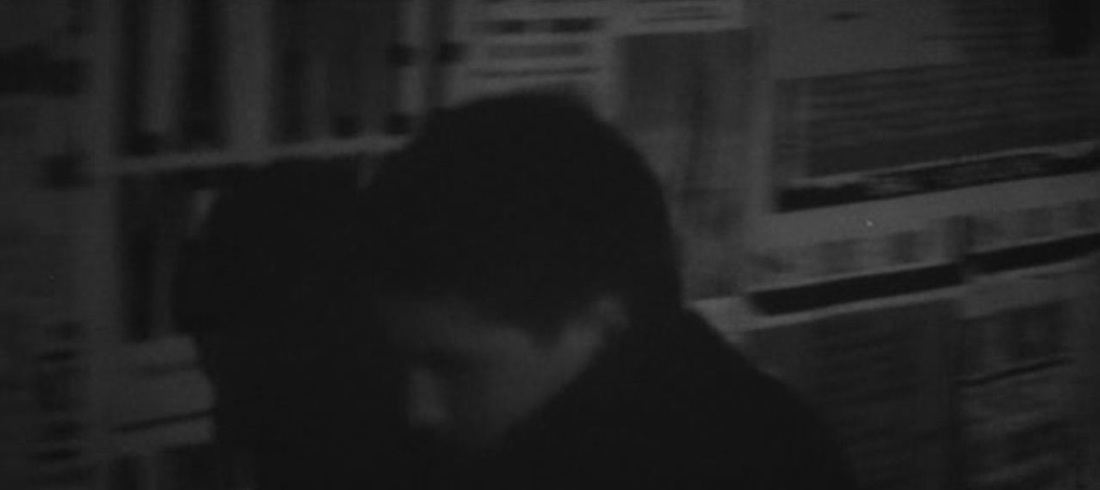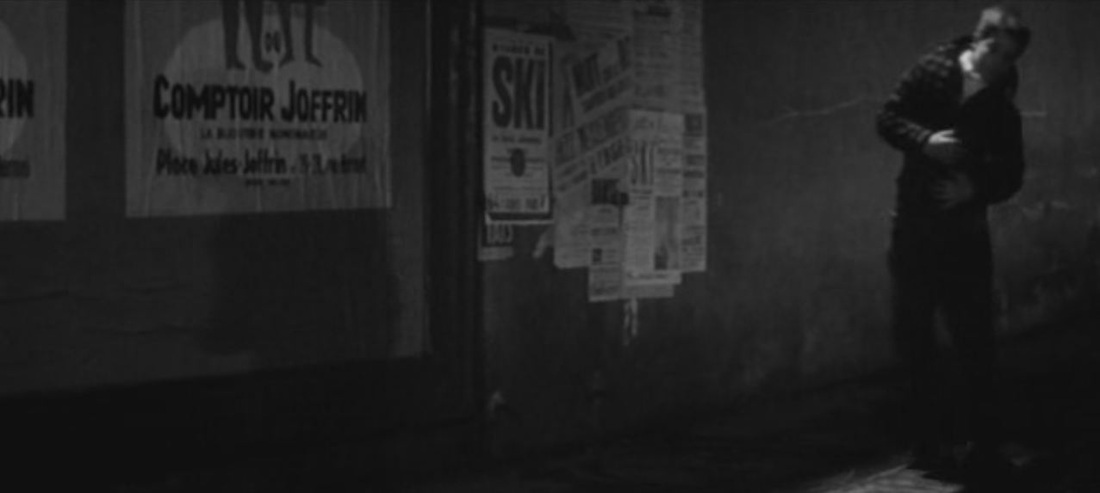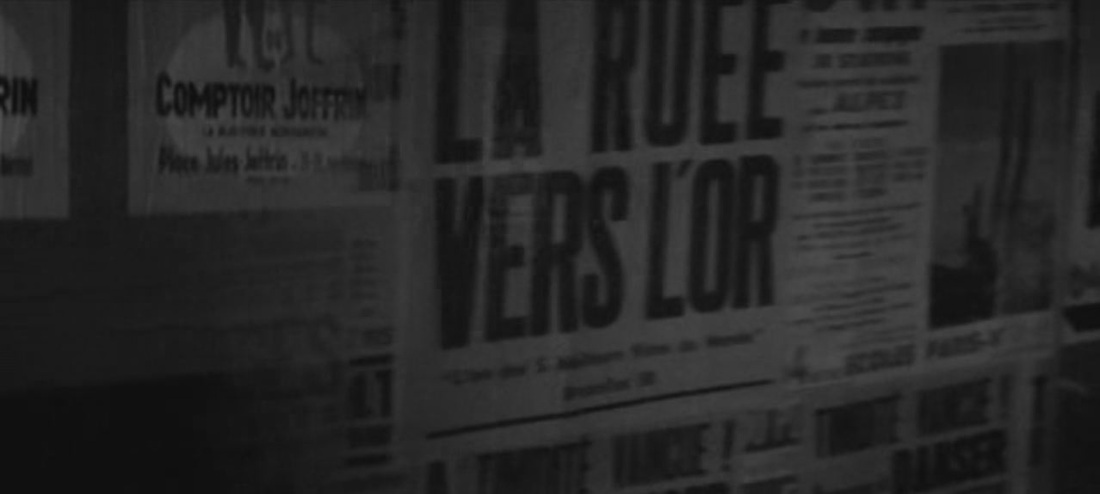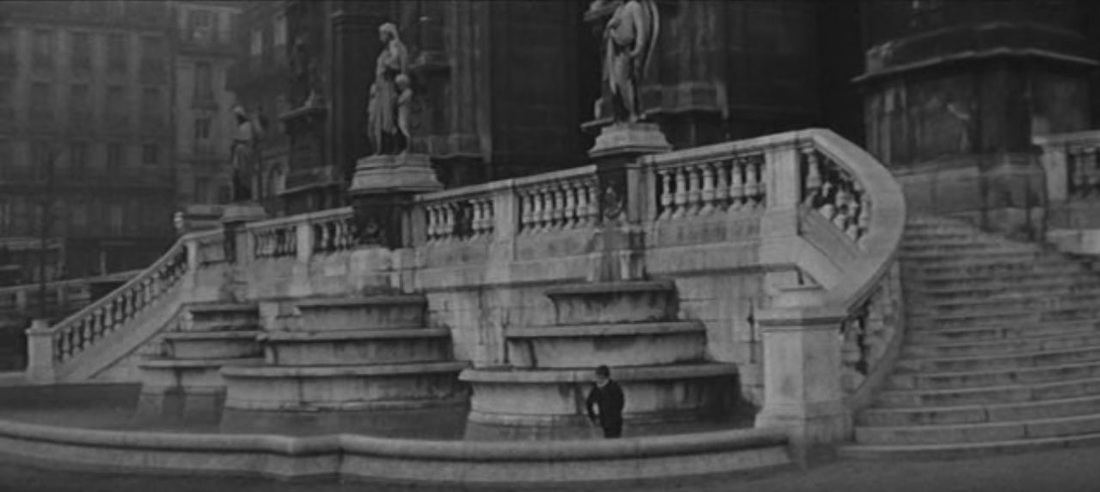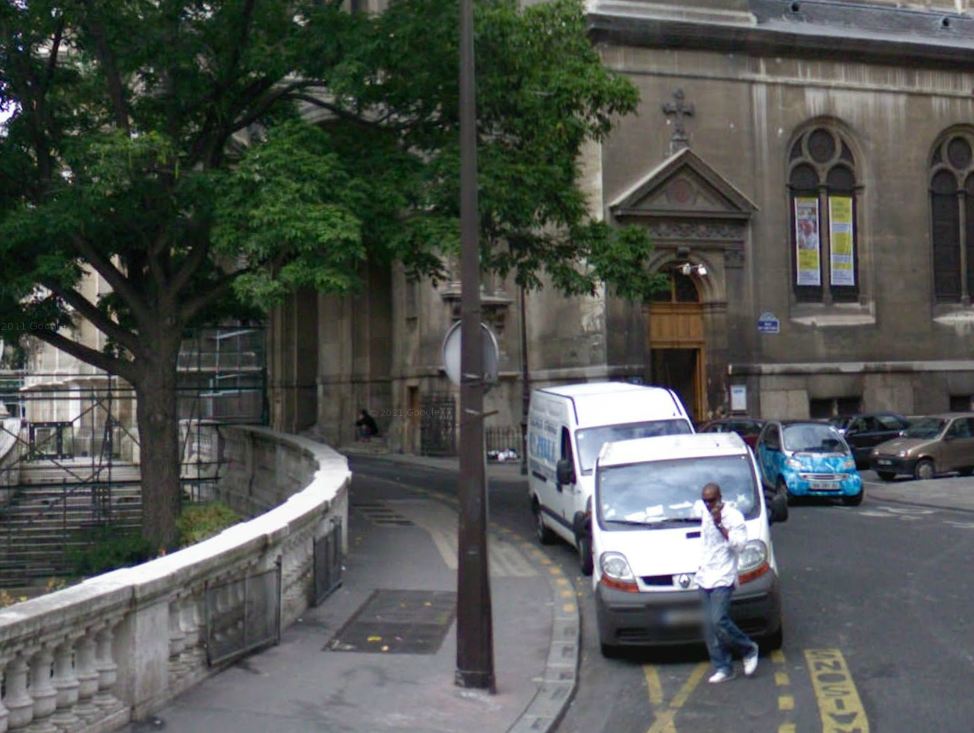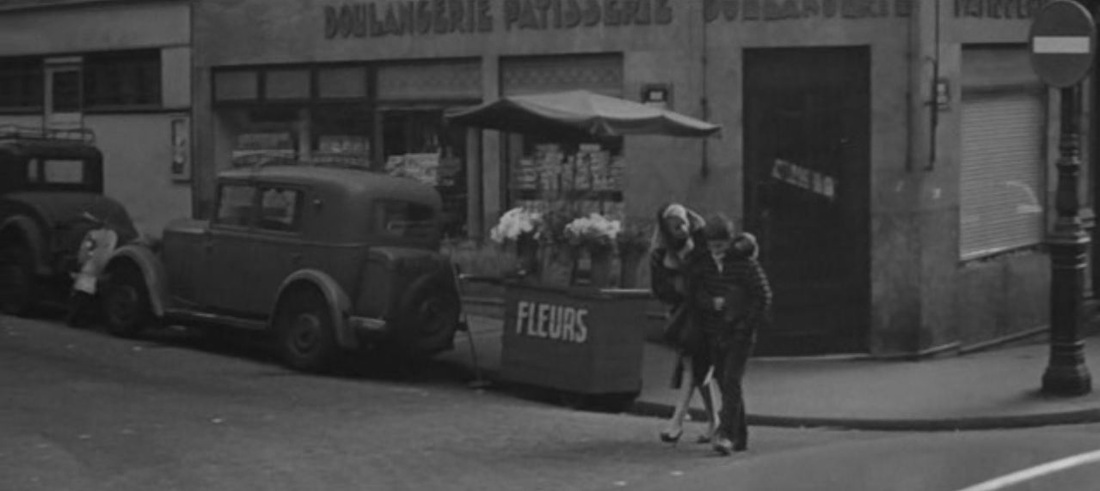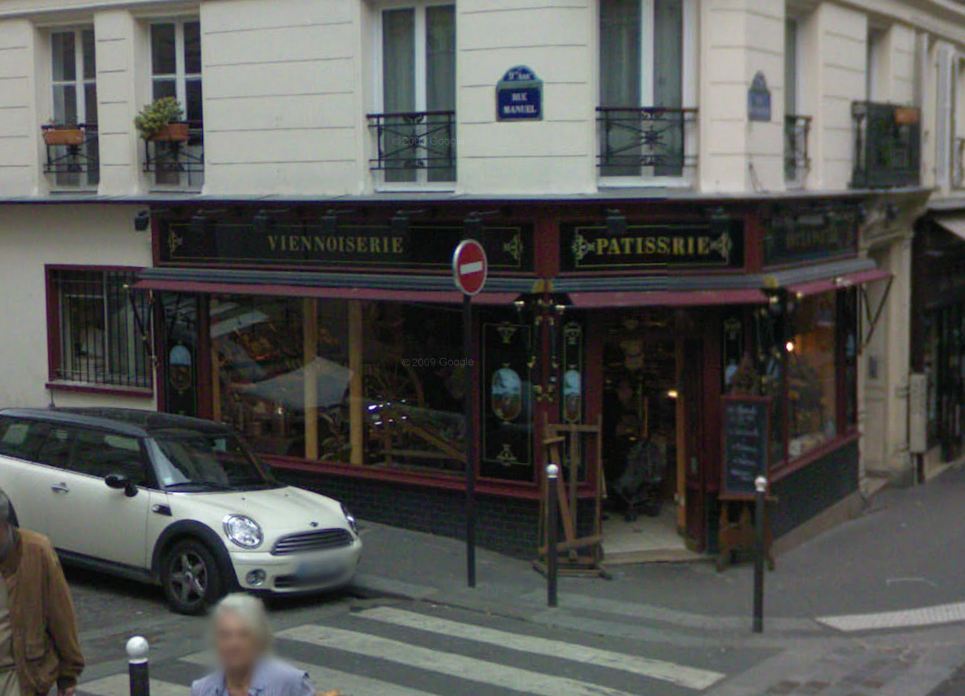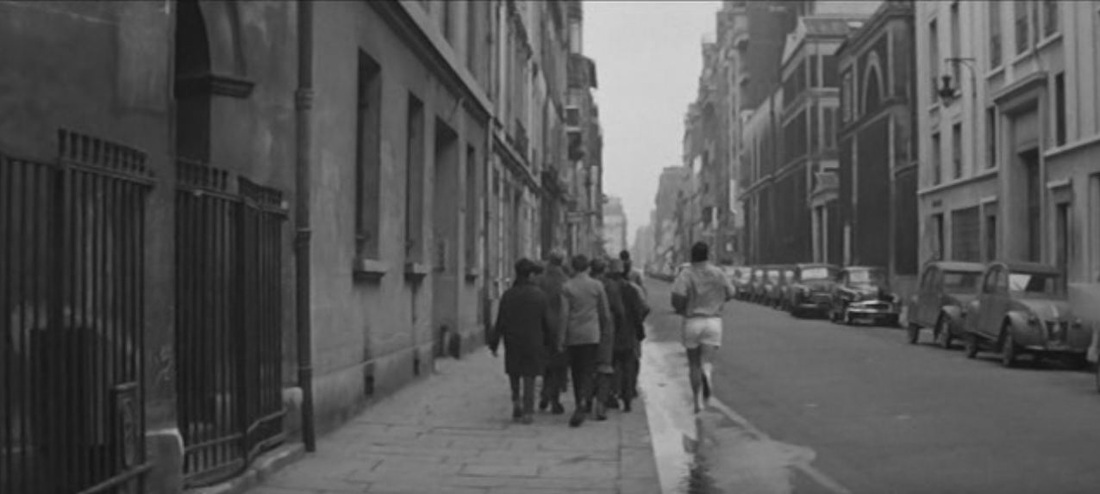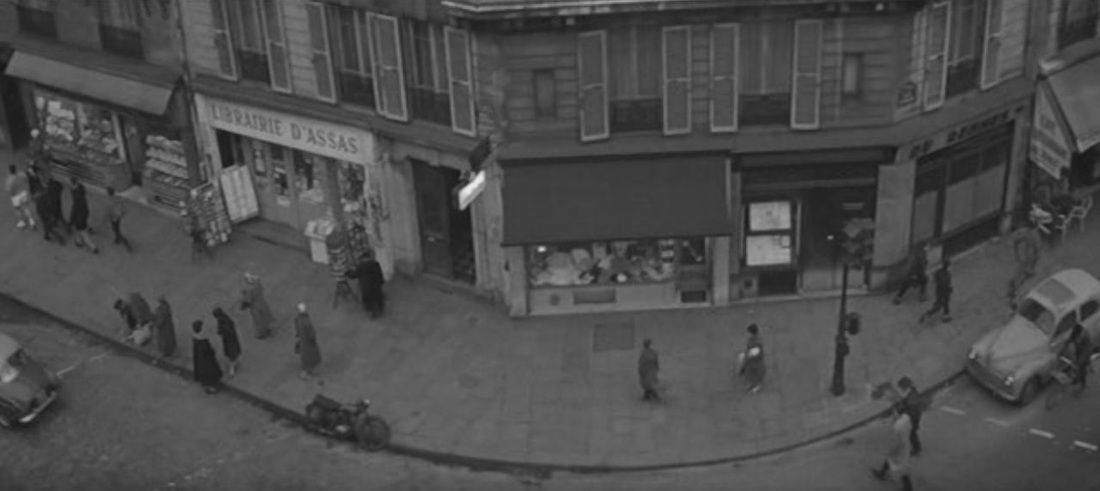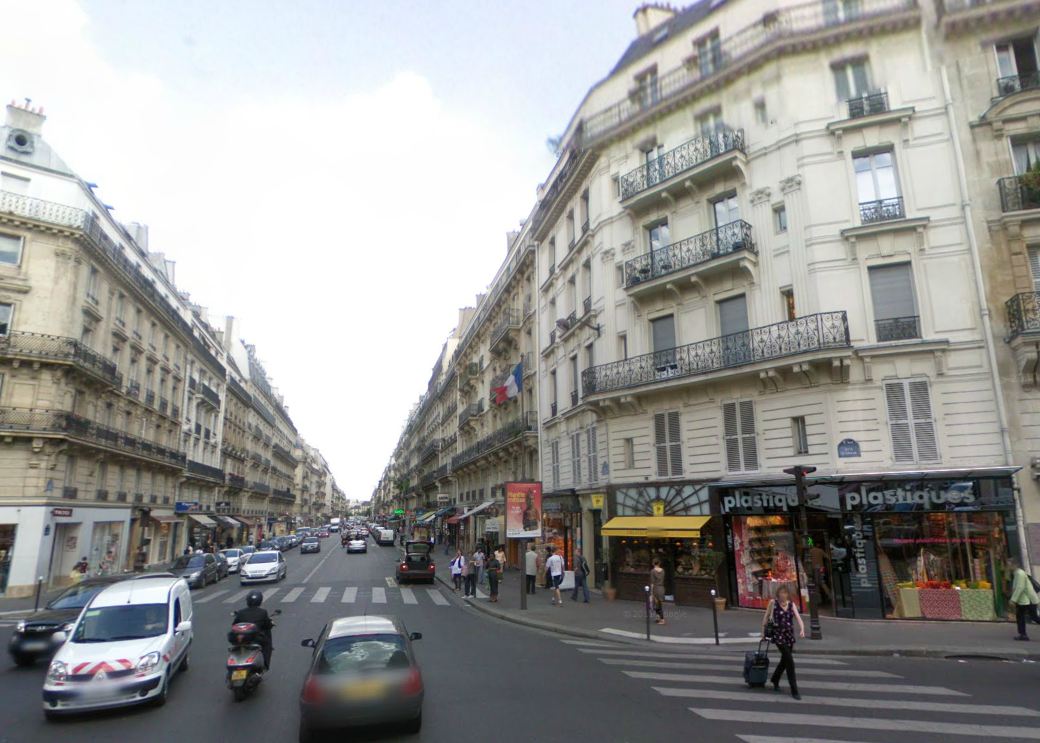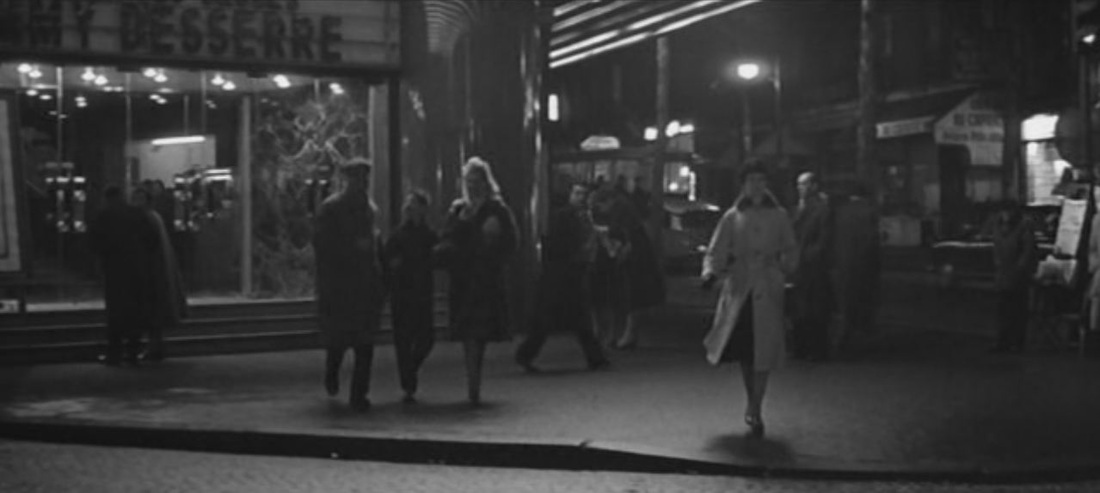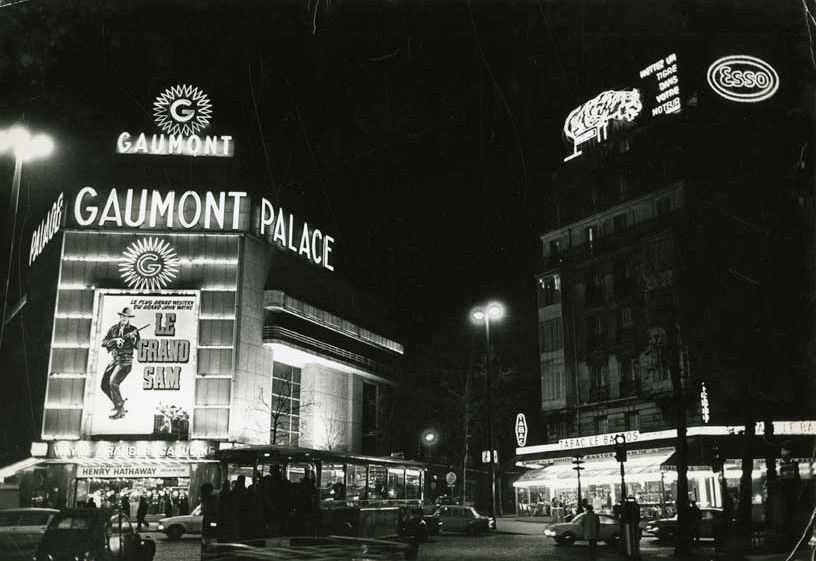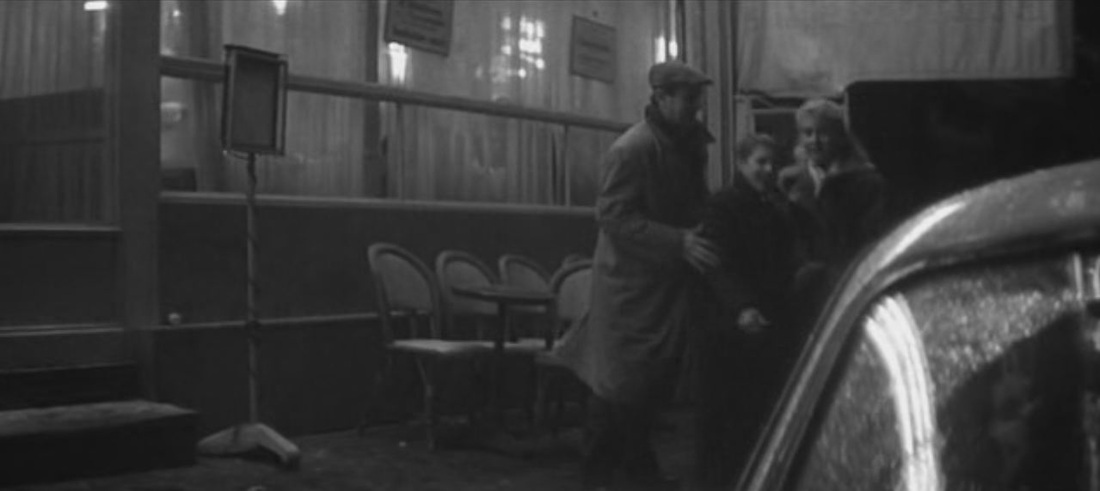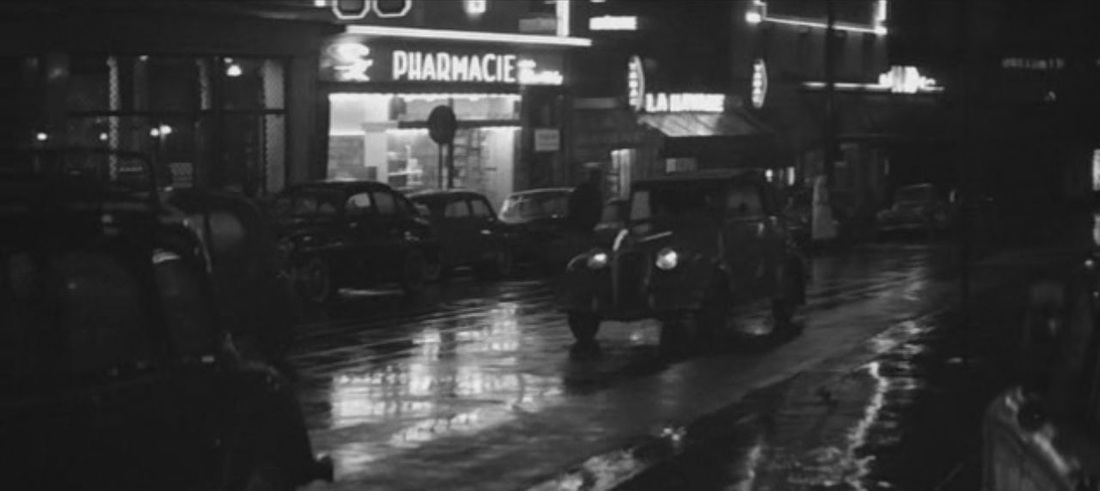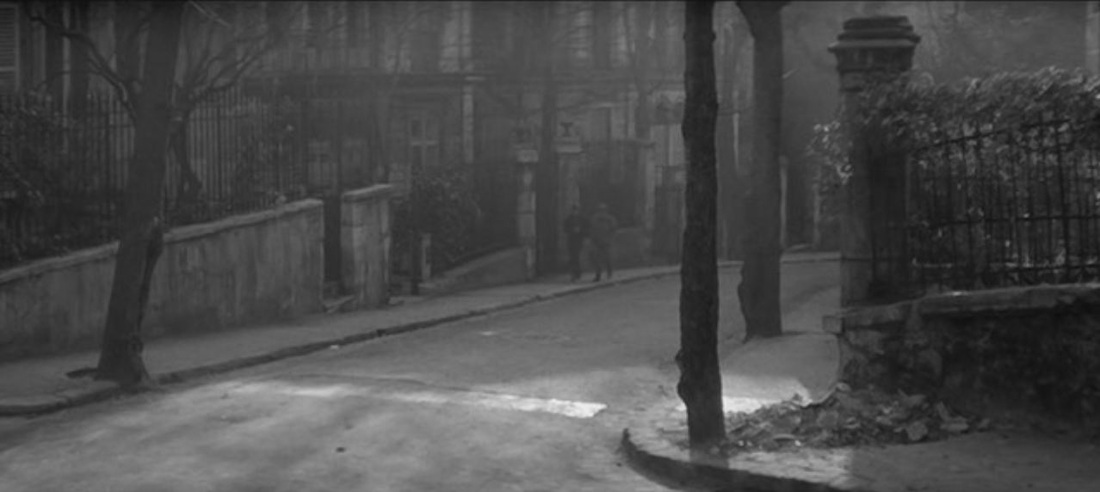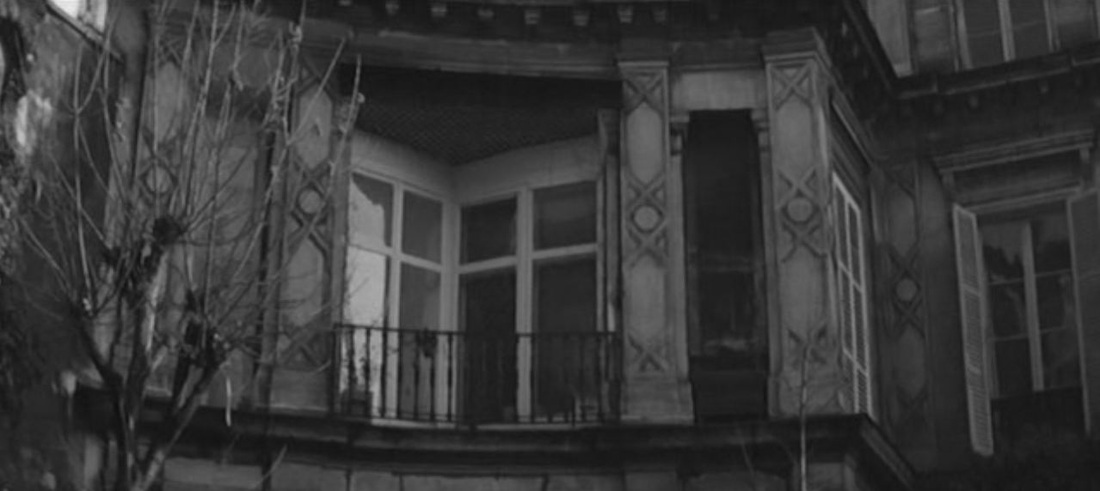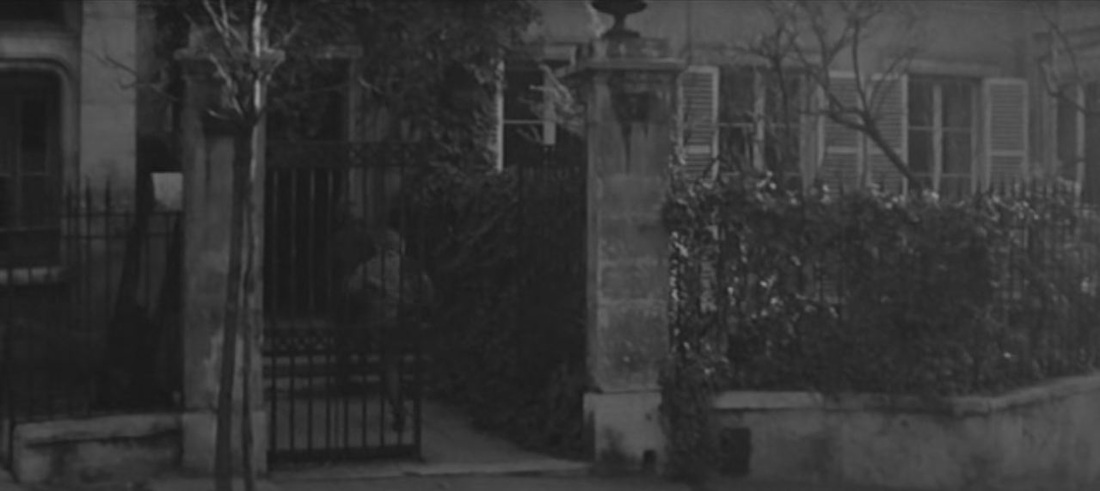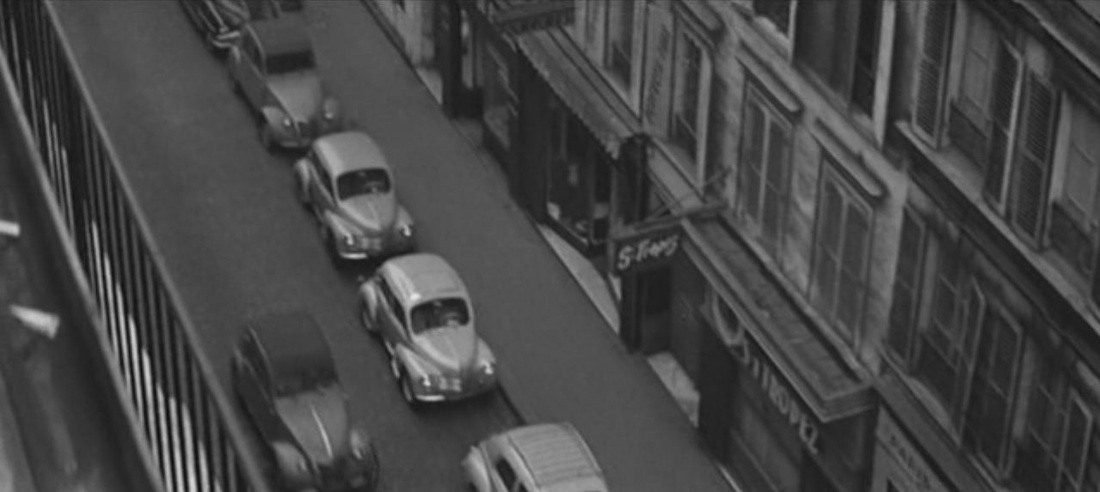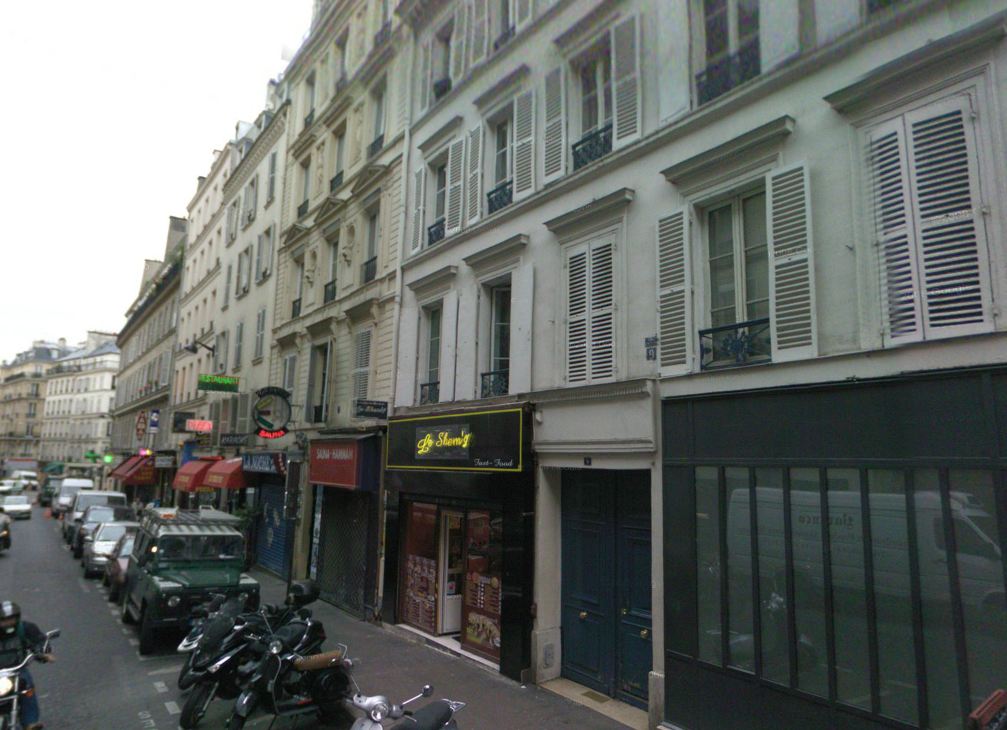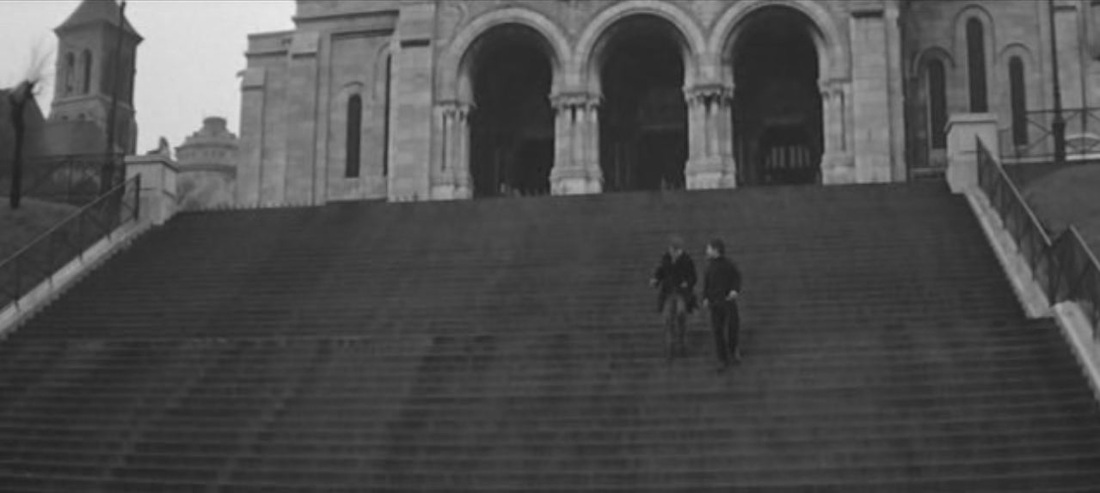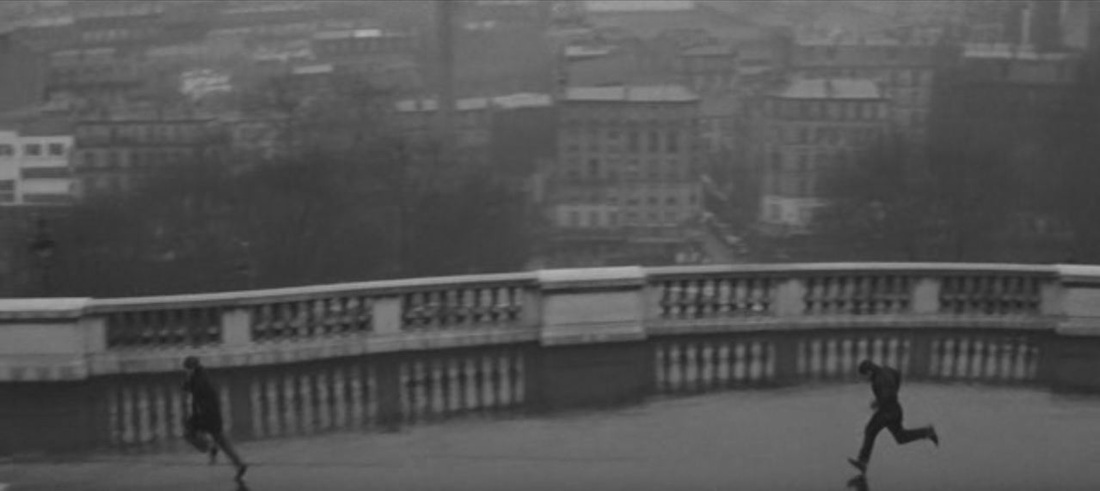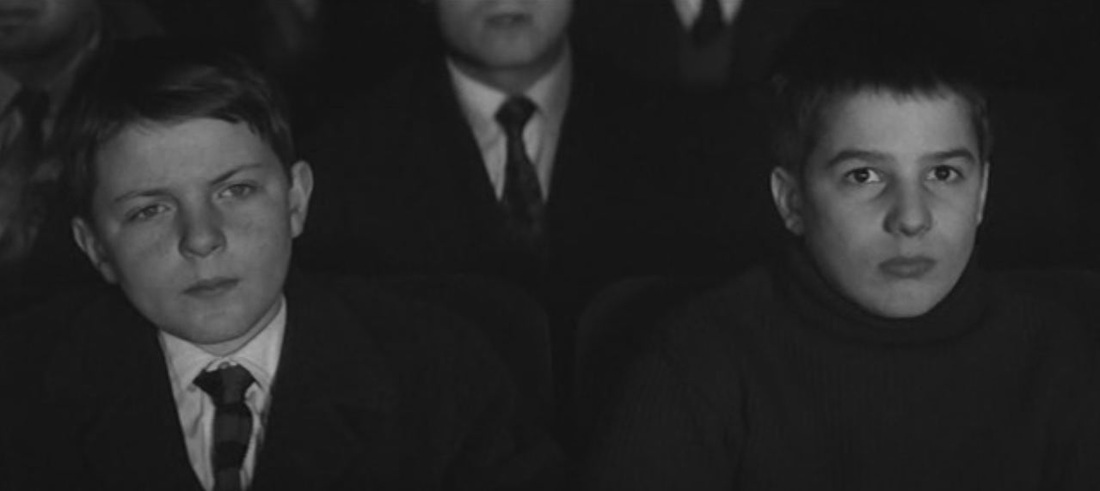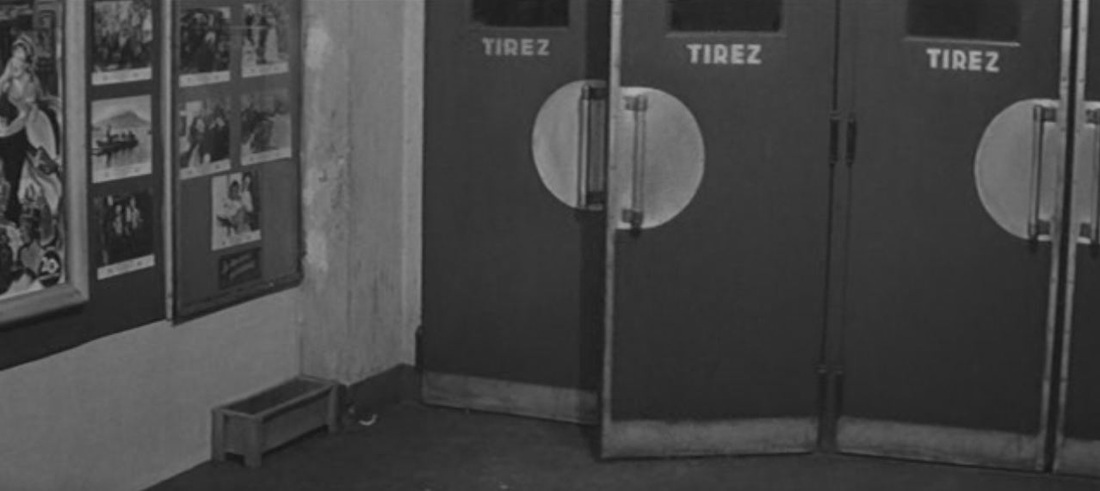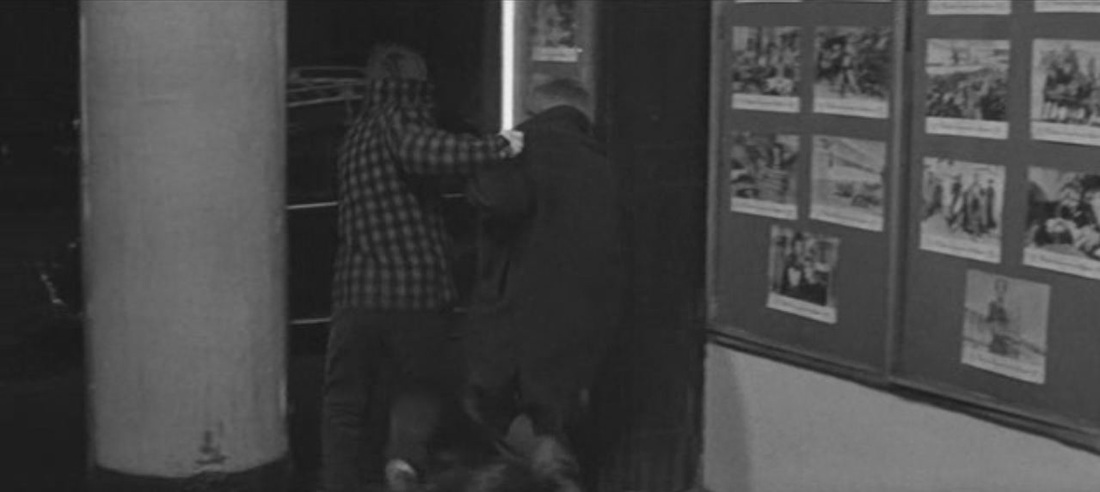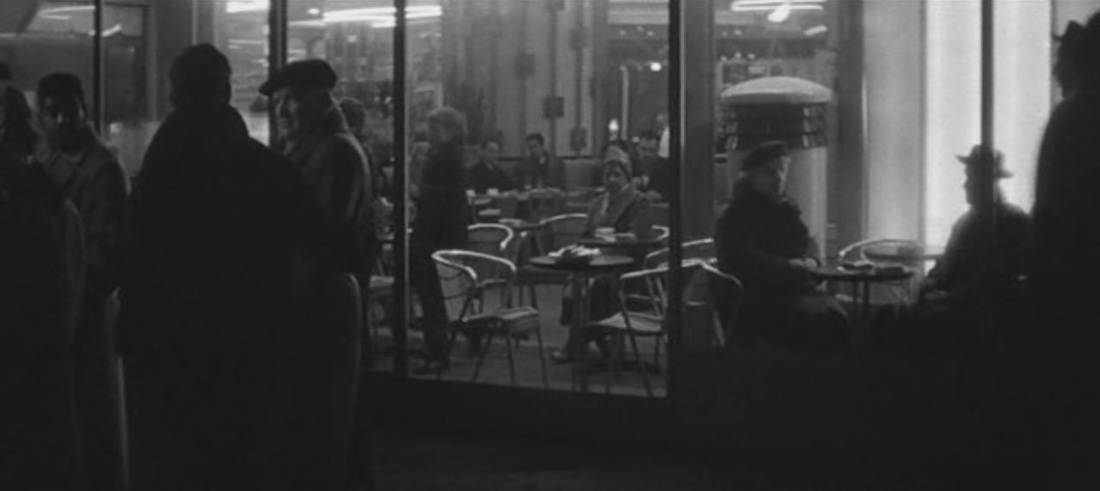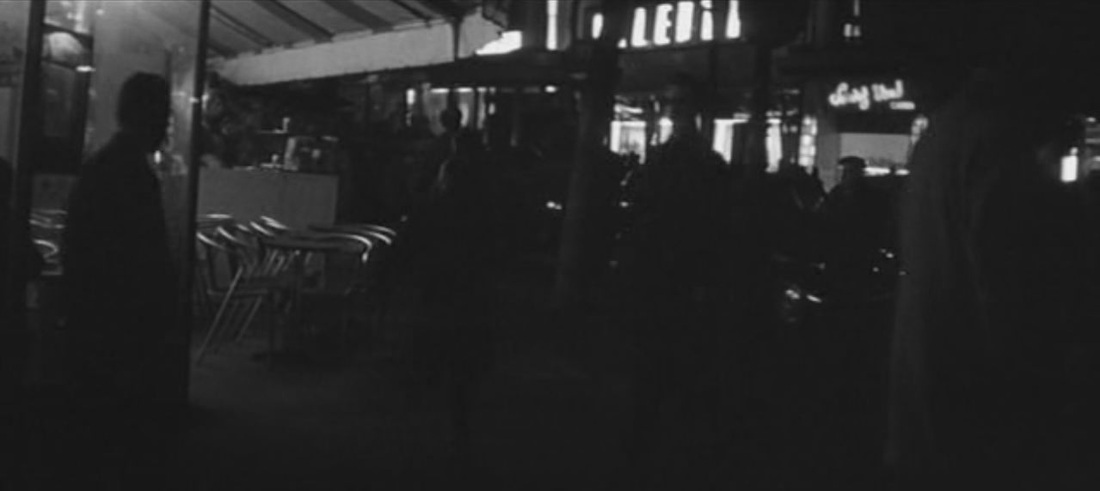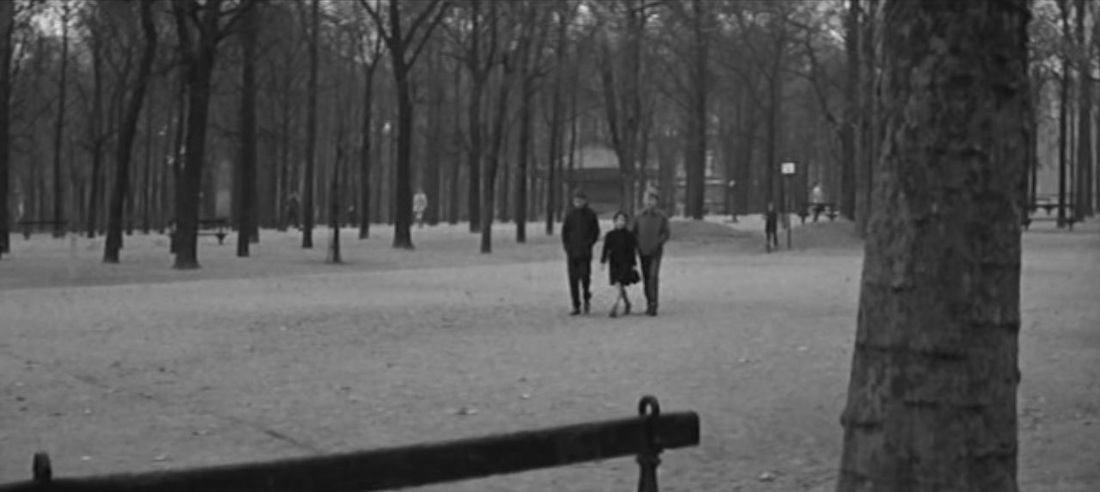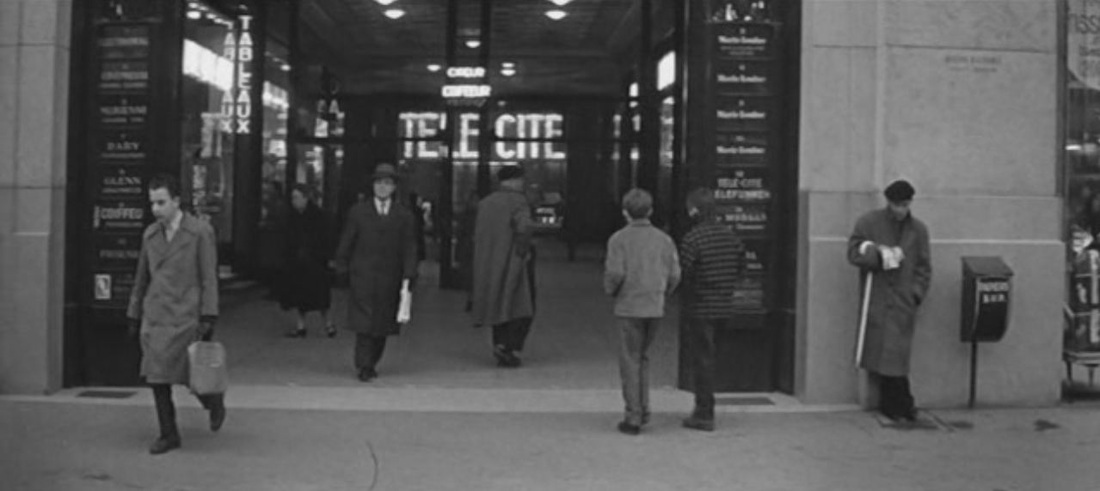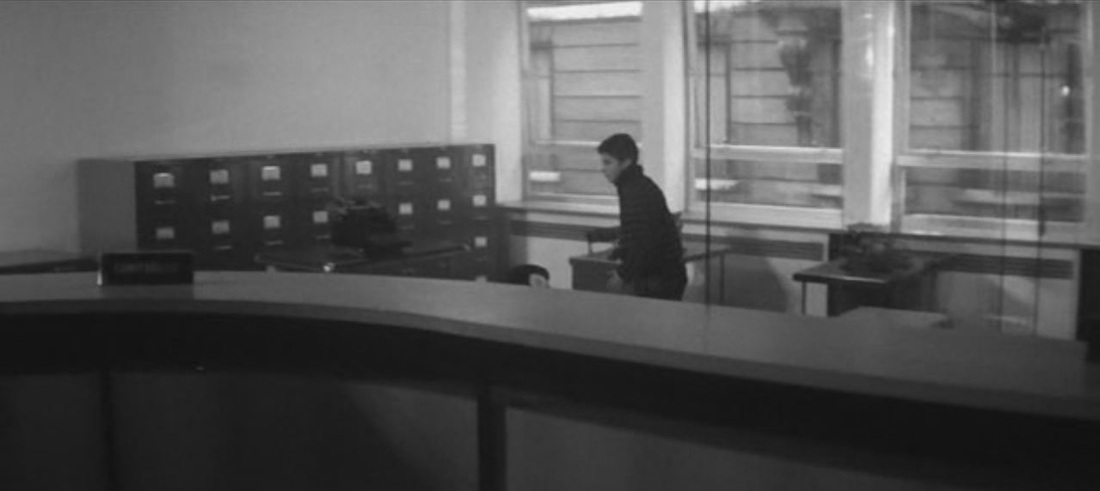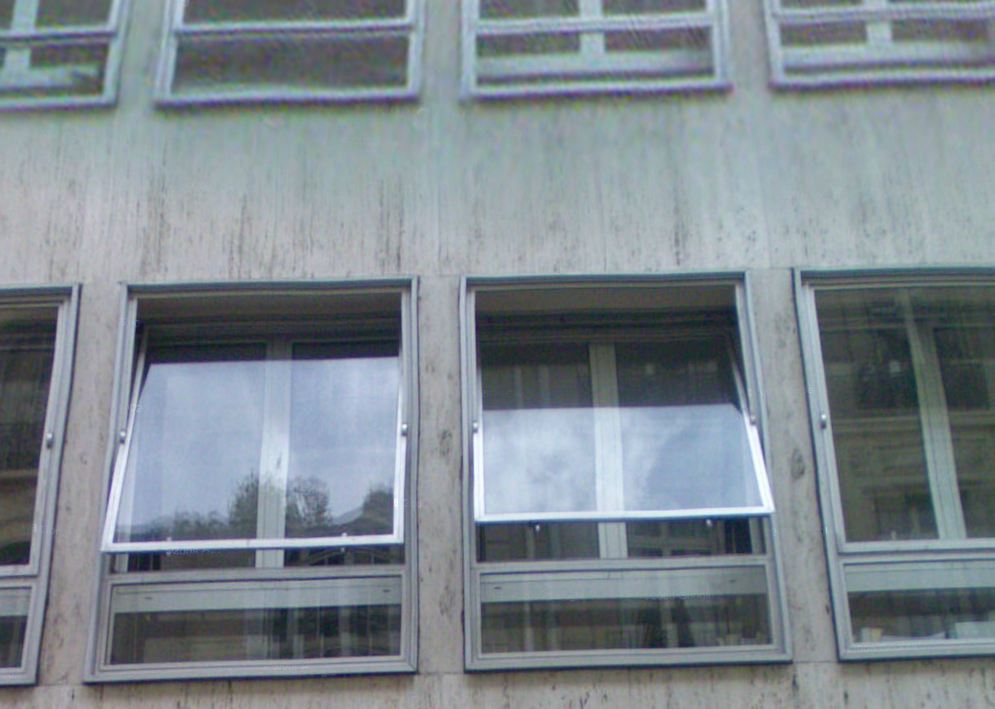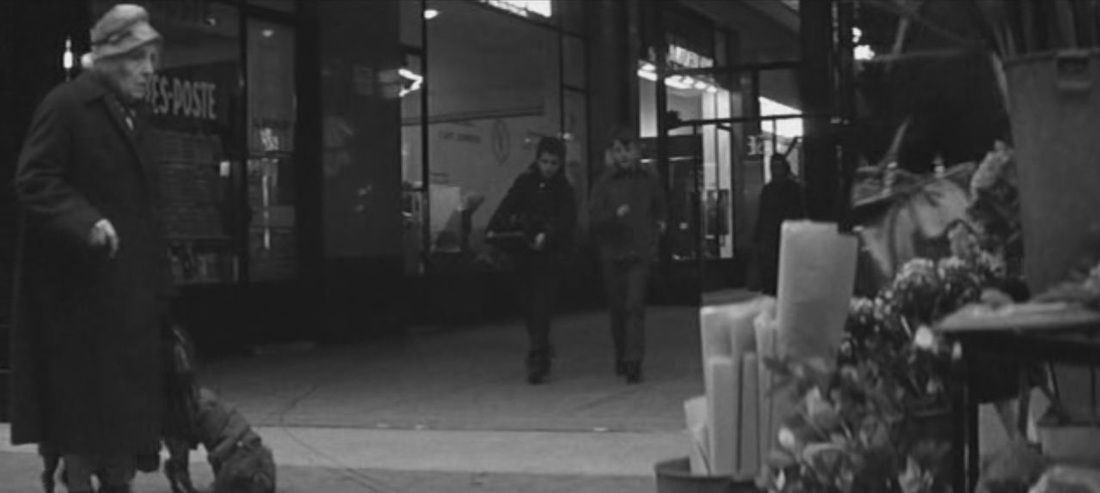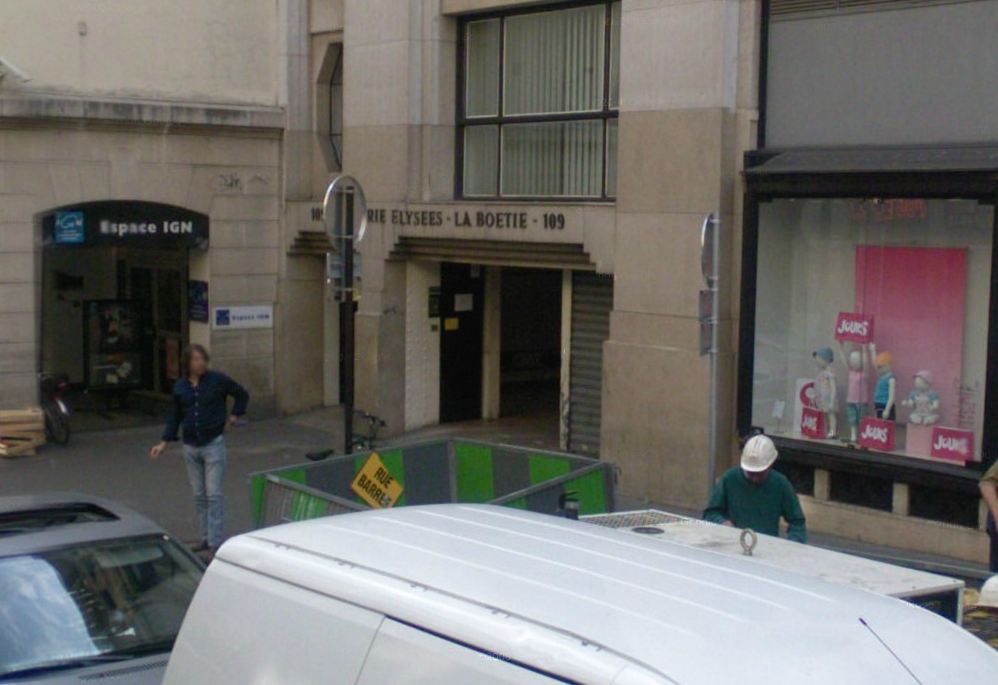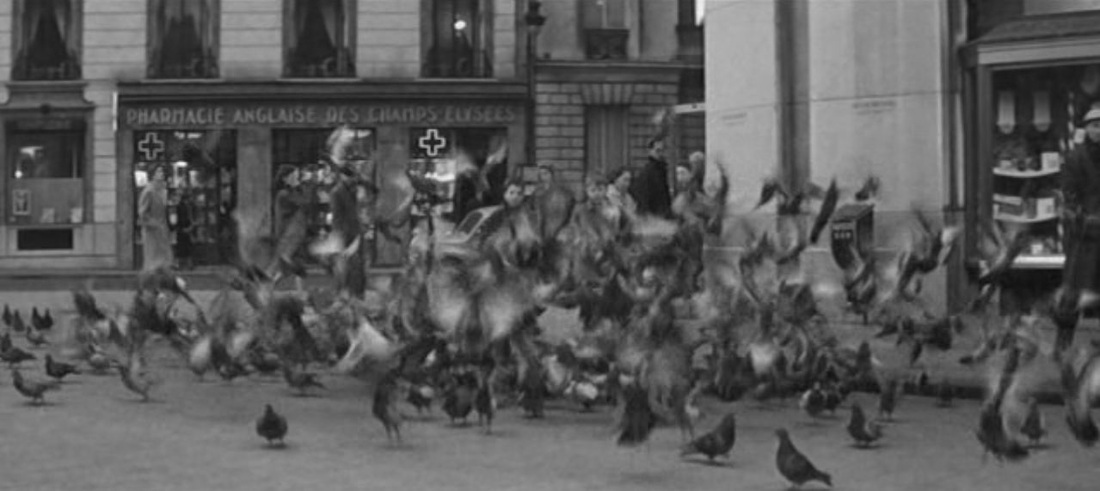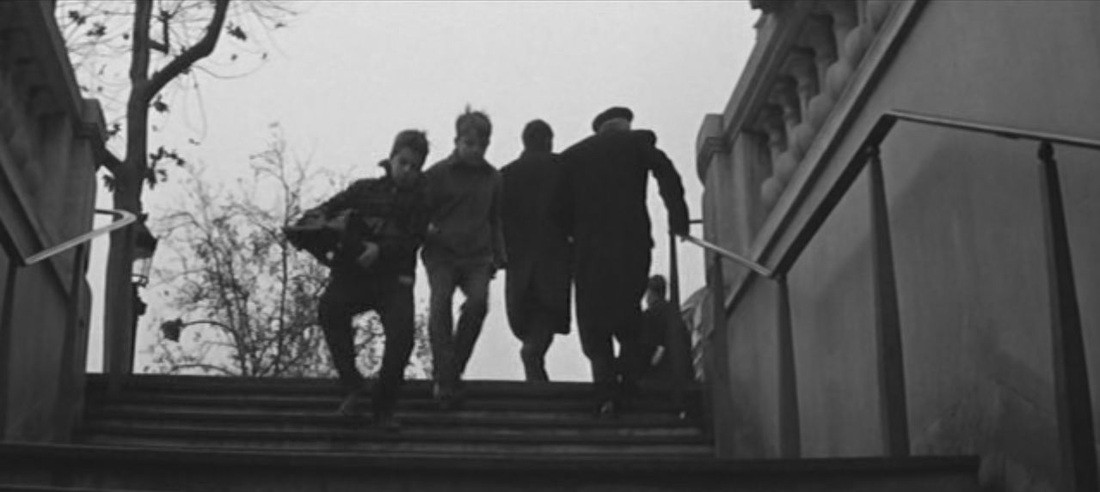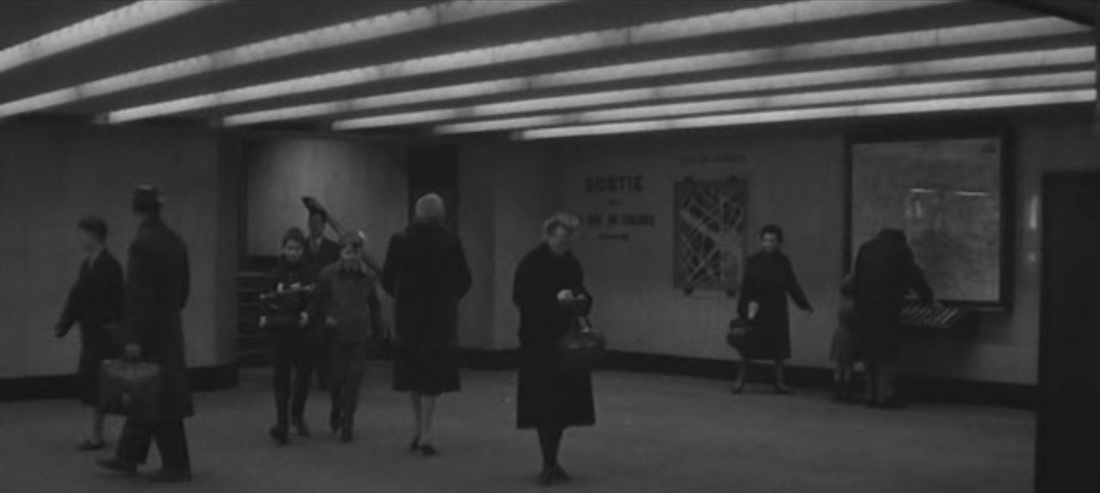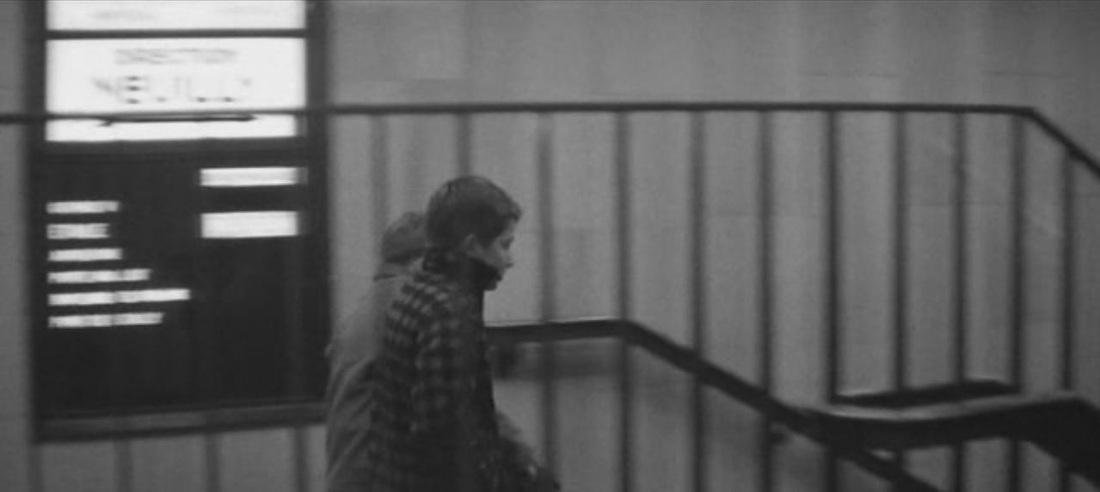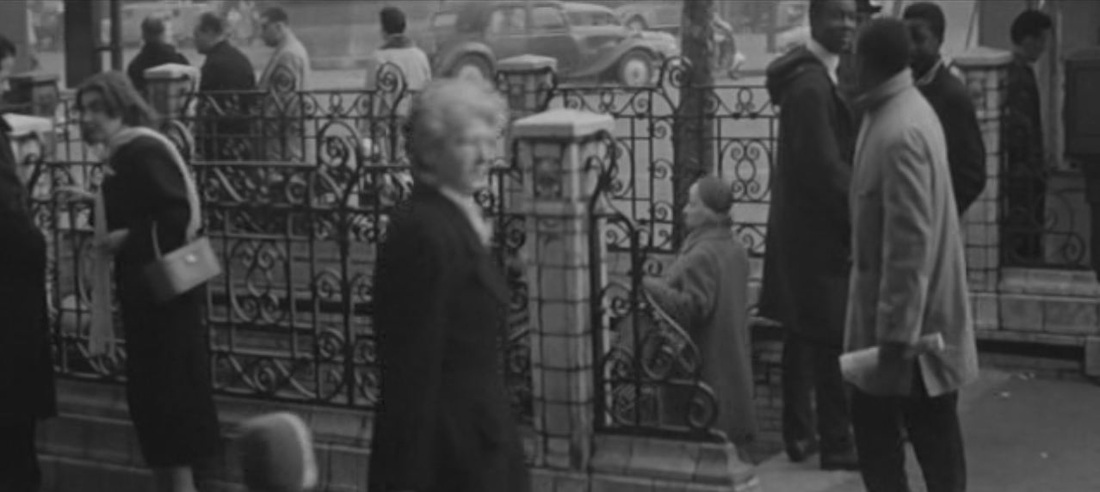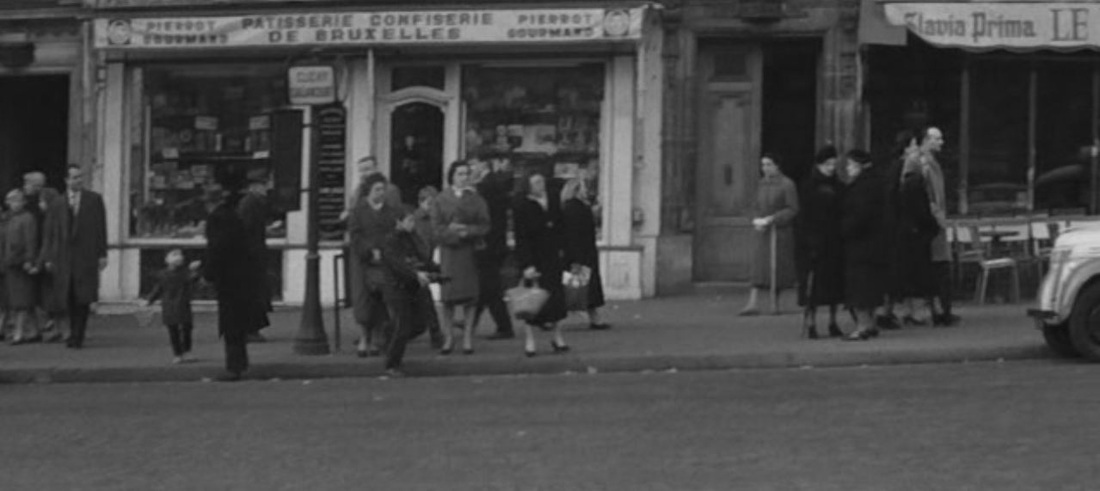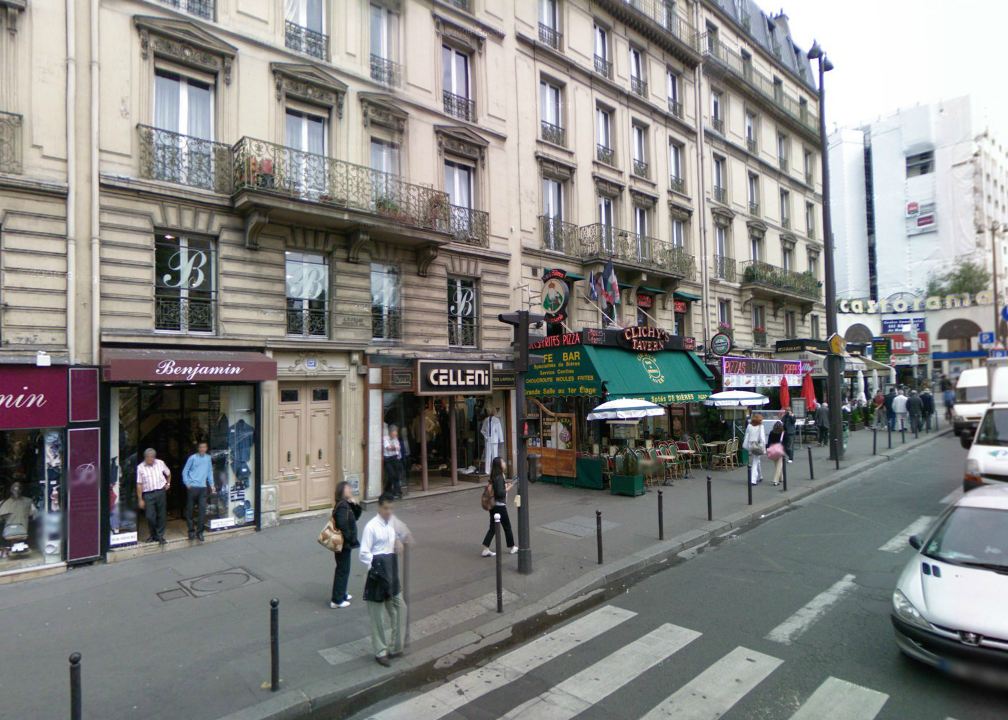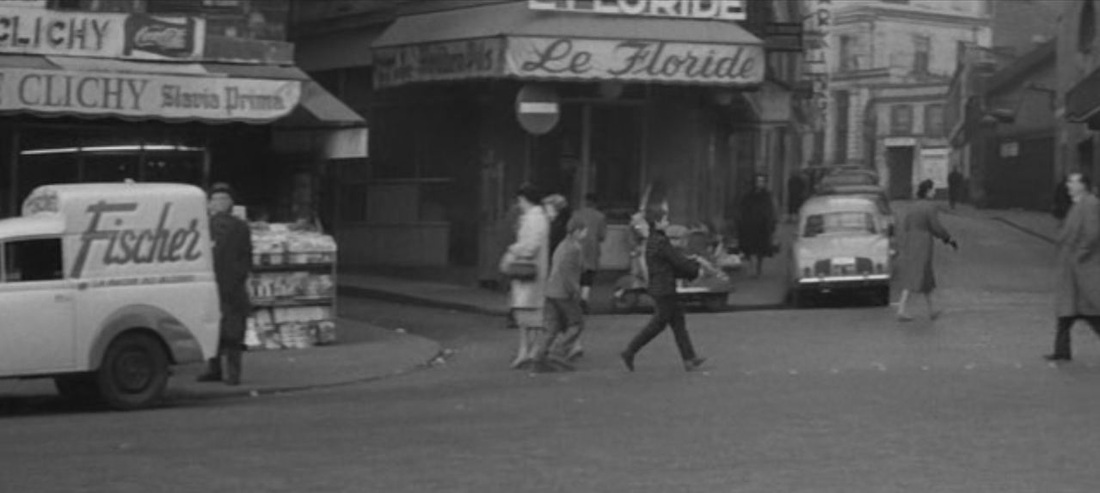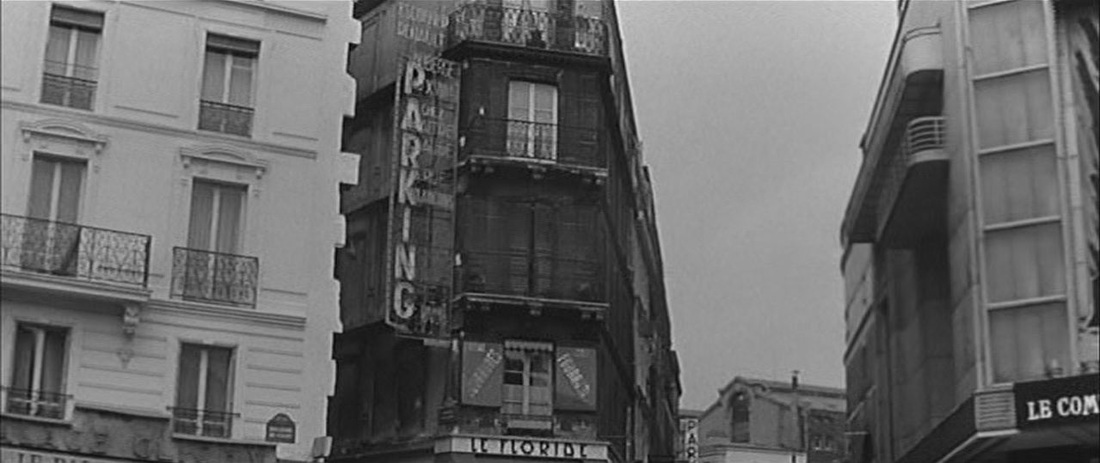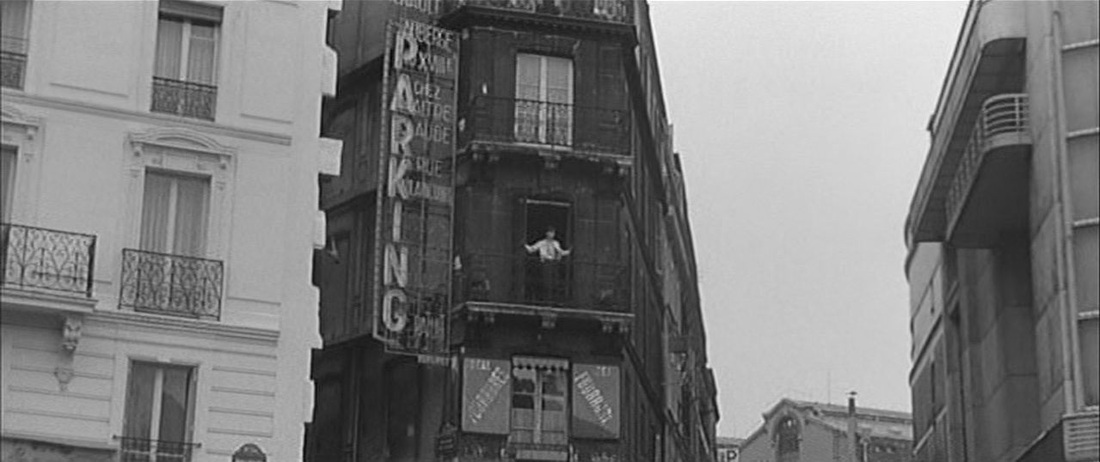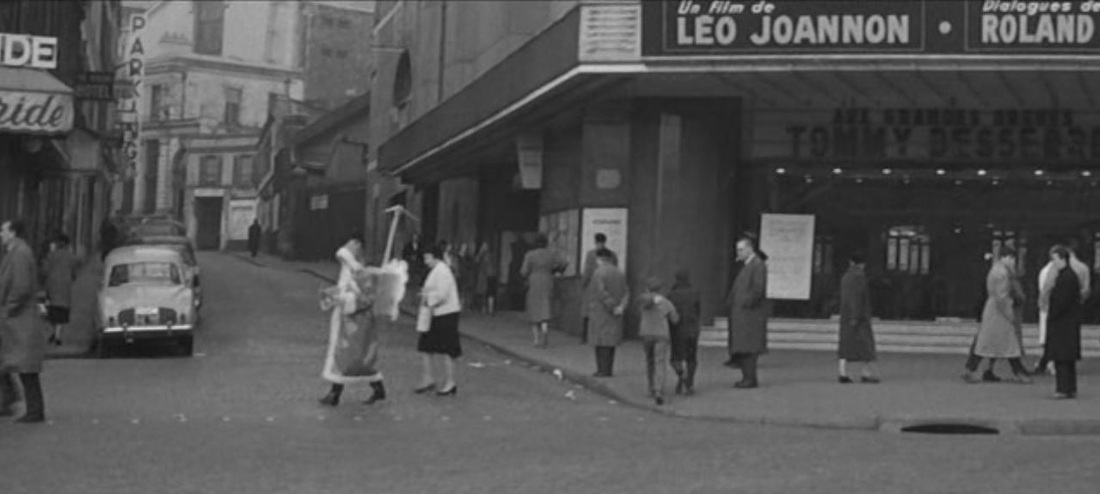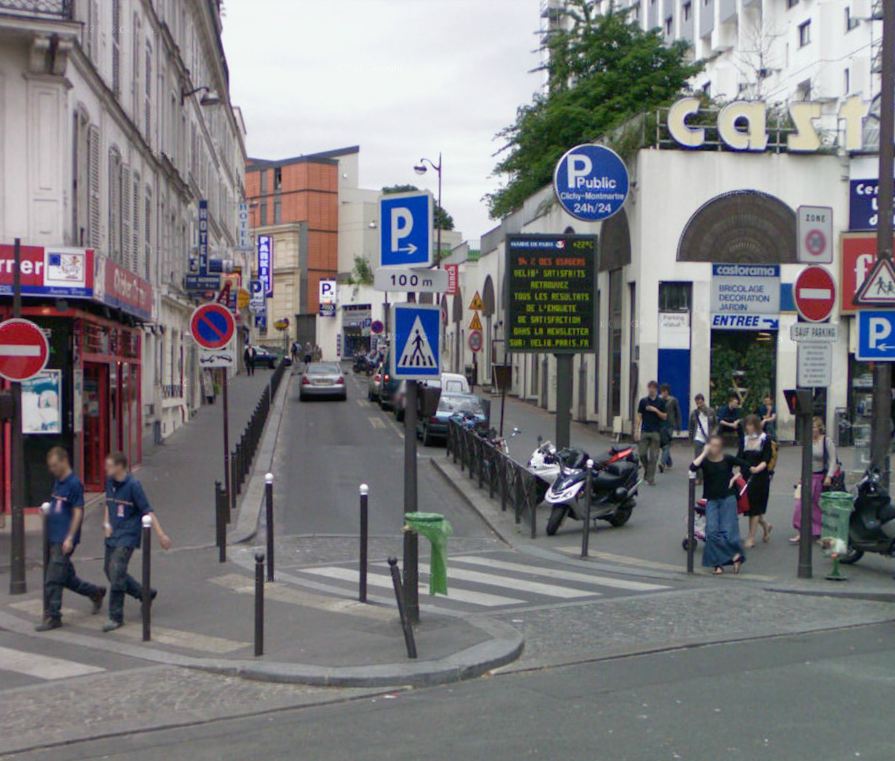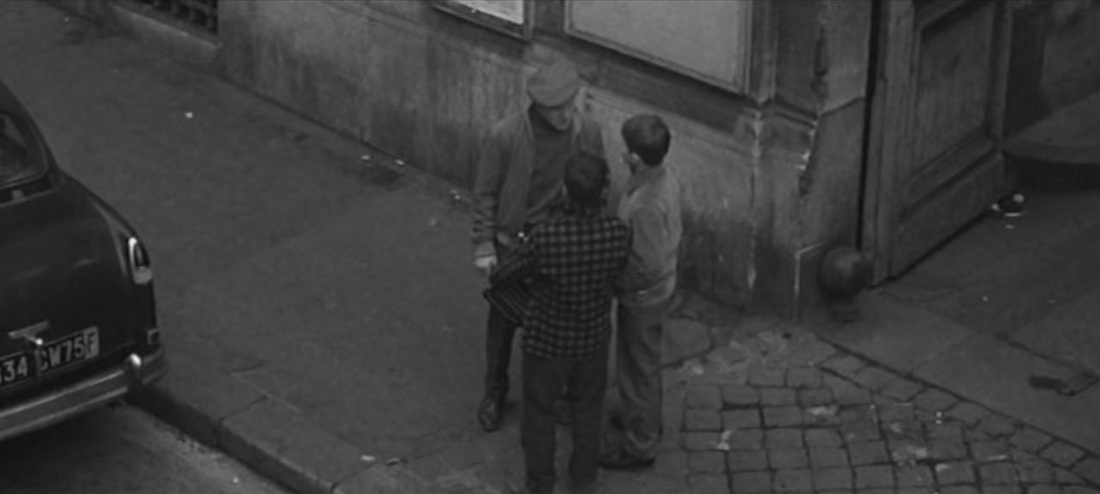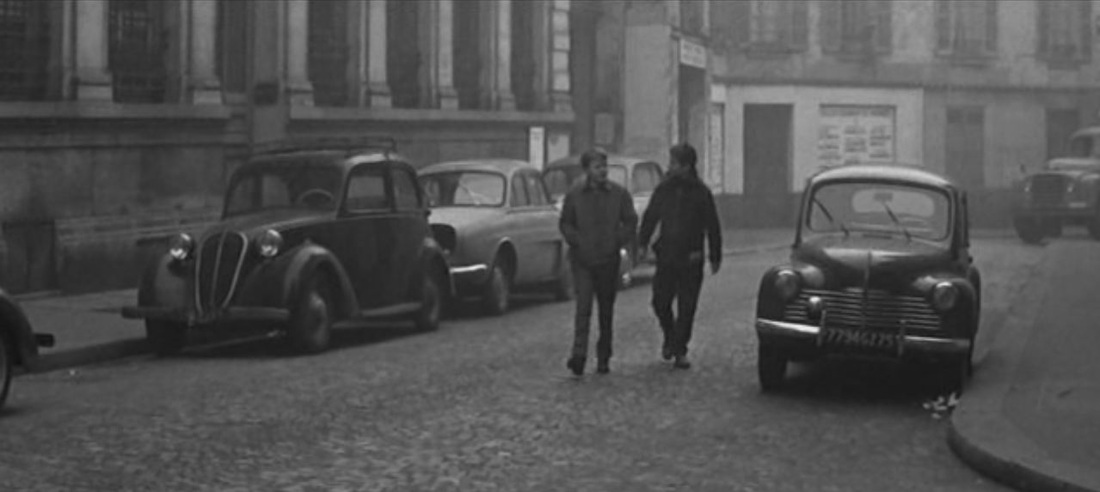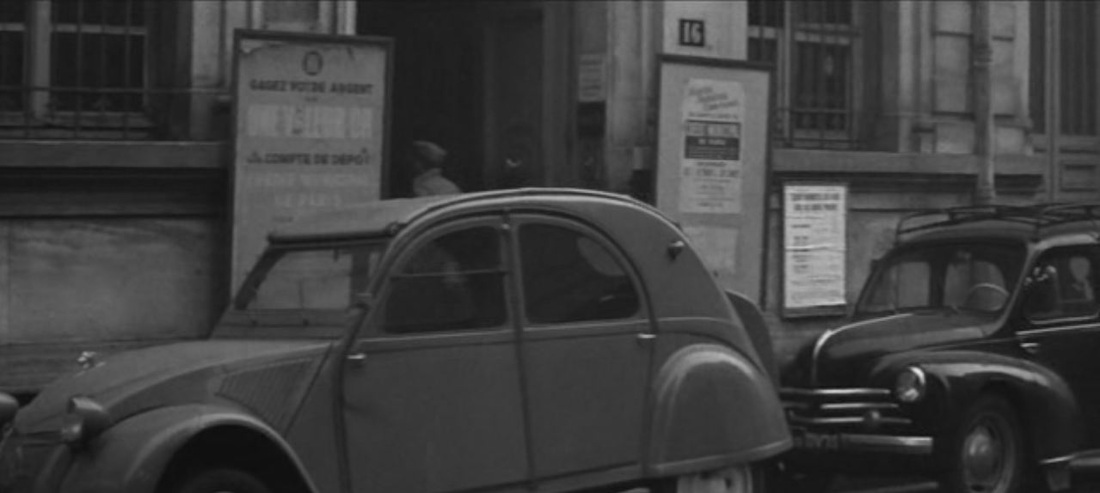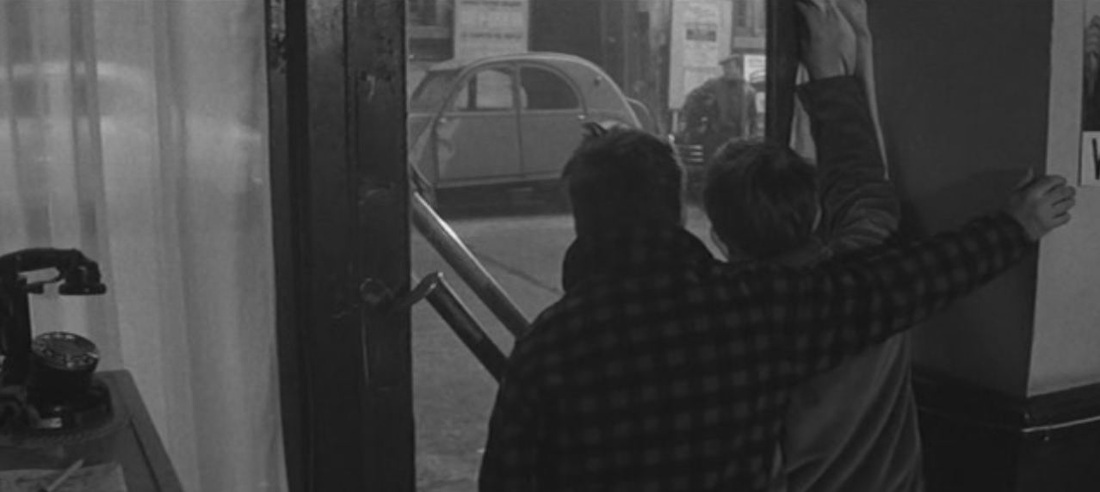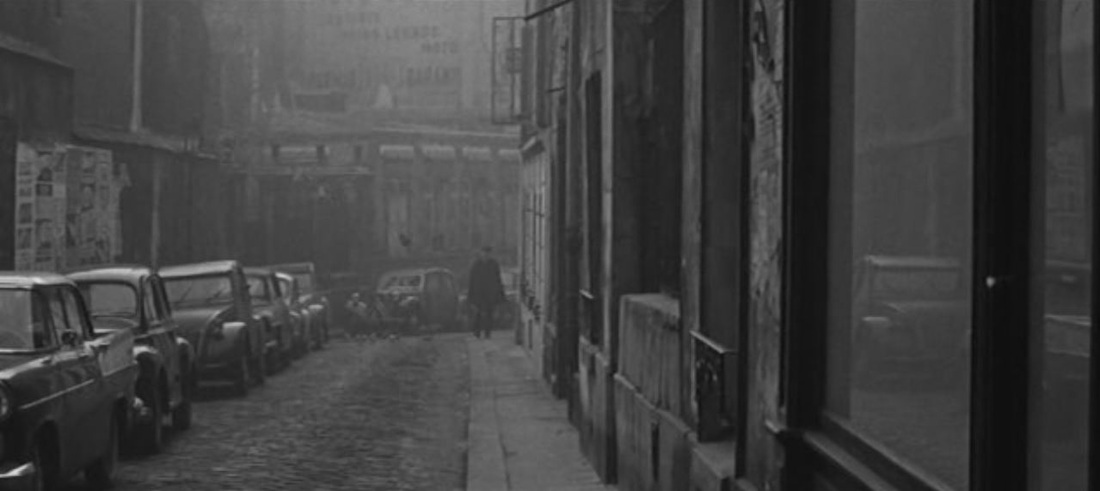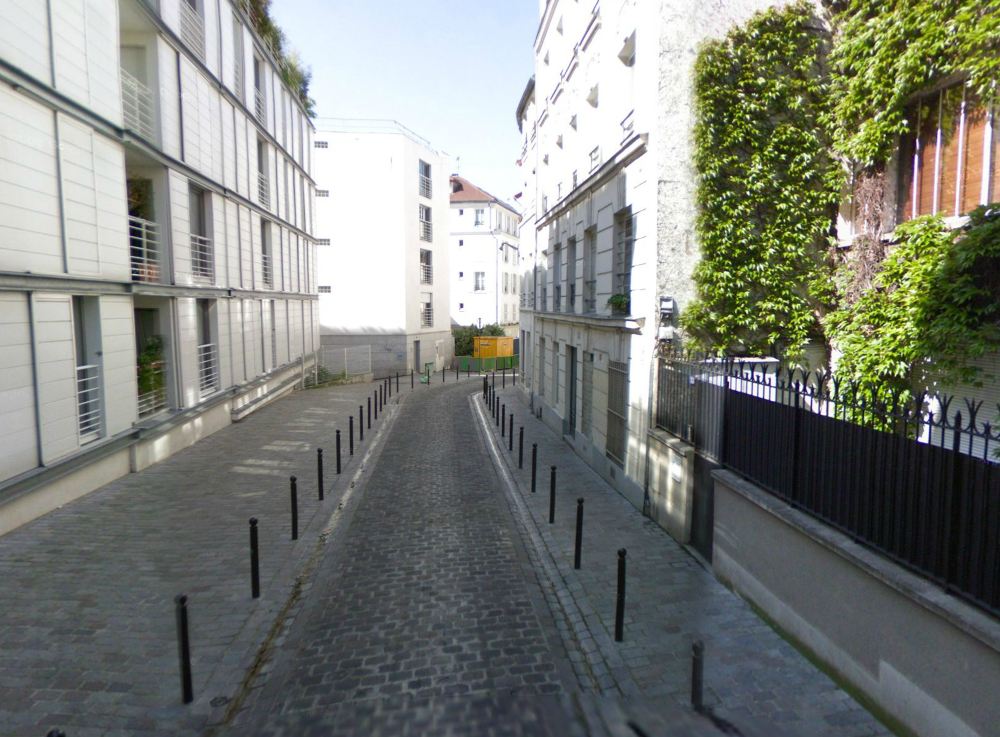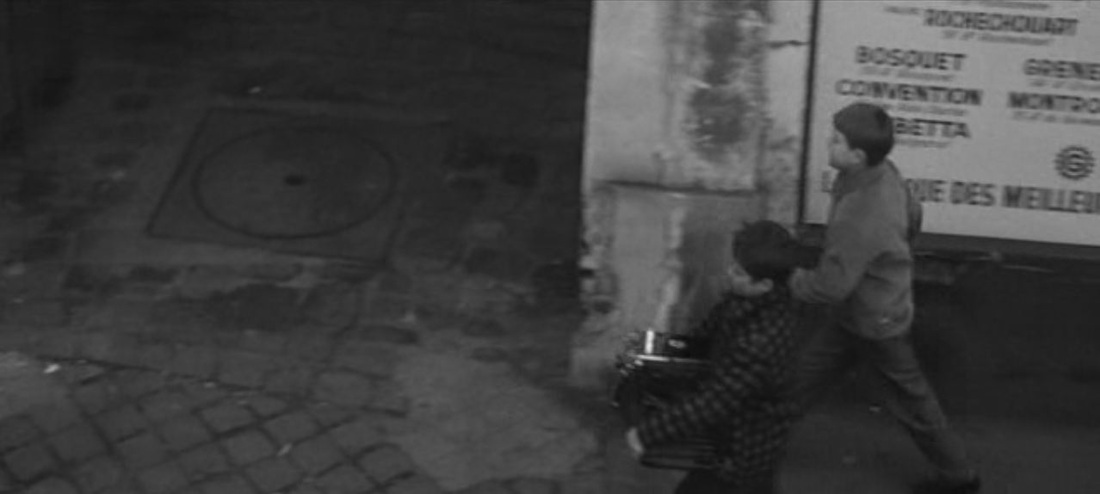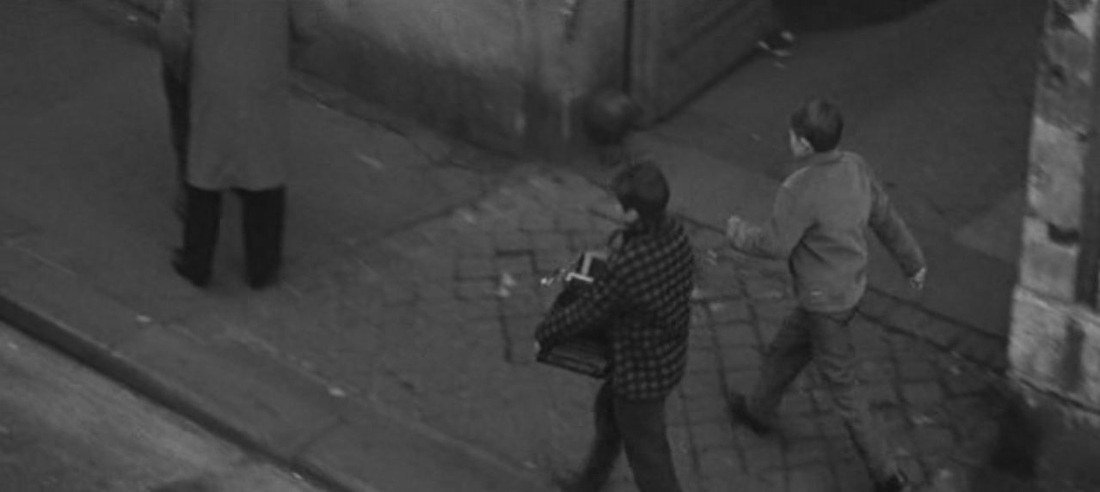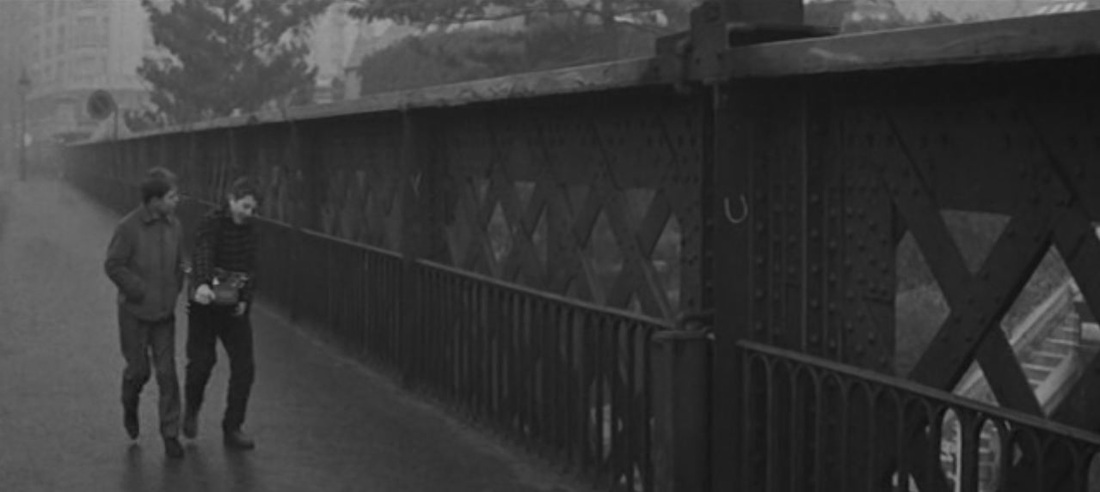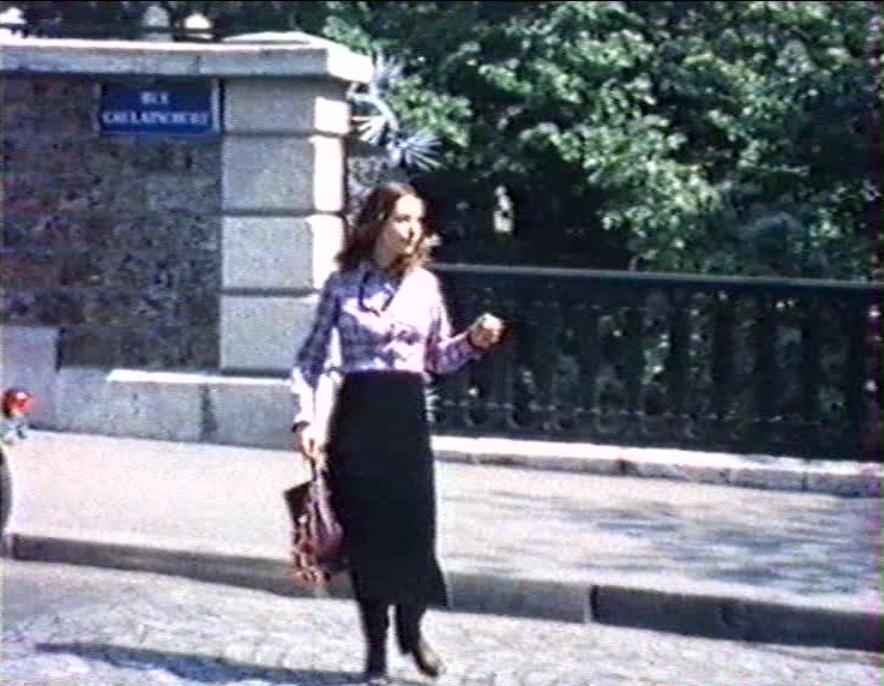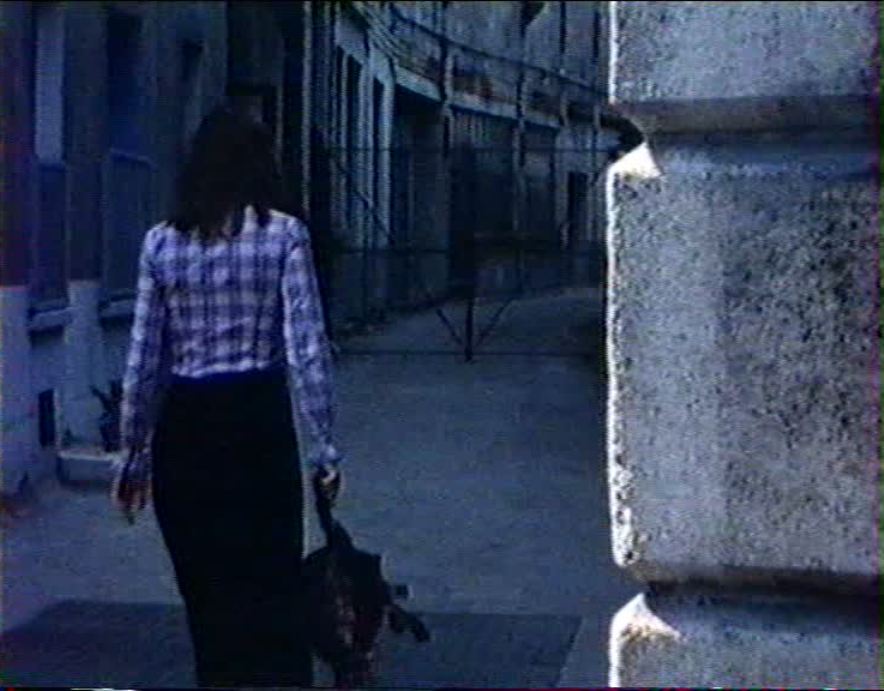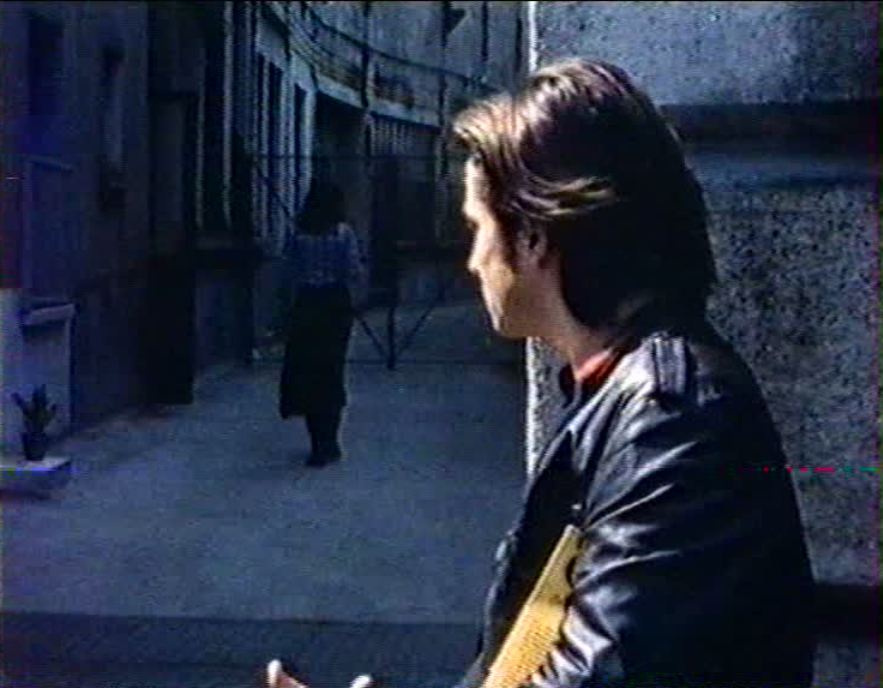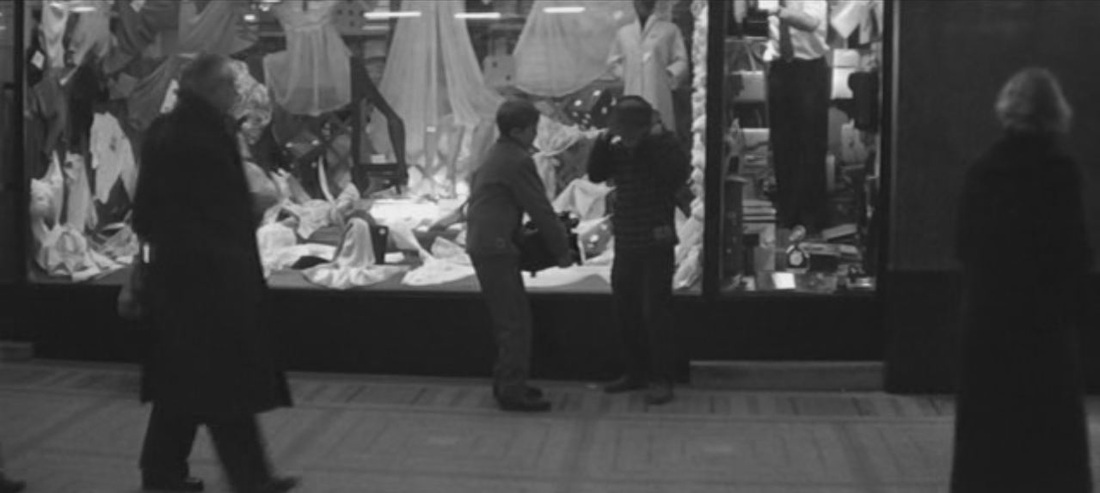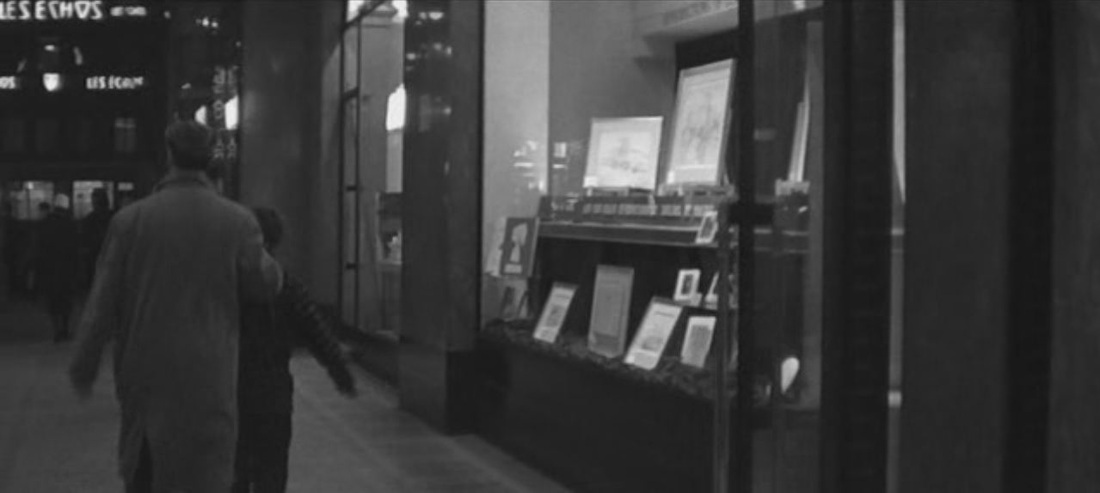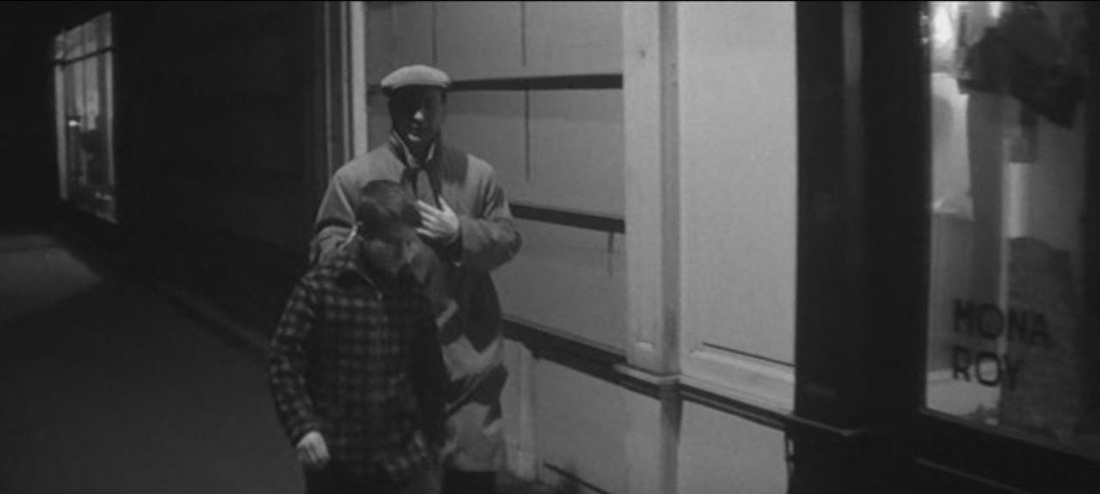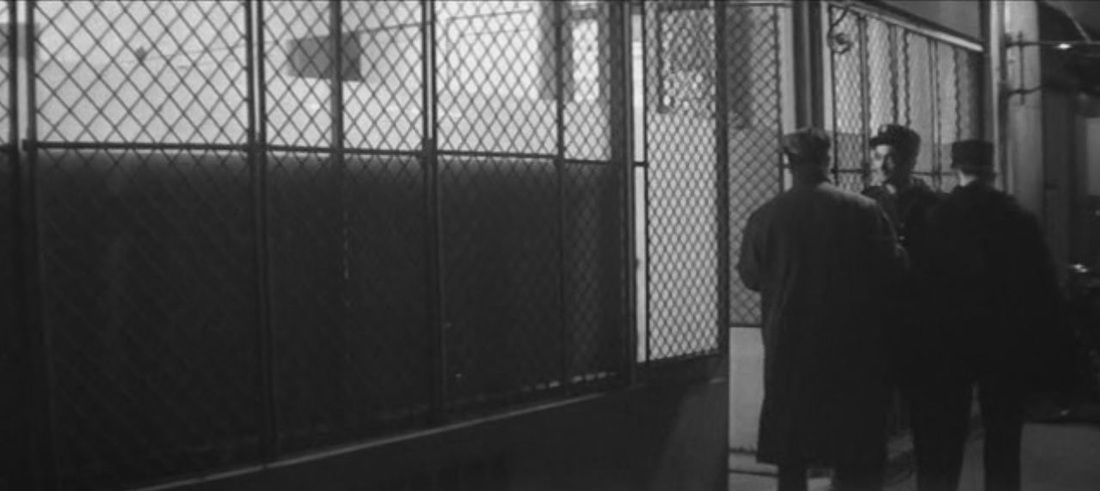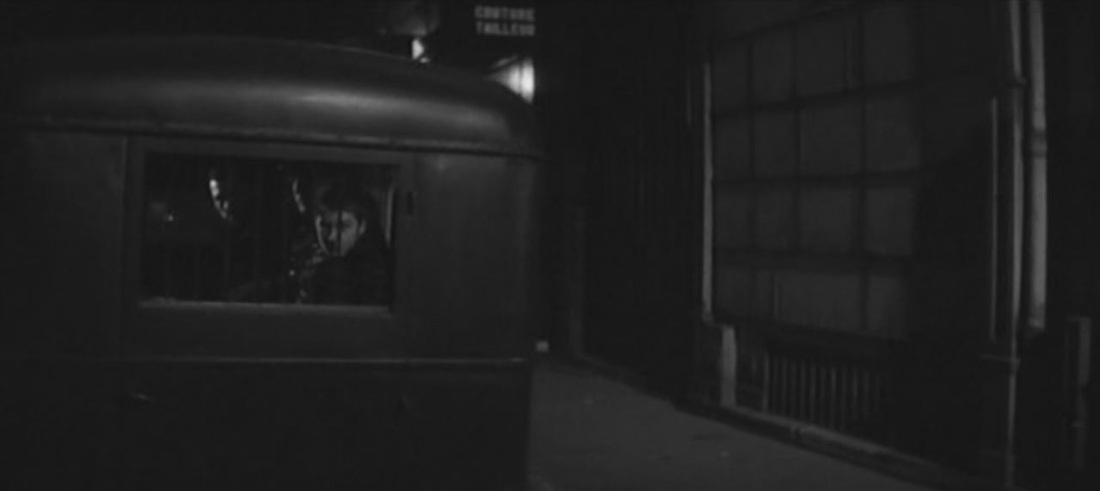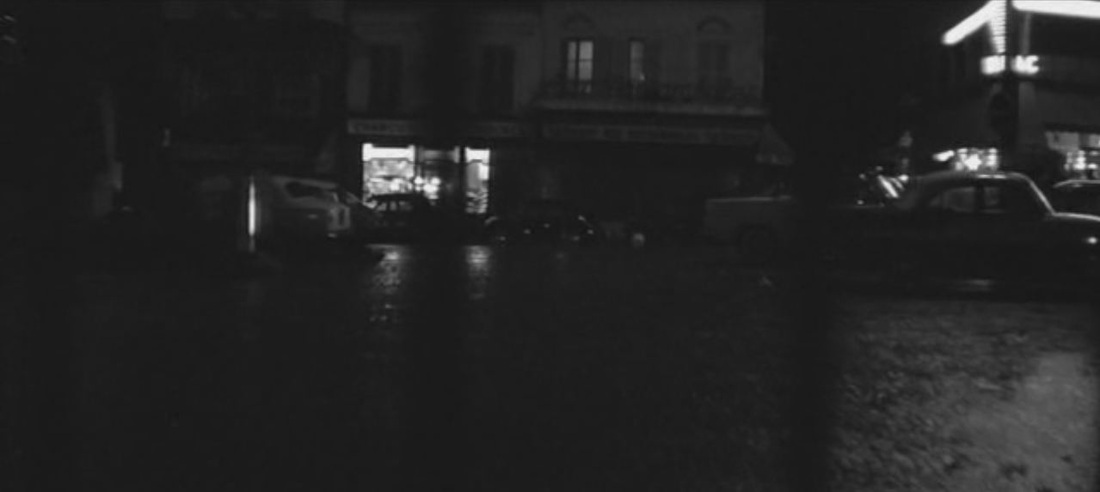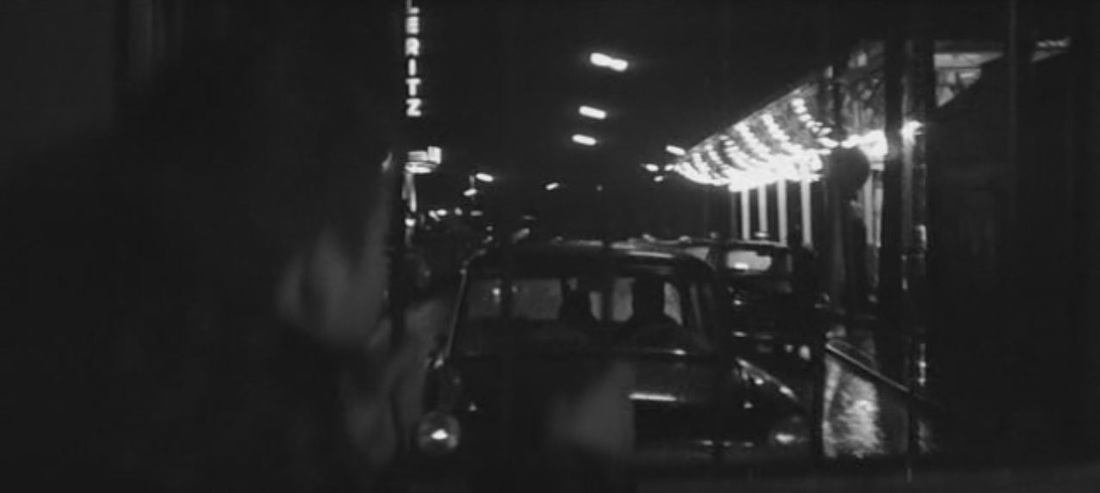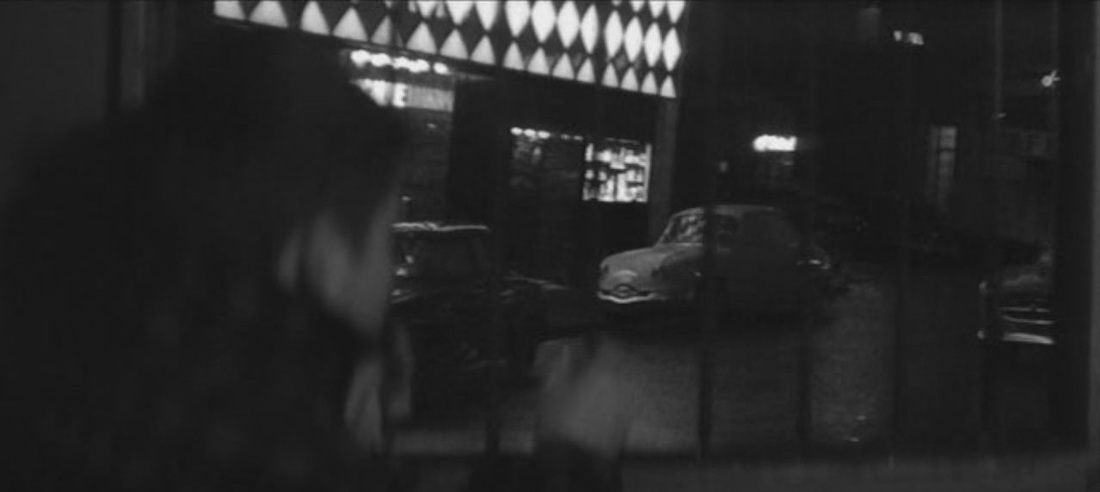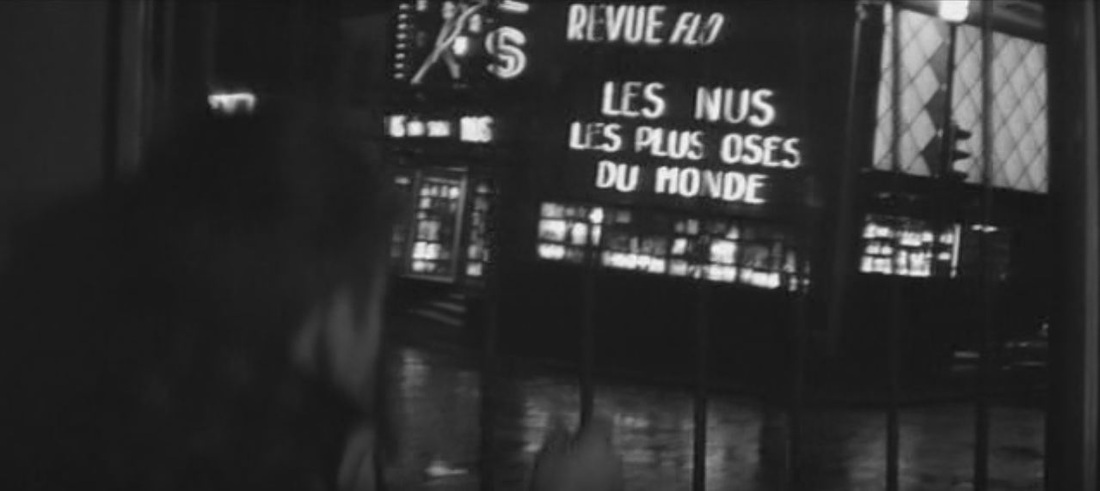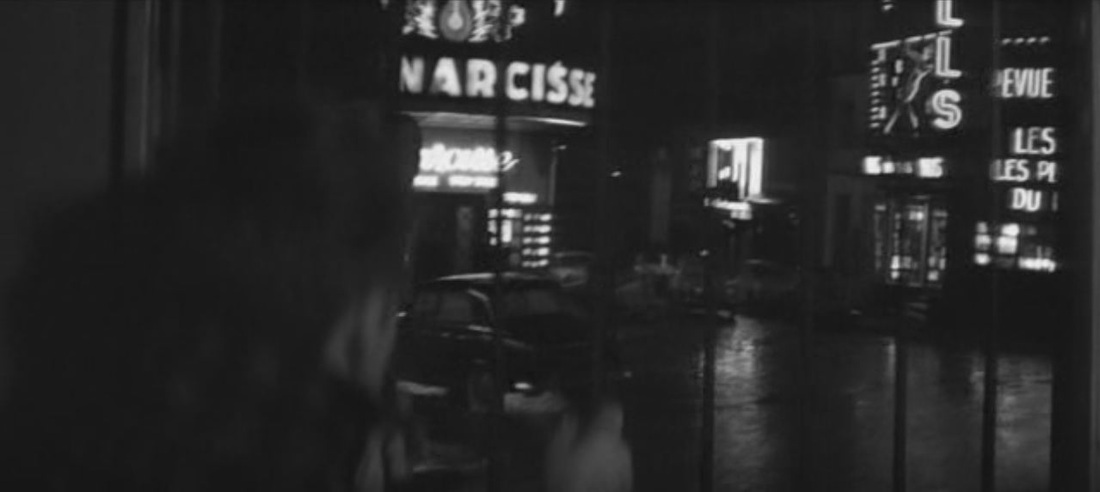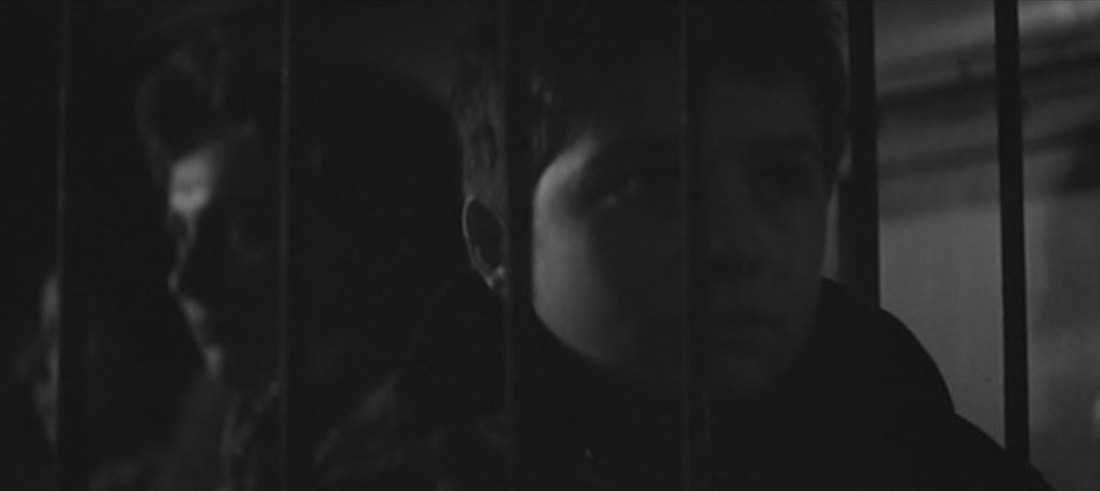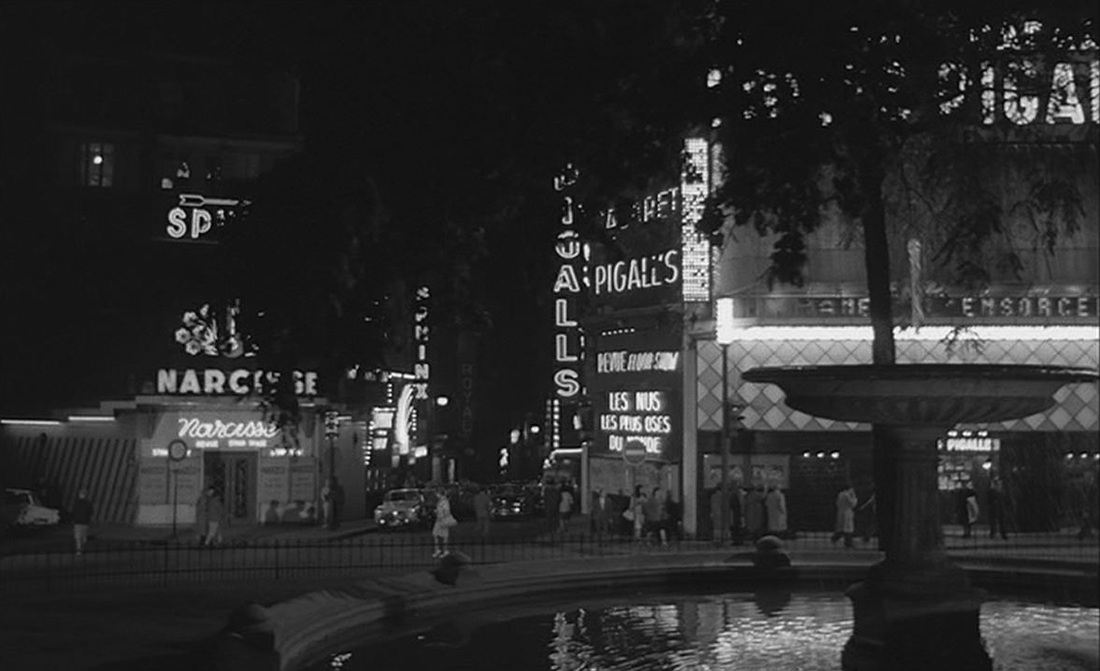Paris in Les 400 coups
(A post identifying as many Paris locations as possible in Les 400 coups, with a minimum of commentary. For the maps in this film, see here.)
a/ the Eiffel Tower
The credit sequence is made up of eight tracking shots, all featuring the Eiffel Tower. In the first five the tower appears intermittently amongst buildings or through trees, in the last three it is viewed more directly.
The credit sequence is made up of eight tracking shots, all featuring the Eiffel Tower. In the first five the tower appears intermittently amongst buildings or through trees, in the last three it is viewed more directly.
1/ a forward tracking shot along the rue de l'amiral d'Estaing, 16e, towards the rue de Lubeck:
2/ a left-to-right tracking shot across the place d'Iena, 16e, with a view of the statue of Washington (made by Daniel Chester French in 1900):
3/ a right-to-left tracking shot along the rue de la Fédération, 15e, beginning at the junction with the rue du Capitaine Scott:
The camera tracks past a succession of fine-looking industrial buildings, all of which seem to have been demolished only recently.
4/
a right-to-left tracking shot along the avenue du Président Wilson, 16e, from level with the rue de la Manutention, past the Palais de Tokyo to level with the rue Gaston de Saint Paul:
5/ a forward tracking shot along the avenue Emile Pouvillon, 7e, towards the avenue Elisée Reclus:
Beginning with a close view of the Eiffel Tower from the avenue Gustave Eiffel, this is a right-to-left tracking shot that pans left-to-right at the same time to end as a reverse tracking shot heading west towards the avenue Octave Gréard while looking east towards the avenue Silvestre de Sacy:
7/ This is a reverse tracking shot heading east towards the avenue Silvestre de Sacy while looking east towards the avenue Octave Gréard - the mirror image of how shot 6 ends:
8/ I am not absolutely sure of this identification but in this reverse tracking shot I think the camera is heading south down the allée Thomy Thierry towards the Ecole militaire while looking north towards the avenue Octave Gréard:
Looking south towards the Eiffel Tower from across the river, shots 1, 2 and 4 belong together as a movement towards and past the Palais de Tokyo, though the tracking in shot 2 would have to be right-to-left to correspond to a logical sequence. They are, anyway, interrupted by shot 3, taken on the same side of the river as the tower, from the west. Shot 5 can be paired with shot 3 as a complementary view from the east side of the tower, and with the first part of shot 6 we have views from west, east and south to balance the three views from the north, from across the river. The end part of shot 6 and the following shots form a pattern of reverse movements away from the tower, towards the west, east and south.
b/ school
The schoolroom interiors were shot here. We see the schoolyard, but I don't know if this is also 85 rue de Vaugirard:
c/ home
Antoine lives with his mother and stepfather at 4 rue Henri Monnier, 9e, overlooking the place Gustave Toudouze.
[correction: the building is actually 4 place Gustave Toudouze - my thanks to René Marx for the information.]
[correction: the building is actually 4 place Gustave Toudouze - my thanks to René Marx for the information.]
According to Vincent & Saint-Exupéry (Paris vu au cinéma p.252), the interiors were filmed in an apartment at 82 rue Marcadet, 18e.
d/ the first 'fugue'
A working title for the film was 'les fugues d'Antoine'. Antoine and René leave their schoolbags in the doorway of 53 avenue Trudaine, 9e:
Places seen in the course of this fugue include the Astor cinema, 12 boulevard Montmartre, 9e - the film playing is Liane, die weiße Sklavin (Hermann Leitner 1957):
the Cineac Italiens, 5 boulevard des Italiens, 2e - the film playing is The Shanghai Story (Frank Lloyd 1954):
Antoine and René cross the boulevard Montmartre, 9e, near the entrance to the passage des Panoramas:
They play pinball in a café opposite a shop called 'Joelle', which I think was at 6 rue Pierre Demours, 17e:
Antoine rides a 'Rotor' fairground attraction on the boulevard de Clichy:
(That's Truffaut with the cigarette.)
Antoine and René walk east along the boulevard de Clichy, past the Brasserie Wepler at 14 place de Clichy, 18e:
Antoine and René walk east along the boulevard de Clichy, past the Brasserie Wepler at 14 place de Clichy, 18e:
Antoine sees his mother kissing her lover (the critic Jean Douchet) at the entrance to Place de Clichy métro station:
They walk across the rue des Martyrs, 9e, to retrieve their bags in the avenue Trudaine (that's the entrance to the cité Malesherbes behind them):
They are here inside the cité Malesherbes, 9e:
e/ from home to school
The next day Antoine leaves his building (4 rue Henri Monnier, 9e) and runs down to the junction with the rue Clauzel:
In the next shot he is crossing the road to meet René by the Pressing Netomatique, at 40 rue Notre Dame de la Lorette, 9e, at the junction with the rue Henri Monnier:
In crossing this road he is in fact heading back towards where he lives. He and René talk a moment and then head off to school:
f/ the second fugue
Antoine and René talk on the stairs leading from the rue Caulaincourt to the avenue Rachel, 18e, by the cimetière de Montmartre (they arrange to meet in an hour in the place Pigalle, but we don't see that scene):
Antoine beds down in a printing works (rue du Croissant, 2e, according to Les Aventures d'Antoine Doinel, p.22), but has to leave when workers arrive. He wanders the streets.
Jeanne Moreau comes out of a doorway at 146 rue Montmartre, 2e:
Jeanne Moreau comes out of a doorway at 146 rue Montmartre, 2e:
Two café-restaurants, unidentified:
Rue Lepic, 18e, looking down towards Café de la Place Blanche, at 5 place Blanche .
Whether or not the two unidentified restaurants are stages along the way, from the rue Montmartre to the rue Lepic is quite a distance to walk, a straightish line up through the rue du Faubourg Montmartre, the rue Notre Dame de la Lorette (past his home) and the rue Fontaine to the place Blanche.
Antoine takes milk from outside the alimentation générale at no.3 rue Lepic:
Antoine takes milk from outside the alimentation générale at no.3 rue Lepic:
Rue Puget, 18e,
looking down towards Le Palmier, a café at 7 place Blanche. Antoine drinks the milk and disposes of the bottle in that drain, bottom right of the Google Maps picture:
The two shots of him with the milk bottle are both in the rue Puget, but they are linked by a curiously uneven dissolve, suggesting time and distance, though neither seems to separate these two shots:
(That is a poster for Chaplin's The Goldrush.)
Antoine has walked straight down the rue Blanche to the église de la Sainte-Trinité, on the place d'Estienne d'Orves, 9e. This is again quite a large distance.
Antoine has walked straight down the rue Blanche to the église de la Sainte-Trinité, on the place d'Estienne d'Orves, 9e. This is again quite a large distance.
g/ from school to home
Antoine's mother takes him home from school via the rue des Martyrs, 9e, here at the corner with the rue Manuel:
The teacher and pupils leave 85 rue de Vaugirard, 6e, heading south west:
Antoine and René leave the group here, at 102 rue de Vaugirard, 6e, junction with the rue Jean Ferrandi. The peloton is still walking south west but is further back up the street, heading towards the school, and is on the opposite side of the street:
(The graffiti relates not to Jean Giraudoux but to his son, Jean-Pierre, who had stood in the legislative elections of November 1958.)
The teacher and what remains of the pupils are at the junction of the rue d'Assas and the rue de Rennes, 6e. It is as if they had turned around and headed back up the rue de Vaugirard, then turned left into the rue d'Assas.
The teacher and what remains of the pupils are at the junction of the rue d'Assas and the rue de Rennes, 6e. It is as if they had turned around and headed back up the rue de Vaugirard, then turned left into the rue d'Assas.
h/ a night out
The family goes to the cinema, the Gaumont Palace, 1 rue Caulaincourt, 18e:
They are supposed to have seen Rivette's Paris nous appartient, though that film wouldn't be finished until more than a year later.
An unidentified restaurant, and a view of a neon-lit street (the boulevard de Clichy, probably):
An unidentified restaurant, and a view of a neon-lit street (the boulevard de Clichy, probably):
The streets on their journey home are hard to identify but presumably somewhere between the Gaumont Palace and the place Gustave Toudouze. This, at least, is the place de Clichy:
i/ chez René
René's house on the avenue Frochot, 9e. There are no Google Map images of this private street:
If that is a number 7, then this is Jean Renoir's house. This shot dissolves to a shot of René with his father, played by Georges Flamant, who played Dédé in Renoir's La Chienne (1931). Truffaut visited Renoir at the avenue Frochot in the 1950s, so it seems logical that both house and actor are serving as a tribute.
[René Marx confirms that this was indeed Renoir's house. Again, my thanks for the information.]
[René Marx confirms that this was indeed Renoir's house. Again, my thanks for the information.]
René and Antoine look down onto the rue Fontaine, 9e. René's home is a confection, since this part of it cannot be connected to the entrance we saw earlier on the avenue Frochot.
The St Tropez bar, below, is at no. 9 rue Fontaine.
The St Tropez bar, below, is at no. 9 rue Fontaine.
j/ le Sacré Coeur
k/ a cinema and a café
|
A cinema.
The dialogue on the soundtrack is not from any film but is Chabrol's French version of Harry Purvis's pastiche film dialogue, published in the 1955 Cahiers du cinéma issue on the 'Situation du cinéma américain' (see here). |
A cinema foyer, from which they steal a photograph of Harriet Andersson in Bergman's Monika. The other images in the foyer are of the 1954 peplum by Riccardo Freda, Teodora, imperatrice di Bizanzio:
The café from which they steal the toilet attendant's tips and alarm clock:
(This is possibly at the junction of the place de Clichy and the avenue de Clichy.)
l/ the Champs Elysées
The avenue des Champs Elysées, near the Rond-Point. They are on the way to see the Guignol des Champs Elysées.
The galerie Elysées-La Boétie, at 37 avenue des Champs Elysées, where Antoine steals a typewriter:
The actual theft of the typewriter was filmed in the offices of Truffaut's father-in-law at 10 rue Hamelin, 16e.
That is no.1 rue Hamelin across the street, through the window behind Antoine:
That is no.1 rue Hamelin across the street, through the window behind Antoine:
When they leave the
galerie Elysées-La Boétie it is via the back entrance at 109 rue La Boétie, 8e:
They run onto the avenue des Champs Elysées. The Pharmacie anglaise, behind them, is at no.62 avenue des Champs Elysées:
m/ from the Champs to the place de Clichy
They go down into the métro at Franklin D. Roosevelt:
They go towards ligne 1, direction Pont de Neuilly. This is not the logical direction, since they should go the other way and change at Clemenceau-Champs Elysées for ligne 13 to Place Clichy, where they come out of the métro:
They come out of a different entrance from the one at which Antoine saw his mother earlier. They walk east along the boulevard de Clichy, 18e, towards the Gaumont Palace:
They pass the Floride which, is the hotel where Antoine lives at the beginning of 'Antoine et Colette', the 1962 sequel to Les 400 coups:
They turn into the rue Forest, 18e, alongside the Gaumont Palace:
From this view of the Gaumont Palace we can see that the film playing is not Rivette's Paris nous appartient but Joannon's Tant d'amour perdu (1958).
In the rue Forest they ask an adult to take the typewriter for them into the 'mont de piété' at no. 16 - an institutional pawnshop. They watch him from a café across the street, on the corner of the rue Capron, 18e:
In the rue Forest they ask an adult to take the typewriter for them into the 'mont de piété' at no. 16 - an institutional pawnshop. They watch him from a café across the street, on the corner of the rue Capron, 18e:
When he tries to double cross them they confront him in the rue Capron, and then all of them move on when a policeman appears:
Next they are on the rue Caulaincourt, on the bridge crossing the cimetière Montmartre (where Truffaut is buried), heading towards the boulevard de Clichy. There is no way here via streets except by going back the way they came down the rue Forest, in which case they would be walking the other way across the bridge, but there may have been a way via alleys behind the Gaumont Palace. When we saw them walking up the rue Forest earlier they passed two possible entrances to such an alley:
And though we don't see where they emerge onto the rue Caulaincourt, it could be from an alley exit that we see in a film twelve years later, Rivette's Out 1 - noli me tangere (part 5). Bernadette Lafont is walking on the same bridge, in the same direction. She crosses the road and goes down an alley that appears to run behind the Gaumont Palace:
By a remarkable coincidence, she is being watched as she does so by Jean-Pierre Léaud:
I like this intertext, but the alley-behind-the-cinema explanation doesn't stand up. Looking again at where Léaud is on the bridge in Les 400 coups, the boys came onto it much further up, so if their movements are to be logical (though there's no reason why they should be) they must have walked all way round the cemetery with the typewriter, turning left from the rue Capron into the rue Cavalotti, then right into the rue Ganneron, right into the rue Etex and right into the rue Joseph de Maistre, leading to the bridge over the cemetery, i.e. the rue Caulaincourt. (I don't think they did that.)
n/ from the place de Clichy to the Champs, then out of Paris
From the rue Caulaincourt, 18e, we cut to the galerie Elysées-La Boétie, 8e, almost two kilometres away. Antoine is caught returning the typewriter, and is taken out onto the Champs Elysées by his stepfather:
From the Champs Elysées, 8e, a cut to the rue Meissonier, 17e, where Antoine is handed over to the police. This is again about two kilometres, but the distance is not measured by the film, which doesn't say where exactly this obscure street is. The police station entrance is definitely at 5 rue Meissonier, and not on the nearby rue Jouffroy d'Abbans as some sources say. The building on the rue Jouffroy d'Abbans backs onto this address:
One of those policemen is Jacques Demy.
From this police station Antoine is taken off in a van, leaving Paris for good:
From this police station Antoine is taken off in a van, leaving Paris for good:
In three shots we see the last things of Paris he sees. The first shows the junction of the boulevard de Clichy and the rue André Antoine:
The second includes a view of Le Ritz cinema at 6 boulevard de Clichy:
(My thanks to Barry Delargy for the above two identifications.)
The last is the place Pigalle, taking in the Folies Pigalle, Pigall's and Narcisse:
The last is the place Pigalle, taking in the Folies Pigalle, Pigall's and Narcisse:
The above is a view of the place Pigalle from the next film in which Léaud starred, Julien Duvivier's Boulevard (1960).
References
- Serge Toubiana & Antoine de Baecque, François Truffaut (Paris: Gallimard, 1996)
- François Truffaut, Les Aventures d'Antoine Doinel (Paris: Mercure de France, 1970)
- Marie-Christine Vincent & François de Saint-Exupéry, Paris vu au cinéma (Paris: Movie Planet, 2003)
